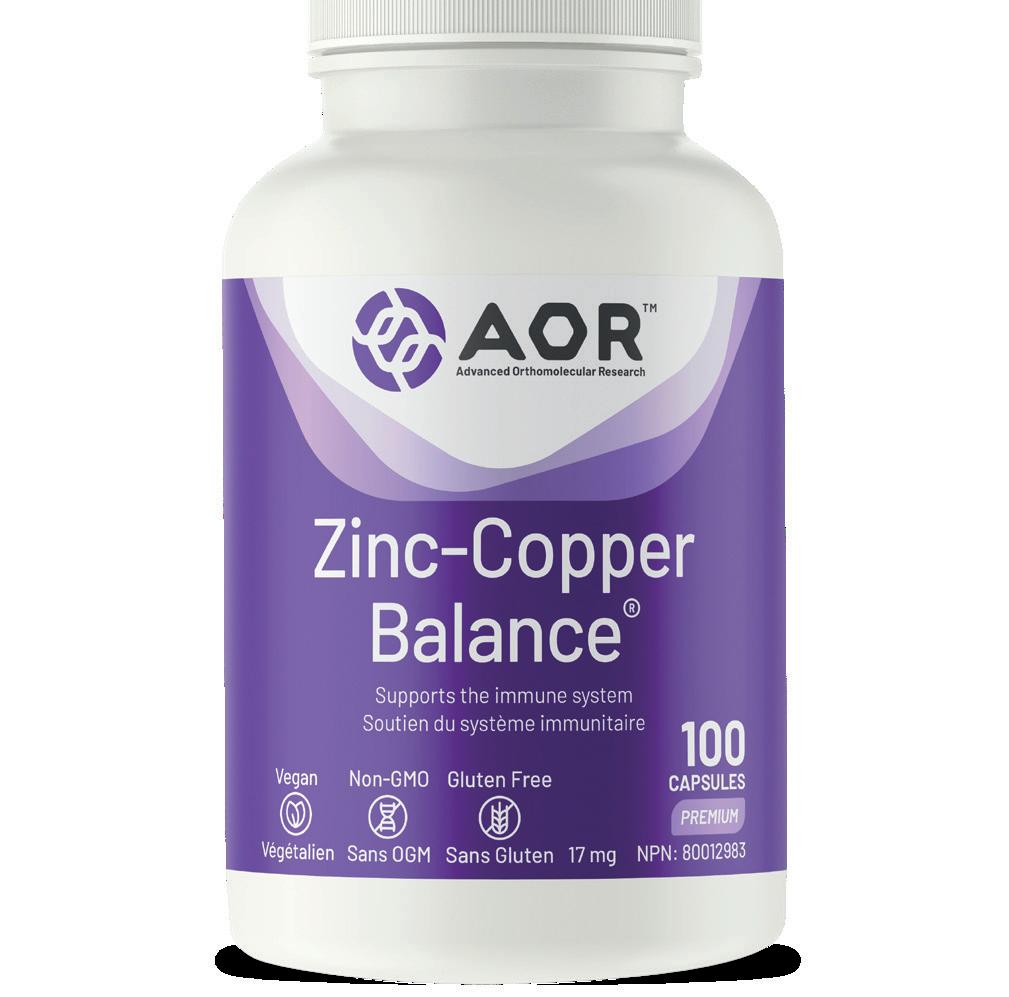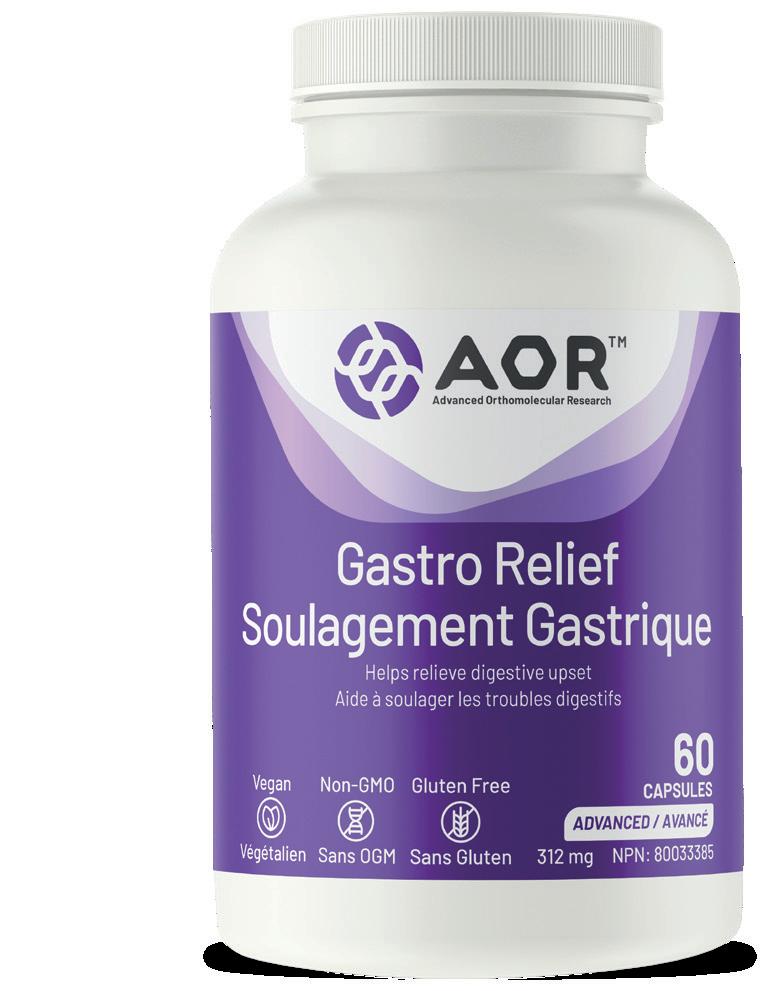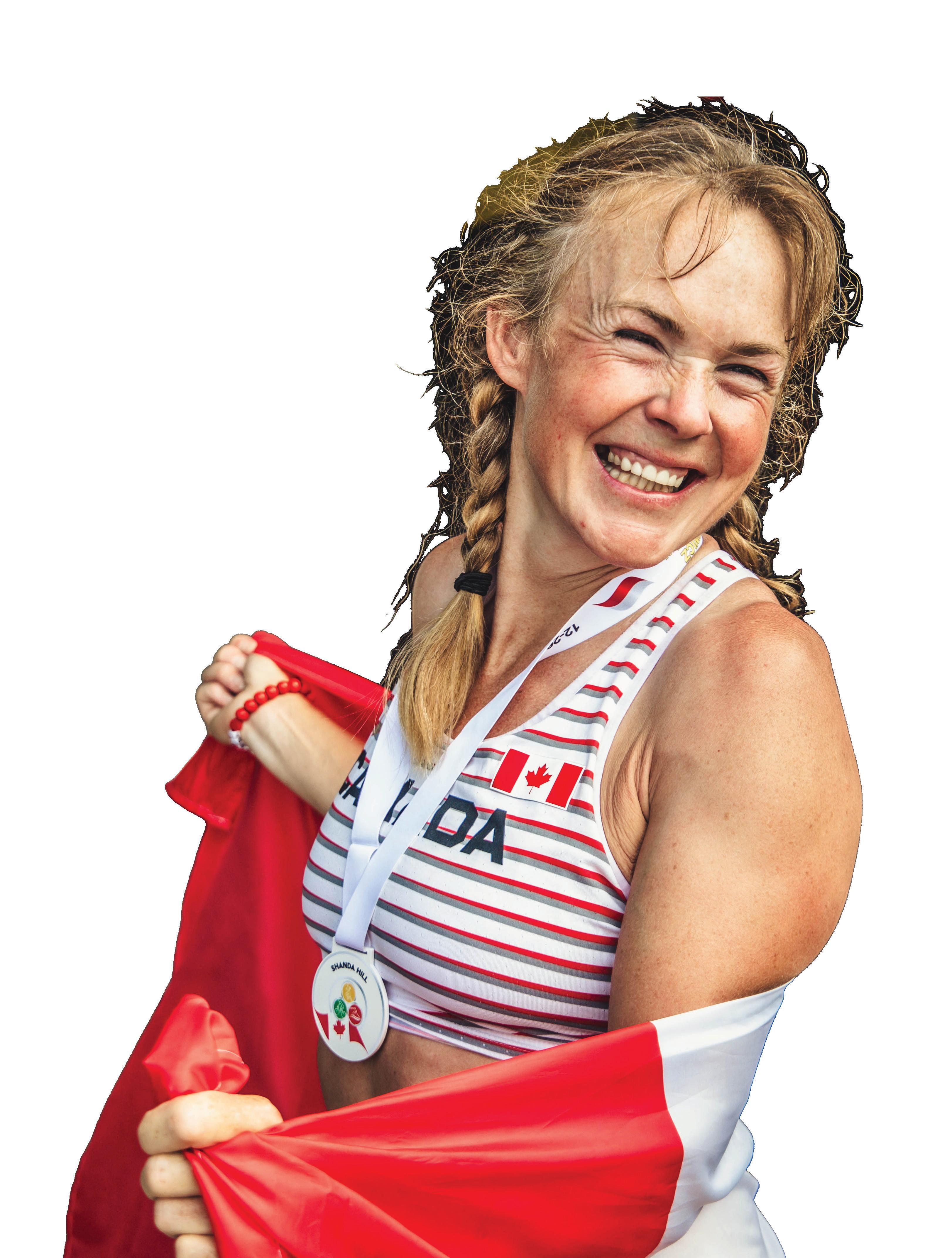


















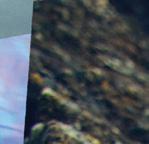






























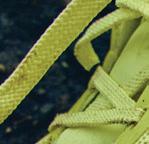

































































































































Let’s run there ’




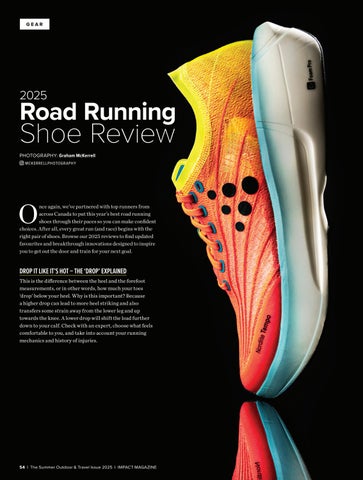




















































































































































































Let’s run there ’









Ever wondered how astronauts preserve muscle health in zero-gravity environments? It’s all about amino acids — extensively researched to stimulate protein synthesis in the most extreme conditions. This inspired us to create MuscleRescue, a precise blend of all 9 essential amino acids to support muscle strength, mobility and recovery, for all of life’s adventures.

Scan here to learn more.


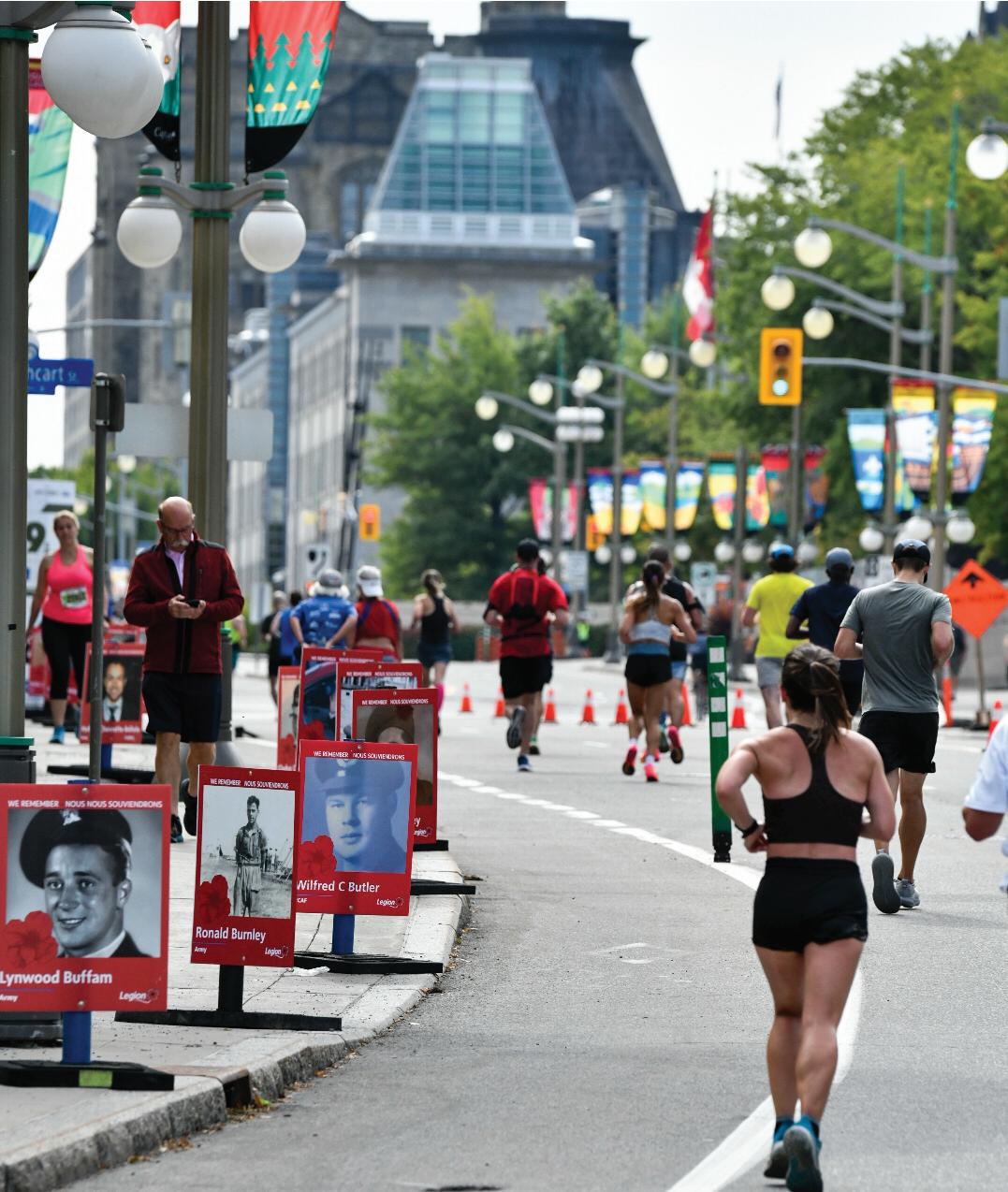











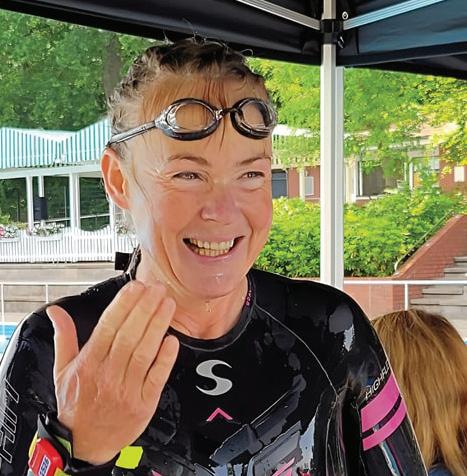
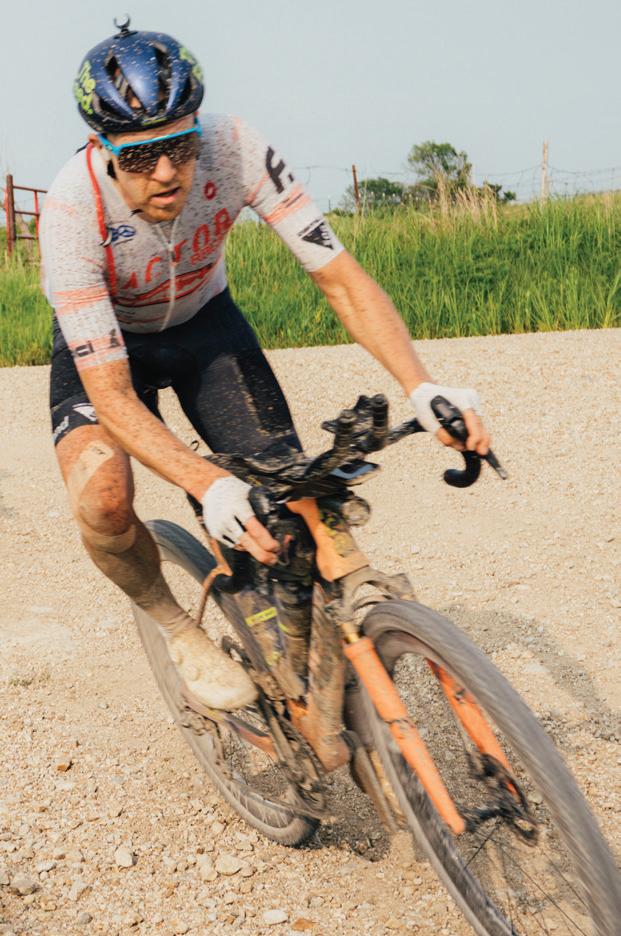

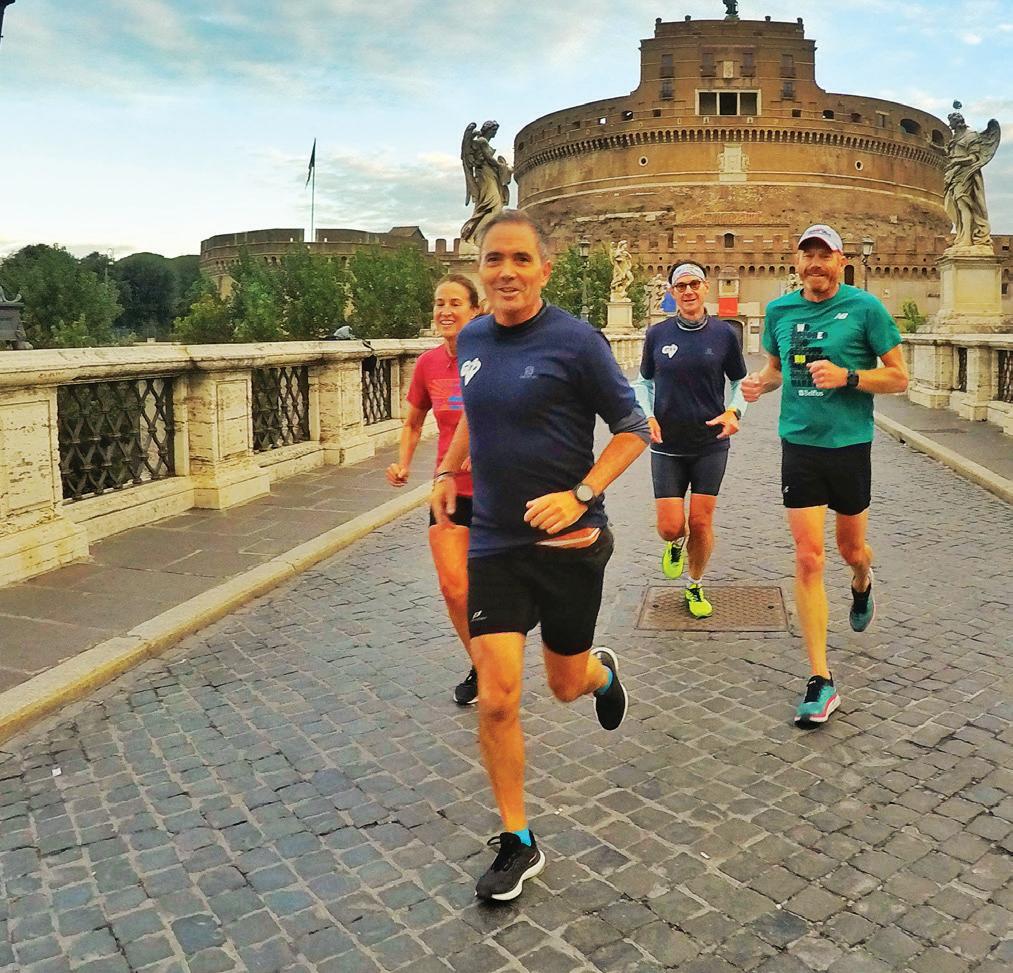
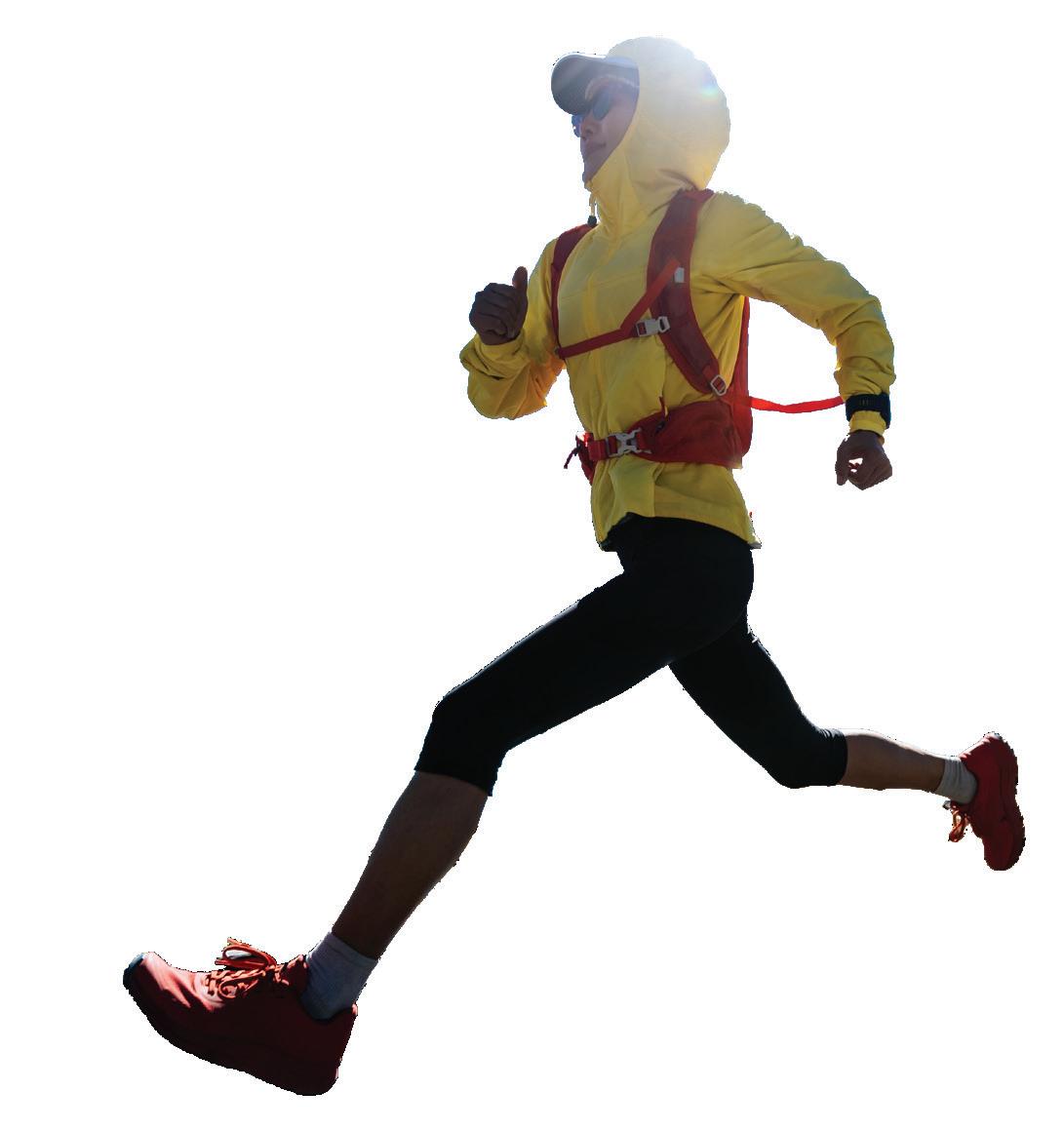

A leader in the industry for 34 years, IMPACT Magazine is committed to publishing content provided by the best experts in their fields for those who aspire to higher levels of health and fitness.
PUBLISHER & EDITOR-IN-CHIEF Elaine Kupser elaine@impactmagazine.ca
GUEST EDITOR Emily Meyer emily.meyer.content@gmail.com
ART DIRECTION & GRAPHIC DESIGN Marc Morin - Impello Inc marc@impello.com
COPY EDITORS Tom Lundteigen Louise Hodgson-Jones
GRAPHIC DESIGN Michelle Gjerde michellegjerde@gmail.com
SOCIAL MEDIA COORDINATOR Michelle Clarke michelletherunner@gmail.com
ADVERTISING advertising@impactmagazine.ca
LEGAL COUNSEL Gregory Forrest PRINTING TC Printing DISTRIBUTION Media Classified Maple Leaf Distributors
CONTACT IMPACT Magazine Head Office 2007 2nd St. S.W. Calgary, AB T2S 1S4 403.228.0605
SUBSCRIPTIONS
$45 for one year, or $70 for two years (includes GST) impactmagazine.ca/subscriptions
WEBSITE www.impactmagazine.ca
SOCIAL impactmagcanada impactmag impactmag ImpactMagTelevision




The opinions expressed in IMPACT Magazine are the writers’ and not necessarily those of the publication. IMPACT Magazine advises you to consult your physician if you do not follow a regular fitness program. All content is the property of IMPACT Productions Inc. and cannot be reproduced in any form without written consent of IMPACT Productions Inc. © 2025 Impact Productions Inc.





2 1 . 1 K M · 8 K M · K I D S R A C E
C O W B O Y S P A R K R O A D R A C E

C A L G A R Y ’ S O N L Y F A L L R O A D
H A L F M A R A T H O N
F a s t . F l a t . S c e n i c . D o w n t o w n . L o c a l .

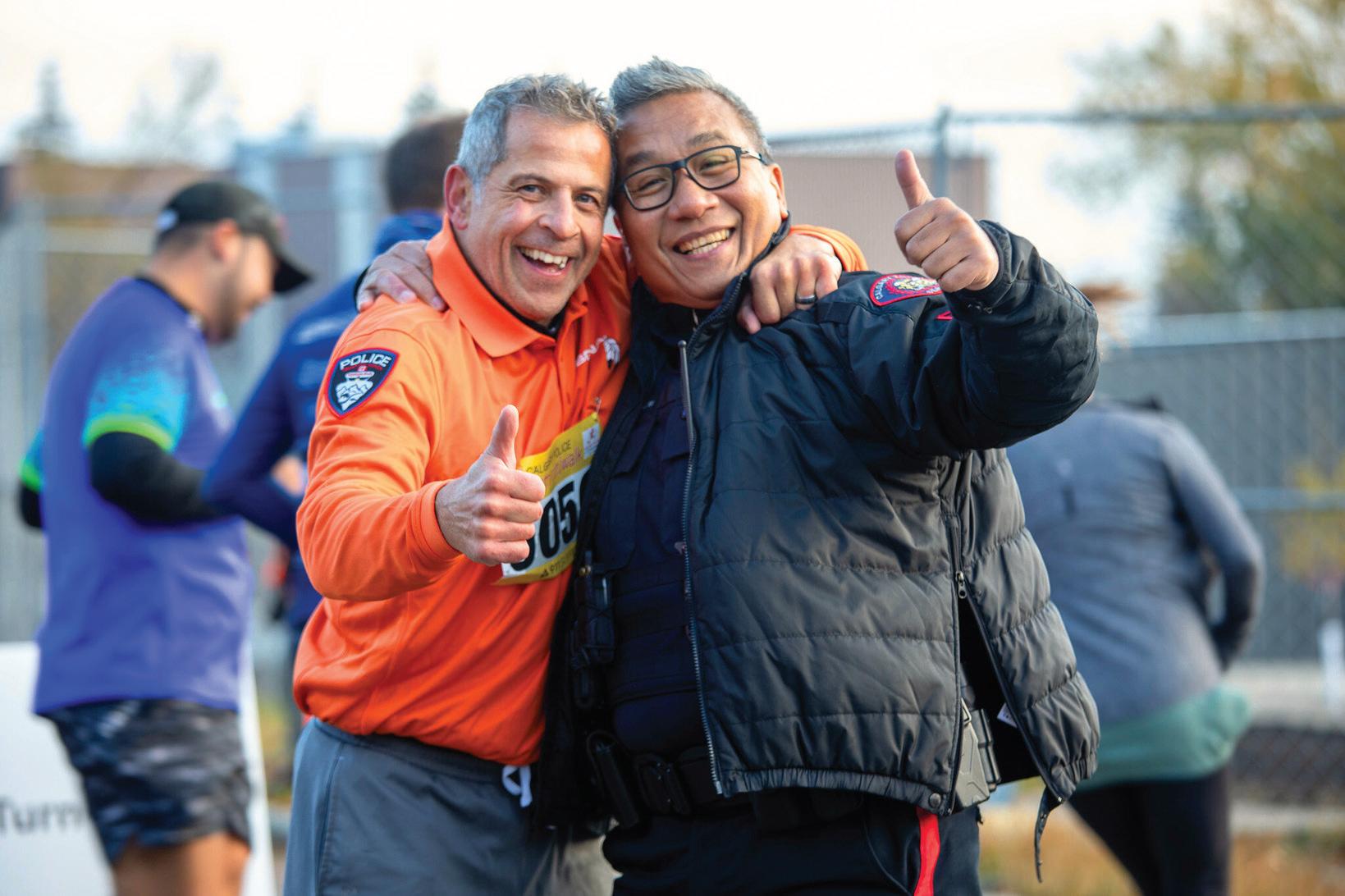
P O S T - R A C E C E L E B R A T I O N S
G e t r e a d y f o r a d o n u t p a r t y , f o o d
t r u c k s , l i v e D J , p h o t o s o p s & m o r e !
R u n , w a l k o r u s e y o u r a d a p t i v e d e v i c e .
O N - C O U R S E E N T E R T A I N M E N T
L i v e m u s i c , f i r s t r e s p o n d e r c h e e r
s t a t i o n s , a n d m o r e !

O T H E R P E R K S
O p p o r t u n i t y t o f u n d r a i s e f o r t h e
C a l g a r y P o l i c e Y o u t h F o u n d a t i o n .
F l a t r a t e y o u t h p r i c i n g o f $ 2 0 f o r
a l l y o u t h 1 8 a n d u n d e r .



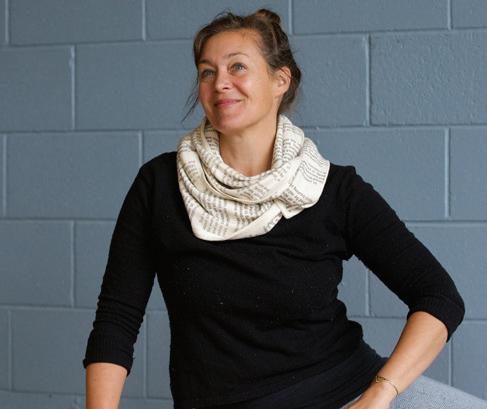



Sean is the owner and head coach of Backcountry Strength in Chilliwack, B.C. He helps people from coast to coast move better, get stronger, and massively boost their endurance so they can conquer their outdoor adventure goals. He is also one of our Canada’s Top Fitness Trainers in 2022 & 2024.
SEANALLTCPT
Bestselling author, speaker, and a leader in the exercise movement, Katy is a biomechanist changing the way we move and think about our need for movement with her company, Nutritious Movement. She teaches movement globally and speaks about sedentarism and human movement ecology to academic and scientific audiences, and is based in Carlsborg, WA.
NUTRITIOUSMOVEMENT NUTRITIOUSMOVEMENT
Geoff is a Calgary, AB-based Amazon bestselling author, former NHL therapist for the Vancouver Canucks, founder of Alignment First Inc., and developer of the Alignment First Protocol, a proprietary corrective exercise system.
GEOFF.DAKIN
Julie is a registered holistic nutritionist and an anti-inflammatory expert, public speaker and award-winning author of five bestselling books. You may know her best as a resident nutrition expert for the #1 Canadian Daytime TV program, The Marilyn Denis Show. Based in Toronto, ON.
JULIEDANILUK
Val is a coach, competitive athlete, and the founder & owner of The Studio MTL, an inclusive training space in Montreal, QC. She holds a Master’s Degree from NYU, a certificate in Lifestyle Medicine from Harvard Medical School, and a certificate in PlantBased Nutrition from Cornell University.
PUMPFITNESSMTL
CONTRIBUTORS Sean Allt, Katy Bowman, Rosalie Brown, Scott Cruickshank, Geoff Dakin, Julie Daniluk, Val Desjardins, Katherine Engqvist, Zuzana Fajkusova, Louise Hodgson-Jones, Andrea Katz, Mia Kercher, Ashley Leone, Joy McCarthy, Emily Meyer, Jessica Natale Woollard, Tony Nguyen, Emma Rohmann, Brooks Running, Fyonna Vanderwerf, Roni Zaide.
PHOTOGRAPHY David Altabev, Aamal Abed, Kirsten Buyer Photography, Joseph Camilleri, Isaac Demeester, Bob Garlick, Destination Ontario, Go! Running Tours, Nick Hawkins / Tourism New Brunswick, Carrie Highman, Benjamin Hutton / Tourism Saskatchewan, Kelly Jacob, Jenna Jones, Walker Jordan, John Kasaian, Kirribilli Runners, Logan Kuzyk, London City Runners, Fred Luchetti, Sander Meurs / Tourism Pei, Aaron McCammon, Graham McKerrell, Manuel Méndez, Newfoundland & Labrador Tourism, Arjay Neyra, Kim Ngo, Michael Overbeck / Travel Yukon, Hans Pfaff / NWT Tourism, Henrique Presse, Ian Roberge / Tourisme Charlevoix, Patrick Rojo / Tourism Nova Scotia, Travel Manitoba, Rony Wan, Roni Zaide.

Elaine Kupser, Publisher & Editor-In-Chief elaine@impactmagazine.ca
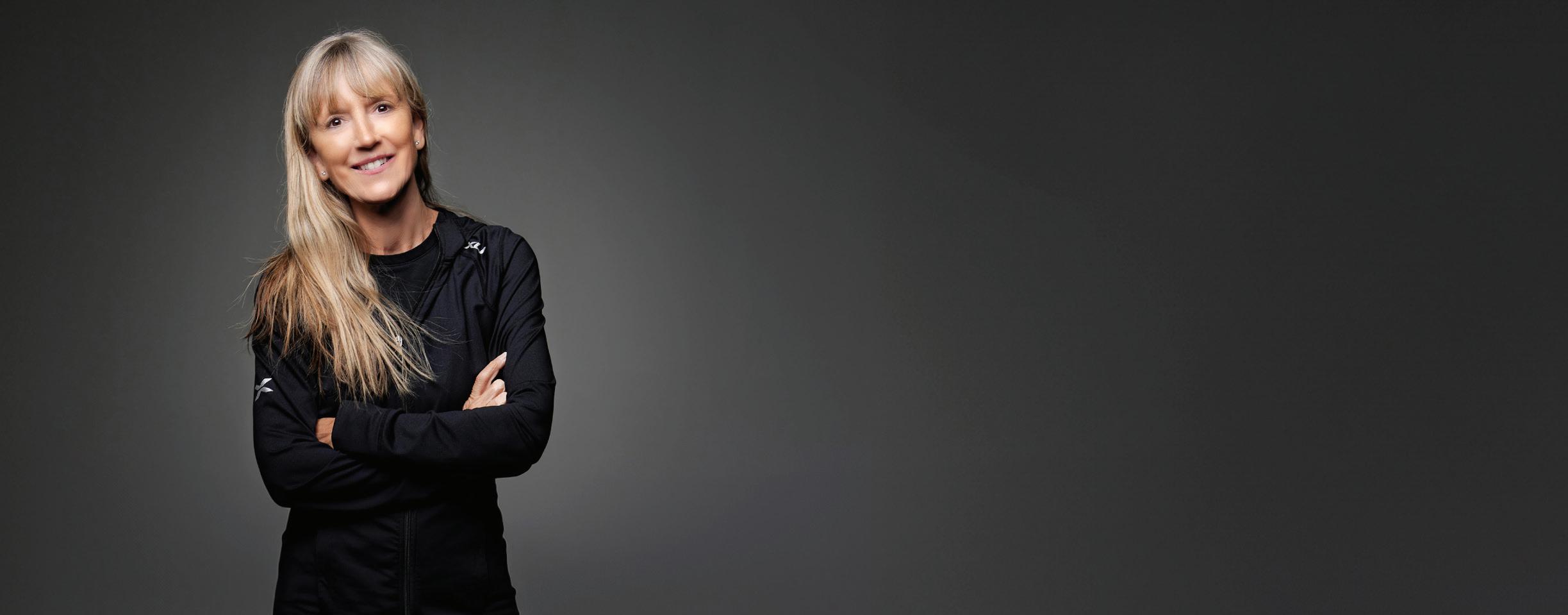
Trudie Lee Photography
Welcome to our energizing and motivating Outdoor & Travel issue. This season offers a perfect window to reset, recalibrate ambitions and fitness goals, and embrace the outdoors. Whether you’re dreaming of sun-soaked hikes across Canada or planning your summer and fall adventures, now’s the moment to get inspired.
This issue is all about getting you out there, from indulging in active vacations with run clubs around the world, to uncovering how movement in nature enhances well-being. We celebrate our exceptional athlete stories, from everyday individuals to elite competitors, whose feats of strength and spirit redefine what resilience really looks like.
Speaking of resilience, let’s talk about our cover athlete, Shanda Hill. If you haven’t heard of her, you’re about to, and you’ll be glad you did. I’m convinced that Shanda is Canada’s best-kept secret in sport, making her story all the more inspiring.
It’s been a privilege following Shanda’s extraordinary journey since featuring her in our 2022 Running Issue. Her story is one of unconventional training—frolicking goats for running partners, training on home-made climbing pegboards, and ice swims in the Okanagan. I first met Shanda in 2023 and was immediately struck by her compassion, ingenuity, and rare athletic ability.
Are you sitting down? She’s the only person on Earth to have completed three continuous Double DECA Triathlons, each encompassing a 76 km swim, 3,600 km bike, and 844 km run, equivalent to 20 full Ironman races in succession. In October 2023, she became the very first woman ever to conquer a Triple DECA Triathlon, successfully covering 114 km swim, 5,400 km bike, and 1,266 km run continuously over roughly 41 days. She holds the women’s world record for the most Iron-distance triathlon finishes under IUTA.

In March 2025, Shanda claimed first place among women in the South Africa DECA Ultra Triathlon: a 38 km swim, 1,800 km bike, and 422 km run, finishing in approximately 279.5 hours while contending with extreme heat and physical strain. To put it mildly: 38 km swim, 1,800 km bike, 422 km run in under 289 hours? Mind boggling. And she has recently competed in back-to-back endurance events globally, some less than one week apart.
We will likely never attempt a DECA, or ultra triathlon race, but we can learn from trailblazers like Shanda how grit, determination, and heart can transform the possible. She reminds us that everyday humans can rise to extraordinary heights.
I would like to thank Emily Meyer, for returning as guest editor this edition, and for crafting such a compelling and beautifully written cover story.
I must mention that we also have a story on Pickleball this issue, and trust me, the jokes about it being a pastime for my “golden years” couldn’t sting more. The sport’s popularity has exploded among athletes of every level, with fierce global competitions. And while the name, whether inspired by a dog named Pickles or a “pickle boat” from rowing lore, may sound whimsical, chances are you’ll find yourself on the court one day soon discovering a sport that blends competition, full-body fitness, and boosted endurance, regardless of how many birthdays you’ve had.
And enjoy all of the high-level advice from our top expert contributors on every aspect of health, wellness and sport this issue. May it inspire you to dream bigger, push farther, and enjoy every step along the way.
Didn’t get your hands on a favourite edition of IMPACT? Or maybe your best friend secretly borrowed it from you? No worries. Subscribe to our FREE newsletter and digital edition online at www.impactmagazine.ca


Outdoor enthusiasts rejoice! From June 20 to September 2, 2025, the federal government’s new Canada Strong Pass makes summer travel easier—and more accessible—for Canadians. In an effort to boost domestic tourism, admission is free to all Parks Canada sites. No registration or pass is required.
Plus, enjoy a 25 per cent discount on camping and overnight accommodations at Parks Canada sites, making it easier to extend your outdoor adventures without breaking the bank.
With more than 200 national parks, historic sites and marine conservation areas across the country, the Canada Strong Pass is a rare chance to explore more of your own backyard for less.
Whether you’re trail running, paddle boarding, hiking or just embracing the outdoors, this summer pass lets you focus on what’s important—enjoying Canada’s great wilderness.
More information: https://www.canada.ca/en/canadian-heritage/campaigns/canada-pass.html


It’s no secret that mosquitoes and other biting bugs can ruin a perfect day outdoors, whether it be a hike in the woods, an evening by a fire or your weekend camping trip.
Many commercial bug spray formulas rely on synthetic and harmful ingredients that are as bad for the environment as they are for our own bodies. For those looking to take a more natural approach, this DIY repellent with all-natural ingredients will keep the bugs away without the harsh chemicals.
• 1 cup witch hazel
• 2 Tbsp. neem oil, which contains natural insecticidal compounds
• 1/2 tsp. vodka as a natural preservative
• 30 drops citronella essential oil
• 30 drops cedarwood essential oil
• 30 drops lemongrass essential oil
• 20 drops lavender essential oil
• 15 drops lemon essential oil
• 15 drops eucalyptus essential oil
Anew study shows that skipping sleep can impair your body’s ability to cool itself during intense exercise in the heat—especially if you're over 50.
Researchers from the University of Ottawa had 10 older male participants (average age 61) preform three 30-minute bouts of cycling in a hot, dry environment (40C and 13 per cent humidity). Each participant did the test twice: once after a normal night of sleep and once after 24 hours without sleep.
After the sleepless night, participants had significantly lower peak heat loss during the most intense stage of the workout—about 12 watts per square metre less than when they were well rested. That difference led to increased heat storage in the body, raising the risk of overheating.
While sweat-based cooling wasn’t significantly affected, the study highlights that even one night of sleep deprivation can impair thermoregulation in older adults. Planning a hot-weather workout after a rough night? Consider moving it indoors, lowering the intensity, or better yet, getting some rest first.
Source: Medicine & Science in Sports & Exercise



Build strength, stamina, and confidence with this quick, effective 4x4 full-body workout
BY TONY NGUYEN KIRSTEN BUYER PHOTOGRAPHY
One of IMPACT Magazine's Canada’s Top Fitness Trainers, father of two, and co-owner of F.R.E.E. Fitness in Edmonton, AB.
TONYGNGUYEN | F.R.E.E.FIT FREEFITNESSINC
Shout-out to all the parents out there! Parenting brings so much joy, but it also comes with sacrifice. Things that once felt easy—like working out, sleeping well, or enjoying hobbies can take a back seat.
While I can’t help you get more sleep or eat better, I can share one of my favourite go-to workouts that keeps me active during even the busiest weeks. This 4x4 workout (four exercises in four-minute rounds) takes just 24 minutes and boosts both strength and endurance, giving you more energy to tackle your day.
Your kids are a priority, but don't forget to prioritize your health so you can be at your best self for them.
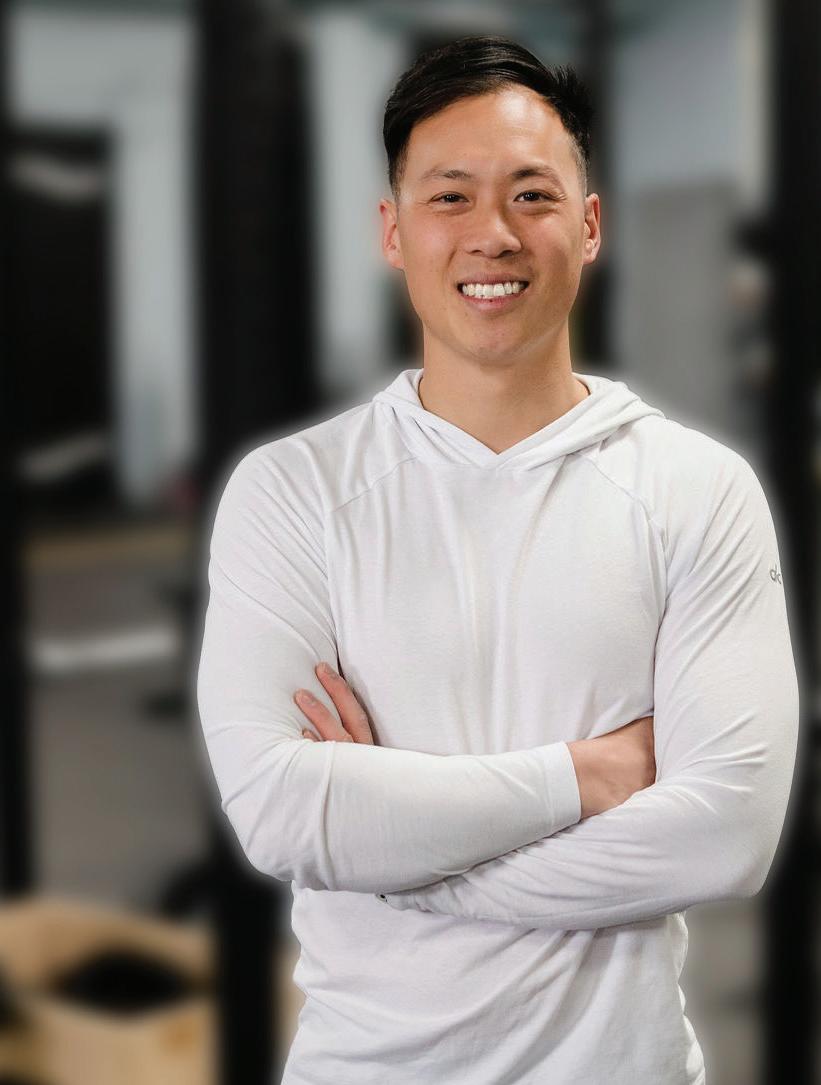

Perform each exercise for 4 minutes, resting for 2 minutes between.
4 minutes (switch legs every 10 reps), rest 2 minutes
Place one foot on top of a box or bench. Keep the weight centred on your midfoot and allow your chest and knee to tilt forward. Using the leg on the box, drive your body up and forward, maintaining midfoot pressure. Control the movement as you return to the starting position. Hold a dumbbell in the opposite hand.



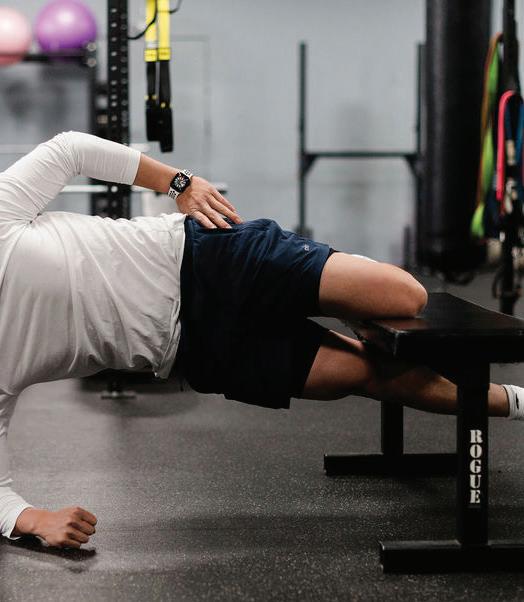

4 minutes (switch legs every 10 reps), rest 2 minutes
Start in a side-plank position with your top leg placed on a bench. Lower your bottom hip toward the ground, then press down into the bench with your top leg to lift your hip back to the starting position. •


4 minutes, rest 2 minutes
Unlock and bend your hips and knees while swinging both dumbbells behind you. Swing the dumbbells up to shoulder height, then press them overhead, maintaining a neutral spine throughout the movement.

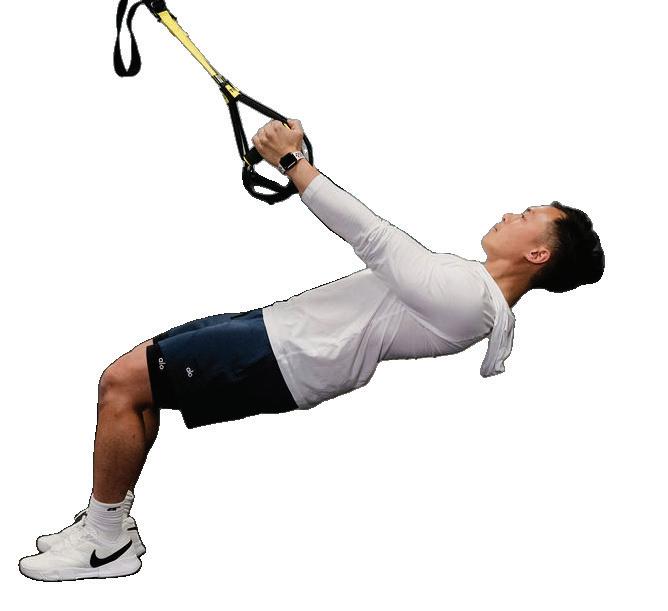







4 minutes (slow on the way down), rest 2 minutes
Walk your feet forward and lean back, keeping your body in a straight line. Pull your chest toward the handles, squeezing your shoulder blades together throughout. Lower yourself as slowly as possible to the starting position.


BY ROSALIE BROWN FRED LUCHETTI
Canadian fitness expert from Richmond Hill, ON, Rosalie is a 4x IMPACT Magazine Canada’s Top Fitness Instructor & Trainer with 40 years of experience as a trainer, gym owner and media personality with QVC and TSC.
ROSALIEBROWNFIT ROSALIE BROWN'S FITNESS CLUB CLOTHING COURTESY OF HYBA ACTIVEWEAR
Training with a resistance band is a convenient and effective way to get a full-body workout completed anywhere. They’re a must-pack item when travelling, taking up virtually no space at all. Resistance bands can activate muscles as effectively as, and sometimes even more than, traditional weight training. There is one major difference. They place significantly less stress on the joints, which means that more stimulus can be provided to the muscles with a lower risk of injury.
This is good news for anyone with existing injuries or joint pain, because resistance bands may allow you to continue working out and performing exercises that you’re unable to do with traditional weights like dumbbells.
In addition, the constant tension from bands adds an element of required stabilization from your body to maintain form during many exercises. This added challenge often engages your core for balance and control. The need to keep them from snapping back into place means greater stimulation and strength through the muscle’s full range of motion, and the pull of the bands reduces your ability to cheat by using momentum.
Here are five exercises to keep you in shape while on the go!


12-20 reps
I love working squats with a bench or chair. It helps with squat technique by having a platform to aim for. Adding a band gives us the resistance to challenge the glutes, quadriceps and hamstrings.
1. Sit on a bench and place the band securely under each foot and hold ends of the band at each shoulder.
2. Now stand up, keeping band secured under feet and shoulders.
3. Repeat sitting and standing for 12-20 reps.
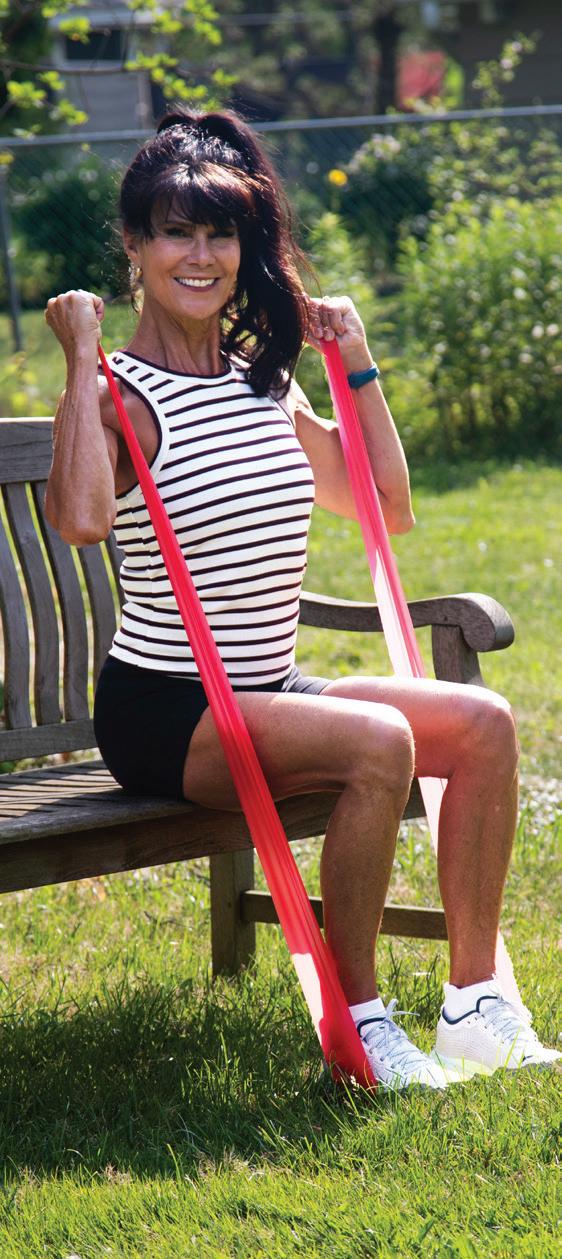


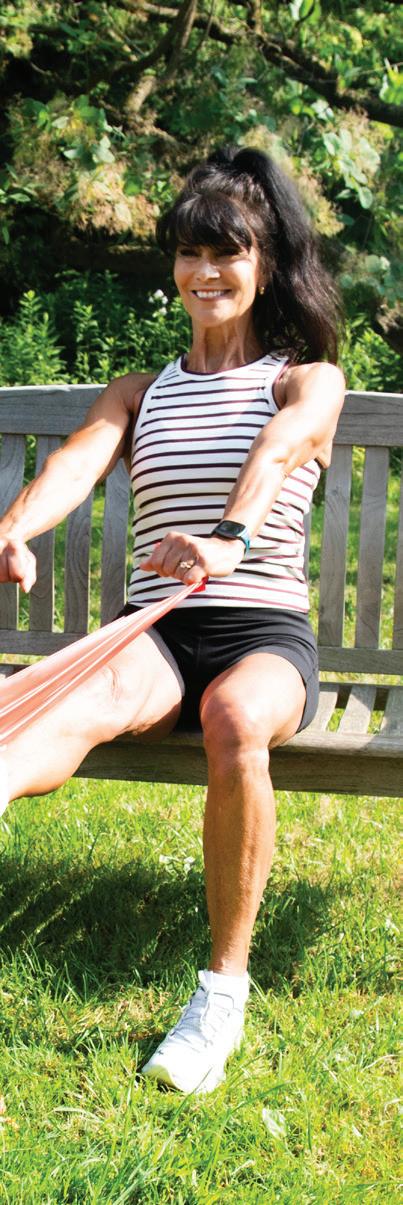


24 reps per side
Rows are highly effective for targeting and building strength in the back and biceps.
1. Sit upright on a bench with your right leg straight and your left leg bent, foot flat on the ground.
2. Loop the band securely around your right foot and hold the ends of the band in each hand.
3. Squeeze your shoulder blades together as you pull your hand toward the side of your waist.
4. Pause, then extend your arms to return to the start. Repeat 24 times, then switch sides. •
12-24 reps
We all know that great looking arms depend on triceps being strong. The latest research favours overhead triceps extensions as one of the best exercises to target these muscles.
1. Place your foot on one end of the resistance band to secure in place.
2. With both hands grab the other end of the resistance band and extend band overhead.
3. Keep both arms close to your ears as you bend your elbows behind your head.
4. Slowly extend band up over head and squeeze triceps and pause.
5. Repeat.



12-20 reps
Ab tucks, also known as knee tucks, are an effective exercise for strengthening the abdominal muscles, improving core stability, and enhancing flexibility in the hips and lower back.
1. Sit on a bench or floor and centre band with both hands under both feet.
2. Keeping knees bent, lift both feet off the floor into boat pose.
3. Extend both legs together, pause and return to start position.
4. Repeat.


12-20 reps
The band pull-apart is an excellent exercise for strengthening the shoulders and upper back, which helps improve and maintain better posture. Pull-aparts are particularly effective for strengthening the muscles of the upper back including the trapezius, rhomboids, and rear deltoids, while also improving shoulder stability and scapular (shoulder blade) control. This exercise can be done either seated or standing.
1. Grab your band in the centre with hands about 12”-16” apart at shoulder height.
2. Keep shoulders in neutral position as you pull the bands apart squeezing shoulder blades.
3. Pause once hands are fully extended at your side.
4. Repeat.






This sport keeps athletes fit, focused, and fired up
BY VAL DESJARDINS KELLY JACOB
A coach, competitive athlete, and founder of The Studio MTL, an inclusive training space in Montreal, QC. Val collaborates with major brands such as Apple, Dove, Nike, ELLE Canada and ELLE Québec.
PUMPFITNESSMTL
Pickling, dinking, the kitchen—over the last five years, the world of pickleball has become commonplace in the realm of recreational sports, experiencing a viral-like surge of popularity. It has been the fastest-growing sport in America for the last four years and, in 2024, there were an estimated 19.8 million pickleball players in the U.S.
The first iteration of the sport, which has existed since the mid-1960s, was an experimental setup that featured an abandoned badminton court, some repurposed ping-pong paddles, and a few perforated plastic balls. It’s these original constraints that inspired the design of the game that we know today and have allowed it to remain popular over time.
Pickleball’s accessibility, smaller court size, and straightforward rules originally made it popular among retirees. That said, pickleball experienced a second resurgence during the COVID-19 pandemic at a time when people were seeking socially distant activities that family and friends of all ages could easily embrace.
Since then, pickleball has gone on to gain major athletic significance. Three major associations—USA Pickleball, the Professional Pickleball Association (PPA), and Major League Pickleball (MLP)—have contributed to accelerating the growth of the sport, enlisting professional athletes and organizing major tournaments across the United States.
Many professional players such as Ben Johns, Anna Leigh Waters, and Canadian player Catherine Parenteau have gained national and international recognition as athletes and received sponsorships from brands interested in investing in the sport.
It’s clear that part of what has contributed to pickleball’s skyrocketing popularity is its ability to lean into our desire to connect and socialize with others. That said, part of its appeal also lies in its ability to engage our brain in a unique way.
Much like other racquet sports, the rapid movements and decision-making that are characteristic of pickleball activate the cerebellum, which is responsible for our coordination and motor skills.

When engaged, the cerebellum also has the ability to activate the rest of our brain, which, in turn, reinforces its ability to reorganize itself and form new neural connections. Our brain’s capacity to adapt is called neuroplasticity and, by preserving it, racquet sports like pickleball, tennis, and even ping-pong can improve and protect the cognitive function that is key to us aging well as individuals.
For all these reasons, pickleball has become a staple in the weekly routine of many individuals across the country. For those of us pickling regularly, it's key to remember that adding a functional strength workout to our schedule ensures that we have the stamina to play at a high level and that we can avoid injury.
Despite the charming and playful qualities of this sport, the plastic ball and shorter racquet that are unique to pickleball require individuals to reach lower to the ground and involve a deeper range of motion than other racquet sports such as tennis or badminton.
Training programming that is sport-specific can help to target specific movements that are common throughout a given match. For example, building core strength through exercises like the Pallof press and cable rotations can help offset the risk of lower back injuries, all the while improving our strength as a player.
Similarly, incorporating plyometric exercises into our routine can help our body prepare to absorb some of the impact on our knee and ankle joints. Athletic drills designed to focus on agility can also help to familiarize individuals with the speedy and repetitive lateral movements that are specific to pickleball.
Ultimately, pickleball’s popularity is part of a broader, societal shift that focuses on our desire to age well and embrace the wellness habits that empower us to do so.
We are more aware than ever of the importance of “play” and its ability to reduce chronic stress levels and improve our mental and physical health. By infusing our routines with both movement and connection, pickleball offers an irresistible opportunity to take care of ourselves, all the while safeguarding our ability to live long and healthy lives in the years ahead. The hype is real—and we should all be leaning into it.

BY SEAN ALLT

The idea of movement competency is simple: can you consistently access a wide range of movement patterns without pain or compensation? If the answer is “no,” you are running the risk of injuring yourself in the backcountry (or just going about your everyday life).
This is one of the foundational pillars of strength and conditioning that far too many people gloss over. The result is an attempt to build strength and capacity on top of dysfunction, which is a recipe for disaster.
You probably know someone who has been strength training on and off for years who always starts off enthusiastic and excited to get stronger, only to be sidelined by injury, requiring them to stop training and lose most, if not all, of their “gains.” More often than not, this is the result of skipping a foundational phase in their training cycle.
As a backcountry athlete, you’ll need access to a wide variety of movement patterns. Though we may sometimes train in a controlled environment like a gym, our performance is tested in an uncontrollable environment: nature. We’re constantly being faced with a wide variety of unpredictable physical challenges and the more movement patterns you can reliably access, the more options you have for overcoming those challenges.
There are seven foundational movement patterns that every backcountry athlete needs to gain competency in:
1. Pushing
2. Pulling
3. Squatting
4. Lunging
5. Hinging
6. Rotating (and resisting rotating)
7. Locomotion (walking/running/crawling, often with a pack or carrying weight)
Not only do you need to display consistent competency in each of these seven movements individually, but you need to be able to reliably string them together and perform them in multiple planes of movement (forwards/backwards, side-to-side, at a diagonal, etc.) in order to perform in the backcountry.
Once you can reliably and consistently display competency in these movement patterns, you’re ready to shift your focus to building strength in them.
The principles that guide the building of strength are relatively simple. In theory: lift more today than you did the last time you performed the same exercise. This is the principle of progressive overload.
In practice, this simply means that at each strength training session, your goal should be to lift more total weight than in your previous session. This can mean moving a heavier weight for the same number of repetitions or lifting the same weight for more repetitions.
To effectively build muscle and strength, most people should complete anywhere from nine to 18 total sets per muscle group each week. Those sets should each consist of anywhere between six to 20 repetitions. The lower the reps, the more sets you should complete.
Some examples include:
• 4 sets of 6-7 repetitions
• 3 sets of 8-12 repetitions
• 2 sets of 15-20 repetitions
Each set should stop with one or two reps “left in the tank.”
The rationale here is that physical adaptation happens when we work near the edge of our current capacity, not beyond it. Ask any high-performance athlete how often they train to the point of true failure and they will all say the same thing: almost never.
If you find that after a few weeks, you are no longer able to add more weight or more reps, reduce your working volume for a week before ramping it back up again. This is what’s known as a deload. It’s kind of like making a small down-climb to a traverse in order to reach a spot where you can continue your ascent toward the summit.
A quick note regarding the one-to-five rep range: unless you’ve been consistently following a structured training plan for close to a year, you won’t need to use that range, and without that yearor-so of strength training under your belt, the risk of injury far outweighs the possible benefits.
At this point, you might be wondering how strong you need to be in order to set yourself up for success.
Well, the answer is: it depends on what your athletic endeavours include. A trail runner who seldom carries anything larger than a 15-litre pack containing nothing more than the essentials doesn’t need nearly as much strength as a multi-day backpacker who must be prepared to haul a heavy pack for long distances over rugged terrain.
With that said, all backcountry athletes should endeavour to achieve a minimum standard of relative strength (their strength relative to their body mass).
For example, being able to perform the following feats of strength with good technique is a solid benchmark:
• 25 goblet squats holding 50 per cent of your bodyweight
• Carry 75 per cent of your bodyweight (in your hands) for 90 seconds
• 5-8 chin-ups
If you can do all of these on demand, you have a solid foundation of strength to support your adventures.
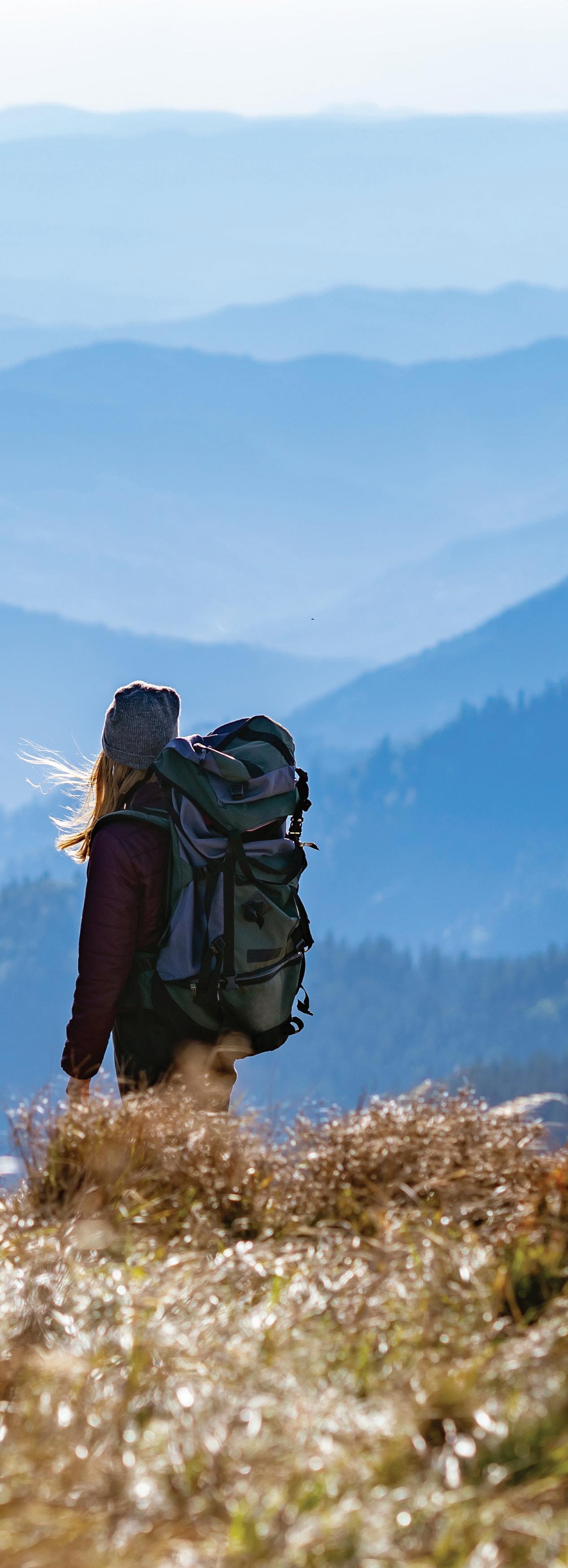
BY MIA KERCHER
Marathon runner, outdoor and travel writer and trail enthusiast from Portland, OR.
MIAKERCHERISNICE
MIA-KERCHER-COPYWRITER
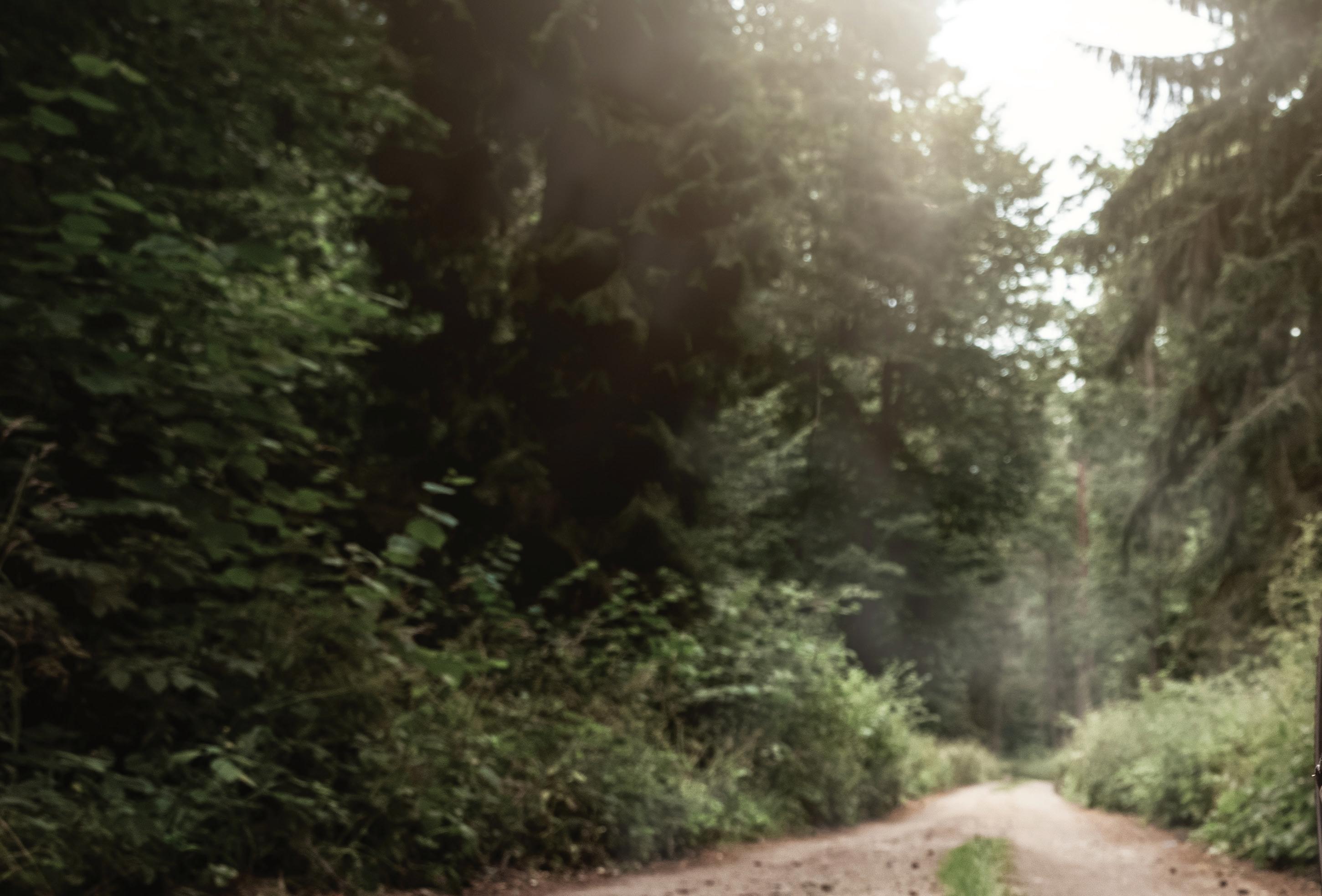
Running and cycling are two pretty intertwined activities. They’re both forms of cardio that get you outdoors and cover terrain on your own. It’s no surprise that many runners like to hop on a bike occasionally and vice versa.
However, combining running and cycling in your training plan often leads to doubts and questions. Runners often wonder if cycling is actually helping or hindering their running game. Does all that pedaling fatigue your legs?
In this guide, we will explore cycling for runners, examine its benefits, and compare cycling with running.
If you’ve been running for some time, you know that cross-training is an essential part of your running plan.
Whether you run for a healthy boost or weight loss or are training for a half marathon, building strength and endurance is the best way to get the most out of your run.
Dr. Robert Berghorn, a physical therapist at Ascent Physical Therapy, helps runners and other endurance athletes train to compete while preserving their bodies.
He advocates for cross-training in general but also emphasizes cycling for runners as an especially effective method.
“Cross-training, just like in every sport, is a very important aspect of a training schedule for every athlete. Cross-training allows you to get out of the usual cycle of repetitive movements, using different muscles and muscle activation sequences that
either complement or enhance primary sports performance when they return.
Cycling for runners is a wonderful way to cross-train, especially if you need to have a good recovery day after a hard training cycle in the off-season or if the runner is injured.
Incorporating cycling as a recovery day during or after a hard training cycle can be used to flush out the legs and reduce soreness while still getting a good cardiovascular training effect at the same time.
Injured runners who cannot tolerate the impact of running but still feel fine cycling can use this as a tool to maintain some level of fitness and cardiovascular health while recovering.”
Recovery and cross-training are the two major benefits of cycling for runners, but those advantages run even deeper.
Active Recovery
Cycling aids recovery by increasing blood flow to your calves, glutes, hamstrings, and quads—all the muscles you need for running.
Cycling provides a low-impact cardiovascular workout and will build endurance for those who want to give their joints a break from pounding the pavement.
Cycling flushes out lactic acid, which removes stiffness and delayed onset muscle soreness from your muscles. As your muscles burn more energy, they produce lactic acid, which breaks down into hydrogen ions.

The hydrogen ions then lower the pH of your muscles, which slows down the muscles’ efficiency. That’s what creates the burning sensation and keeps you from getting the most out of your muscles during a workout.
Cycling is a good use of injury recovery time. If you are unable to run because of the impact, cycling on a flat surface can keep your muscles and lungs active and ready to get back on track. It is also a good way to prevent overuse injuries. Cross-training
Cycling helps build up your cardio. Since you often cycle longer than you run, you get that additional boost of cardio training in your schedule.
Cycling builds strength in complementary muscles. Both sports activate similar muscles, but each one targets the muscle in a different position. Using both will help build overall strength among those critical muscles used in running.
Cycling improves run time. It develops stamina and endurance without putting a load of stress on your leg muscles.
If you want to build that additional strength and endurance, riding a few laps around the waterfront will not do you that much good.
The number of times per week you engage in cycling will depend on your goal.
If you are trying to just switch up your routine and run less days during the week to avoid some impact, you can replace one or two of your easy runs with cycling.
If you are injured, you may need to also replace your speed workouts or other running workouts you have planned until you get the go ahead to be able to run again.
Personal trainer and postpartum running coach, Alison Marie, gives advice on how to make sure you’re positioning yourself correctly on the bike.
“When cycling, one should check that the seat height is adjusted correctly to allow for the full range of motion without overextending: at the straightest, the knees should bend at about 145 degrees (this happens to be around the knee angle of the ideal “triple extension” in running as well).
Clip-in type pedals are ideal because they allow you to truly pedal through the motion instead of simply pushing the pedals down.
When cycling, the range of 80 – 100 RPMs is the sweet spot for cardiovascular endurance. One can also use high-resistance intervals to simulate something like a hill workout or speed intervals to help work on running cadence.”
So, runners, by blending cycling into your routine, you can improve performance so you are better equipped to go the distance.
This article was edited for length and reprinted with permission from the Marathon Handbook – www.marathonhandbook.com.



Shanda Hill is redefining the limits of what’s possible
BY EMILY MEYER HENRIQUE PRESSE
IMPACT Magazine guest editor, freelance writer and travel enthusiast from Calgary, AB.

When Shanda Hill found triathlons after recovering from a traumatic brain injury, little did she—or the triathlon world—know that she would become one of the best ultra-triathletes in the world, breaking records and undertaking feats that no one else on earth has done.
Born in Chilliwack, B.C., and raised in Vernon, B.C., Hill spent much of her teenage years and young adult life competing in BMX racing. And she was good, achieving titles in various categories across national BMX events.
But Hill’s BMX dreams were stopped in their tracks one fateful spring day in 2003. The young athlete was riding her bike on a road near her hometown when a Chevy Blazer 4x4 SUV, weighing some 4,000 pounds, hit Hill from behind, sending the 21-year-old BMX rider flying from her bike.
The accident left Hill with a traumatic brain injury and severe trauma to her back.
The future was suddenly uncertain. There was no assurance that she would fully recover. She was told she wouldn’t race again. Hill’s memory was impacted, her equilibrium, depth perception, and quick-twitch timing—an essential response needed for split-second reactions in BMX—were all damaged.
Hill admits that about five years into her rehabilitation, she came to a realization:
“I had been expecting that at some point medical professionals would be able to put my life back together,” she says. “And I came to a point where I realized there was nobody who was going to give me back what I wanted, which was my life before the accident.”
Hill decided that the only way forward was to pick up the pieces and move on with what she had. Eventually, that meant turning to running.
The rest? It was all just happenstance. A friend suggested Hill try a triathlon. A few short years after competing in her first triathlon— an Ironman distance—another friend suggested that she look into an ultra. Then an ultra became a double-ultra and then a triple and now Hill is shattering records everywhere she goes.
She’s currently the only person on earth to complete three double deca triathlon continuous races, which is equivalent to 20 Ironman triathlon distances completed in one effort. That’s a 76-kilometre swim, 3,600-kilometre bike ride, and 844-kilometre run.


She is also the first woman ever to complete a triple deca triathlon continuous, consisting of a 114-kilometre swim, a 5,400-kilometre bike ride, and a 1,266-kilometre run. And on top of that, Hill holds the women’s world record for the most International Ultra Triathlon Association (IUTA) Ironman distances completed.
But for the B.C. native, it’s not about the records.
“It’s about searching for excellence inside my soul to know what I’m capable of,” says Hill.
And she keeps proving time and time again that she’s capable of phenomenal things.
In March of this year, Hill competed in the Ultra Tri South Africa, finishing the 10x continuous ultra in 279 hours and 30 minutes. She was the first and only woman to cross the finish line and finished an incredible second overall.
Amazingly, ultra triathlons are not Hill’s day job. Between races, she works for a natural food store in her hometown and does landscaping work in the summer. She lives on a farm with her teenage son, two dogs, three goats, one miniature horse, and two cats, providing a peaceful yet spirited environment that is muchneeded between races.
As for training?
Hill acknowledges that her landscaping work could be considered cross-training as it’s hard on the body, but that’s certainly not why she does it.
“I'm not a big believer that more miles are going to make me a better athlete,” she says. “I think that rest and recovery is the most important thing.”
Citing nine hours of sleep—much more than the maximum three hours she gets during races—as crucial to her recovery, Hill attributes her success in triathlons to figuring out how to nourish her body properly.
“I believe the key component to everything exercise—and life in general—is when you can find good nutrition. When you can put good nutrition into your brain, you can make good choices, and every other area of your life will benefit from it. We can make our lives better.”
As for what that nutrition is? Between races she gets most of her protein from tofu. Nuts and carbs are also important to her diet— with bread and chocolate two of her favourite staples.
During races, it’s all about the calories. Hill takes in thousands of calories a day, constantly eating when she has the chance. Her go-to is a special cashew and vegetable soup mix that she crafted herself, paired with tofu and piles of veggies.
Another critical element for the ultra-triathlete in between races has been oxygen therapy, which she says is the only real training she gets besides work. Hill explains that twice a week she sits on a bike while wearing a mask, and a trainer flips a switch to reduce oxygen to 11 per cent. Then, they perform intervals of flooding her body with 80 per cent oxygen.
The biggest impact Hill has seen with oxygen therapy is in her sleep. Managing sleep was one of her biggest struggles when she was first starting out in ultra triathlons. Due to her brain injury, Hill suffered more than most people with the lack of sleep. Six hours a night was the minimum her body required to have maximum performance.


“What’s fascinating is that since I started doing oxygen therapy, I’ve been able to get my sleep down to three hours a night and not have fatigue,” says Hill.
Hill’s oxygen therapy is provided at a discount by one of her sponsors, Eve Volve Wellness. But astoundingly, Hill isn’t backed by any major sponsors. Rancho Vignol provides food, and The Starting Block hooks her up with shoes. But it’s all thanks to donations on her website—shandahillultra. com—that she is able to travel the world and compete.
“To date, it's been the most painful injury I've ever had. I didn't know how I would continue,” says Hill. “I was so invested in that race. I sacrificed so much to be at that race, and there was a desire in me to finish.”
Despite the injury, Hill made the decision to keep going. She says that within half an hour, her torn quad went numb. Not only did she finish the race with 15 hours to spare, she was the first woman to cross the finish line.
And in June of this year, while racing the Bretzel Ultra Triathlon in Colmar, France, Hill had an accident when getting off her bike. Her shoe didn’t unclip in time and she hit her ankle on the pedal, opening a deep cut that required stitches.
She was asked to stop and go to medical. She said no. Luckily, one of her support crew was able to stitch her up so she could power on.
With a bruised and stitched ankle paired with extreme temperatures climbing into the mid-30s, the 422-kilometre run took a toll on the unyielding athlete. Despite the injury and relentless heat, Hill still came home to finish first place among the women and second overall.
Hill repeatedly demonstrates that there is no limit to what the body and mind can achieve. She’s breaking barriers, setting records, and showing that determination and resilience are key ingredients for reaching our potential.

“[Donations] have mostly been by Canadian people who have stepped forward and said, ‘We want to see you achieve your goals,’” says Hill.
And it’s not hard to imagine why Canadians are getting behind their superstar from B.C. Hill’s grit and resolve are unparalleled, and she’ll stop at nothing to compete.
In 2016, during Hill’s first year racing ultras, she tore her quad muscle during the USA Ultra Triathlon Quintuple Anvil, which consists of a 19-kilometre swim, 900-kilometre bike ride, and 210-kilometre run, all to be completed within a 132-hour time limit.
“I’m in awe of what our bodies can do,” she says.
And on whether she will continue chasing incredible feats in ultra triathlons, she has this to say: “I still have a love for it. I still have a passion for it. [I wonder] what else is possible? And so, I am still exploring what my own potential is.”
One thing is for sure: Canadians and the world over should keep an eye on Shanda Hill from Vernon, B.C., because she is a fighter—a powerhouse—and she will continue to achieve greatness.
From remote Yukon to the skies overhead, Kevin Crowe finds fulfilment in building muscles of courage, tenacity and resilience
BY JESSICA NATALE WOOLLARD GRAHAM MCKERRELL
An award-winning freelance writer and communications professional based in Victoria, B.C.
JRWOOLLARD
In the relentless -40C, Kevin Crowe heaves one booted foot in front of the other across Yukon’s snow-packed boreal forest biome. Behind him, he pulls a sleigh of 70 pounds packed with gear for his 12-day journey, including a sleeping bag and foam rest, down parka, pots and pans, and food for three days, enough to last until the next fill-up station.
Six days in, his appendages and eyelashes are frozen, his clothes are wet and won’t dry, his back aches. His level of exhaustion is nearing the danger zone. Even his Garmin has stopped working due to the extreme subarctic conditions.
There are moments of beauty that permeate the desolation and discomfort, like the aurora borealis glimmering overhead in their ghostly beauty. But after 366 kilometres on the course, Crowe can't deny the reality: the relentless cold is putting his safety at serious risk.
The 54-year-old Calgarian and tech-company executive was one of 46 racers in the 2025 Montane Yukon Arctic Ultra, held February 2 to 14. Participants of this race, billed as the world’s coldest ultramarathon, battle across 640 kilometres of undulating landscape through snow, ice and cold. They follow an old sled-dog route that joins the communities of Teslin and Faro. The wilderness is remote—the conditions brutal.
“I could feel that things were starting to come undone,” Crowe remembers. “I could barely stand upright… I had to think about my safety. How far am I going to push this? When is enough, enough?”
He concluded it was time to exit the race and return to his family.
Leaving a race early is tough for an endurance athlete like Crowe because they devote their lives to setting and reaching goals and challenging themselves physically and mentally.
“There is something really powerful about doing things that you think you can't do and building that muscle around self-belief—of overcoming doubt, of overcoming obstacles, of calling on your tenacity and your courage,” he explains. “They’re all muscles; you need to build them...




When you [do], your life will be so much more fulfilled.”
After leaving the race, Crowe learned that more than 30 people exited before he did. A few had been rescued by helicopters; some were recovering in hospital from frostbite. Only three runners finished the Yukon Ultra this year.
Crowe was disappointed in not finishing, but not just because he fell short of his goal. He wanted to fulfill a promise to the friend who’d inspired him to run in the first place.
In 2010, Crowe’s good friend, Ryan Westerman, was just 37 years old when he succumbed to brain cancer. It was in his memory that Crowe founded Give a Mile, a non-profit that helps people fly to visit loved ones who are terminally ill so they can say goodbye. With charity status and operations in both Canada and the United States, Give a Mile has, since its founding in 2013, flown more than 1,300 family members to or from 151 countries using 61,275,771 miles.
Crowe hoped to raise another 37 flights—Westerman’s age at his passing—by becoming the first person to complete two monumental challenges in the Yukon in one year: stand-up paddleboarding 715 kilometres on the Yukon River Quest and finishing the Yukon Ultra.
In June 2024, he completed the Yukon River Quest challenge, voyaging from Whitehorse to Dawson City in the world’s longest annual paddling race. He not only completed the race; he earned a bronze medal and his first podium finish as an endurance athlete.
The Yukon Ultra, however, is the one that got away.
It was to cope with the grief of Westerman’s illness that Crowe started running to begin with. Watching his friend at the end of life, Crowe was motivated to do things he’d dreamed of but hadn’t done—like running a marathon.
Watching Westerman, Crowe concluded, “You want to be deliberate about the time you use. There's only so much of it, so be very awake to how you're using that time… Decide, ‘These are the things I want to do. I'm doing them because they are important to me.’”
A month after Westerman passed in 2010, Crowe completed his first marathon and has piled on the mileage ever since. He is committed to not putting off goals, even when facing his own challenges, like a serious health issue that resulted in hospitalization in 2022.
Six weeks after Crowe left the frigid Yukon Ultra, he travelled to another extreme temperature zone and completed the Arizona Monster 300, a 304-mile journey through southern Arizona's Sonoran Desert, a rugged and challenging route through backcountry terrain and high elevation mountains.
He felt he owed it to his supporters who helped him raise the 37 flights in Westerman’s name to complete an ultra.
“It was incredible to get to the finish line, to overcome that self-doubt [after the Yukon Ultra]. It felt like I was on top of the world,” he says.
“If you're right now sitting on a couch reading this, and you think you can't even run a 5K, you can. Believe in yourself. Put the work in, and you will do it. You're going to feel amazing at the end.”

After pregnancy, loss, and many miles on the trails, Stephanie Case is redefining endurance sport and empowering women around the world
BY KATHERINE ENGQVIST CARRIE HIGHMAN
An outdoor enthusiast, avid traveller, and an award-winning journalist based in Victoria, B.C.
It was a reminder for me of how much moms go through, but what is possible to do with support.
Crossing the finish line of the gruelling Hardrock 100 while holding her daughter Pepper wasn’t just about a comeback for ultrarunner Stephanie Case—it was a statement about motherhood, resilience and rewriting what it means to be an endurance athlete.
It was a punishing race for the mother, but despite the sleepless and nausea-ridden race, Case knew there was only one thing that mattered.
“I didn’t want to show up on the finish line destroyed,” she says. “Pepper comes first.”
A few months before Hardrock 100, in May of 2025, Case made headlines when photos of her breastfeeding a then-six-month-old Pepper during the Ultra-Trail Snowdonia race in Wales went viral.
Case had to get special permission from race organizers to add an extra stop to the course so she could feed Pepper for a third time during the 100-mile race. Despite the extra stop, she still managed to place first among the women.
The Ultra-Trail Snowdonia was Case’s first ultramarathon postpartum and her first in nearly three years. After suffering a miscarriage in 2022 and taking a hiatus from running due to fertility struggles, Case said it was just as important for Pepper as it was for her to get back into running.
“Mentally, it was the best thing to do,” she says. “Every time I went out, I connected with my old self that hadn’t changed.”
While running felt physically trying after giving birth, Case says that realizing she was still a runner helped her process all of the changes that come with becoming a mother.
Snowdonia was an extension of that, and making sure Pepper was fed during the race was just a piece of the logistical puzzle she had to work out. While some applauded the new mother for her dedication and determination, others felt it was selfish and performative.
“It speaks to the patriarchal, outdated ideas of what a new mom should look like,” she notes. “I’ve really worked to respond to those comments … A happy mom is really important for baby.”
While Snowdonia was a confidence boost, Hardrock was a reality check. Back at work as a UN human rights lawyer, Case was balancing long hours with the demands of training, all while caring for Pepper.
“It was a reminder for me of how much moms go through,” she says, “but what is possible to do with support.”
The Hardrock 100 is an unforgiving physical test, pushing participants through 100 miles (160 kilometres) and a total elevation change of 20,237 metres. For Case, it carried an emotional weight too—it was the same course where, shortly after racing it in 2022, she first learned that she was pregnant. She was there to close a loop.
Yet, 30 miles in, she was throwing up.
“It was really tough to push through that,” she says.
This race was supposed to be a marker of all that the 43-yearold had achieved since 2022. Instead, she was in survival mode, running on four hours of sleep, caring for Pepper and battling the urge to quit.
“I had to remind myself why I was there,” she says. “I just wanted to show Pepper I could do hard things.”
Pulling back, she was able to get to a place where she could enjoy the last half of the race. Finishing fifth—and taking Pepper into her arms to cross the finish line with a bounce in her step—Case had stayed on pace with the top runners for the final leg and even beat her 2022 time by an hour.
While Case is determined to set an example for Pepper, she’s also helping girls and young women around the world. At the beginning of her ultramarathon career in 2014, while working in Afghanistan, Case was told she’d probably have to give up running while living and working in conflict zones.
“That was like waving a red flag in front of a bull,” she says. Determined to use running to make a difference, she raised approximately $10,000 for a women’s shelter. But through that work, she learned the Afghan women really just wanted to be able to get outside themselves—something they couldn’t do because of the war and the type of abuse they had experienced. In the process of making that happen, Case founded Free to Run.
Operating in some of the world’s most challenging regions— including Iraq, Afghanistan and Palestine—Free to Run has helped create positive change in the lives of thousands of young women and girls by using running and rights-based programs to support leadership, agency and health.
Making women seen has been a pillar in those programs. As Case puts it, “That can absolutely change this idea of what women should be doing.”
Case’s story has also been captured on film. Her first documentary highlighted the work of Free to Run, while her upcoming second film will follow her running journey, pregnancy challenges and her early days of motherhood. Three years of filming wrapped up at Hardrock, closing another loop for her.
The film will premiere at the August UTMB event, and Case hopes to see it on a streaming platform this fall after a film festival circuit.
For Case, challenging cultural norms and stigmas isn’t just part of her work and charity, it’s integral to her approach as an ultrarunner and mother. She’s proving what is possible when women are seen, supported and empowered.

Everything you need to know to perform your best and stay safe when training or racing in thinner air
BY BROOKS RUNNING
BROOKSRUNNINGCA
There are plenty of ways to shake up your running routine, from trying a new route to taking a run-cation. A great way to take your endurance training to the next level is altitude training.
Running at high altitudes (over 5,000 feet above sea level) is common practice among elite athletes. However, running at high altitude isn’t just for the pros. Runners of all abilities can benefit from some time spent above sea level.
While altitude training may seem daunting, several studies indicate that—with proper precautions—you can stay safe, have fun, and become a better runner.
Increased oxygen flow to muscles
According to Dr. Ben Levine at the University of Texas Southwestern Medical Centre, in high-altitude environments, you take in less oxygen with each breath compared to lower altitudes. This pushes your body to make more red blood cells to deliver oxygen to hard-working muscles.
When you return to lower altitude or sea level, your body keeps those extra blood cells, giving your performance a natural “boost.”
Increased aerobic capacity
A 2020 study found that after an 11-day training program at high altitude, a group of runners observed a 13.6 per cent increase in their VO2 max.
Similar to the way altitude training impacts oxygen flow to your muscles, the increased blood cell count allows your body to take in more oxygen with each breath, which could boost your performance at lower altitudes.
As always, it’s important to listen to your body. Talk to your doctor and come up with a plan before you set off on your adventure. And learn the signs of altitude sickness so you can take action if you become sick.
• Dizziness
• Fatigue or loss of energy
• Chest tightness
• Severe headache, nausea or vomiting
• Coordination problems
If you or anyone with you experiences these symptoms, seek medical assistance immediately.
It’s hard to beat a mountain getaway, but between the demands of our day-to-day lives and travel time, training at elevation isn’t an option for everyone.
Thankfully, there are some high-tech and easy-to-find options that will allow your body to reap the benefits of altitude training, without the plane ride.
Altitude training classes
Enjoy the benefits of altitude training with the company of friends in an altitude training class. Specialized facilities are designed to decrease the percentage of oxygen available in the room, simulating the air at high altitudes.
Interval hill training
Intervals and hills? Hear us out.
Whether you find a hill in your area or amp up the elevation on your treadmill, running uphill followed by a walk back down (or a walking recovery at zero elevation) can do wonders for your cardiovascular health and improve your endurance.
The best part about interval training is that you can change the difficulty level. If you are just getting into running, take a shorter running interval and longer recovery. As your endurance improves, adjust to longer running intervals with shorter recovery to challenge your body. If you want to add some extra spice to your workout, take on steeper hills as you improve.
Try breathing exercises
There are a variety of breathing exercises for runners; one of the most common is called square breathing.
Square breathing focuses on aligning your stride and breath. Beginners should try inhaling for two strides then exhaling for two strides. As you get more comfortable with the rhythm, try moving up to three or four strides.
If you feel confident, take your square breathing to the next level by inhaling for two strides, holding for two strides, exhaling for two, then holding for two.
Breathing exercises can help you focus during hard workouts, and they can even reduce the work of breathing and minimize fatigue during runs.
Before you embark on your high-altitude running adventure, here are four tips to help you stay safe and enjoy this new chapter of your run:
1. Take your time. Allow yourself to ease into your new training conditions. Take plenty of time (about two weeks) to adjust to the new altitude. Consider beginning with long walks and working up to a run when you first arrive at altitude to prevent overexertion.
2. Slow your pace. Keep a close eye on your pace and listen to your body. Start out running slower than you normally would at lower altitudes until you get a feel for the impact that highaltitude training has on your body.
3. Stay hydrated. Drink plenty of water to fuel your body as it adjusts to a new altitude. This will help you adapt faster and recover better. As always, pair your hydration with nutritious meals to provide your body with everything it needs to run its best.
4. Dress in layers. It gets chilly up there in the mountains. Layers are your friend as you warm up (pun intended) to a new altitude. Whether you take a trip to the mountains or create your own altitude training at home, there are plenty of benefits to be had from running at high altitude. Maintain safe practices and build a plan so you can get the most out of your altitude training experience.
This article was edited for length and reprinted with permission from Brooks Running - brooksrunning.com/en_ca.
BY LOUISE HODGSON-JONES
IMPACT guest editor, communications and event specialist in Victoria, B.C. LOUISEHODGSONJONES LOUISEHODGSONJO
Fitting in running while on vacation can sometimes be a challenge particularly if your time is limited and sightseeing is your priority. So why not combine the two? There are running clubs that welcome visitors on their weekly runs, and a guided tour group that offers scenic run packages if you prefer something more organized.

Retiro Running takes its name from El Retiro Park, one of the largest city parks in Madrid and a UNESCO World Heritage Site. It is here on Sunday mornings at 10 a.m. that this social run club meets.
The club was founded in 2021 by Manuel Méndez who wanted to foster a relaxed form of running while embracing camaraderie. The park is a perfect spot for the group to embark on various distances from five to 12 kilometres, exploring the 142-hectare site that features 150,000 trees, meandering paths, and a lake.
There are also organized runs on Tuesdays and Thursdays at 6:30 p.m. in the winter and 8 p.m. in the summer. The club also explores other areas of Madrid including the Paseo del Prado, a magnificent boulevard that is a highlight of artistic splendour, featuring the Prado Museum and the Neptune Fountain. In addition to running, the club organizes other sports and social events to embrace and foster an all-inclusive community. •
RONY WAN DLSCHKSNRAD WE.ARE.KIIN
Fun, community, welcoming: that is how Maria Sanchez, founder of Kiin, describes this vibrant running club. Sanchez started the club in 2020 during COVID-19, as a way to make connections and bring together people from all walks of life. Boosted by social media, the club grew and now organizes two runs a week and partakes in races such as the Paris Marathon and Half-Marathon.
The name Kiin is derived from the English word kin (your tribe) and the Greek word kean (to move).
Kiin: a safe space to meet up with your tribe and move together.
They meet Wednesdays at 7 a.m. for a sevenkilometre run and Sundays at 9 a.m. for 12 kilometres. All runs start at Le Peleton Café with routes that take in iconic landscapes such as the Marais and Seine River pathway, Notre Dame, the Eiffel Tower and Ile Saint-Louis.
Visitors are welcome to join. Just show up! All levels are welcome.
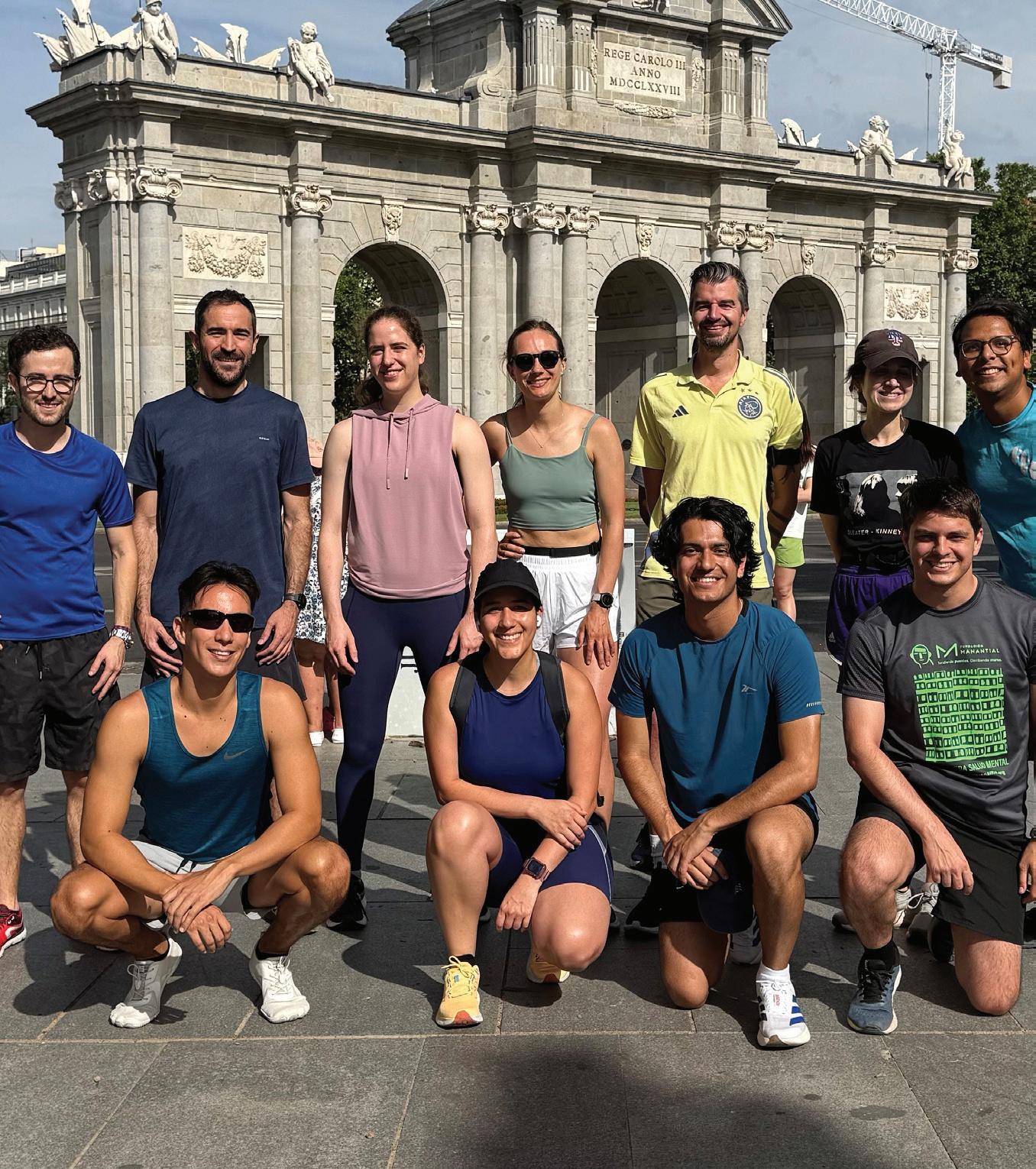
MCCAMMON DEDICATIONNATTITUDE
DNA’s weekly run motto is “Run for All.” On Tuesdays at 6:45 p.m., runners gather on Maybachufer in the district of Neukölln to run along the Landwehr Canal, one of the many iconic areas of Berlin.
DNA (Dedication N Attitude) is a multi-cultural club with over 18 nationalities represented, welcoming runners from all over the world. As one of the more diverse running clubs in Berlin, they run distances from five kilometres to marathons, welcoming both serious and casual runners.
Berlin’s running scene is vibrant and there is no shortage of notable districts and landmarks for the club to explore. The Tiergarten is a large urban park— and where the Berlin Marathon starts—with tree-lined streets and paths. The Berlin Wall Trail is a historical path, perfect for exploring the dramatic history of the city, and then there are the bridges, which the city is built around, connecting diverse neighbourhoods. With no membership fees, DNA’s philosophy is to be an allinclusive club making running accessible to anyone.


LONDON CITY RUNNERS LONDONCITYRUNNERS WWW.LONDONCITYRUNNERS.COM
London features many famous landmarks and there is no better way to explore the U.K.’s capital city than by running on the River Thames pathway. That is exactly what the London City Runners (LCR) do every Tuesday, Thursday and Sunday.
The club, founded in 2010, styles itself as a social hub in the city, attracting hundreds of runners over the years. The weekly river runs all start at the LCR Clubhouse on Druid Street, where everyone is encouraged to stay after the run for a drink.
On Tuesday and Thursday evenings, the runners head west along the pathway towards the Millennium Bridge for a six-and-a-half-kilometre run, Blackfriars Bridge for eight kilometres or Westminster Bridge for 11 kilometres. On Sundays, the route goes east with options for a 10- or 18-kilometre route that takes in Greenland Pier or Tower Bridge. There is no charge for the runs, but registering as a member on their website is encouraged. The club also has track nights and a “Couch to 5K” program.

DAVID ALTABEV MIDNIGHTRUNNERS
WWW.MIDNIGHTRUNNERS.COM
Want to incorporate a few burpees during your run … and run to music? Then the Midnight Runners could be your crew. Located in cities worldwide, this volunteer-led group puts the fun into every run.
Their runs are from five to 10 kilometres but are intermingled with bodyweight exercises designed so you can mix and mingle with fellow runners during the run. These bootcamp runs are all about bringing like-minded people together to get to know each other and the city they live in. Each run ends with a social event with dancing, music and more fun!
Midnight Runners are in 18 cities across the Asia-Pacific region, Europe, Latin America, and North America, with 240 “crew” captains and more than 10,000 members.
To find a city, check out their website which has a full list, then download their free app—Heylo—find the schedule, and book the event (recommended as they can sell out). •
KIRRIBILLI RUNNERS KIRRIBILLIRUNNERS
WWW.KIRRIBILLIRUNNERS.ORG
For 19 years, the Kirribilli Runners has been active on the Sydney running scene, hosting twice weekly runs and participating in community events. This free social run club welcomes runners of all ages and abilities as they pursue running goals and support local races.
Their name is derived from the Aboriginal word kiarabilli, meaning “good fishing spot.” On Thursdays at 6:30 p.m. they gather to run the KR Classic, a scenic six-kilometre route that starts at the Harbour Bridge and takes in the Cahill expressway, local tombstone art and the world-famous Sydney Opera House.
The run, suitable for all abilities, is followed by drinks at the Kirribilli Hotel and then pizza. On Mondays at 6:30 p.m., there is an intermediate training run of 10 kilometres—the KR10K—to Waterman’s Cove, Barangaroo, home of the world’s largest underwater living sea wall, preserved as a garden. The run starts and ends at the Harbour Bridge.

JOSEPH CAMILLERI PARKRUNUK
WWW.PARKRUN.COM
When looking for one of the greatest running club successes in the world, look no further than parkrun. In 2004, 13 runners started the concept of a free community run on a weekend with the aim of running five kilometres. Fast forward to 2025, and 22 countries and millions of participants get together weekly in what has become a global running phenomenon.
The non-competitive, volunteer-led initiative originated in Bushy Park, Teddington, U.K. with the simple “cookie-cutter concept” that could be easily replicated by other communities. From tabulating results on paper and using washers bought from hardware stores, a barcode results system was developed, which is now used by parkrun organizers.
Parkrun is free, but registration is required, and with a scannable barcode, participants can see their results and how they progress weekly. The parkrun website has a list of the countries with runs, so it is perfect for those travelling who want to join a group of like-minded individuals. Some communities also have a twokilometre junior park run option for children.
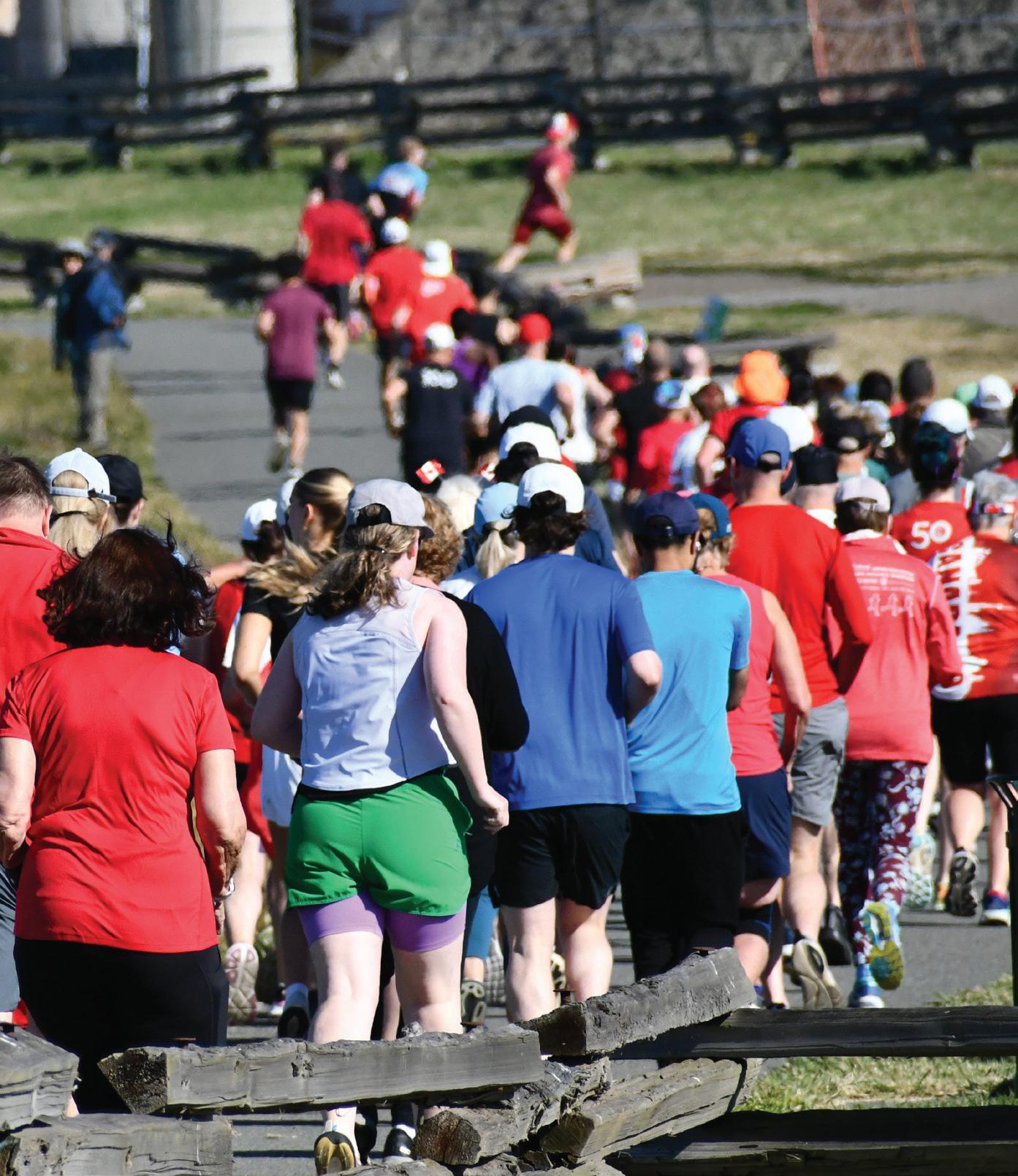
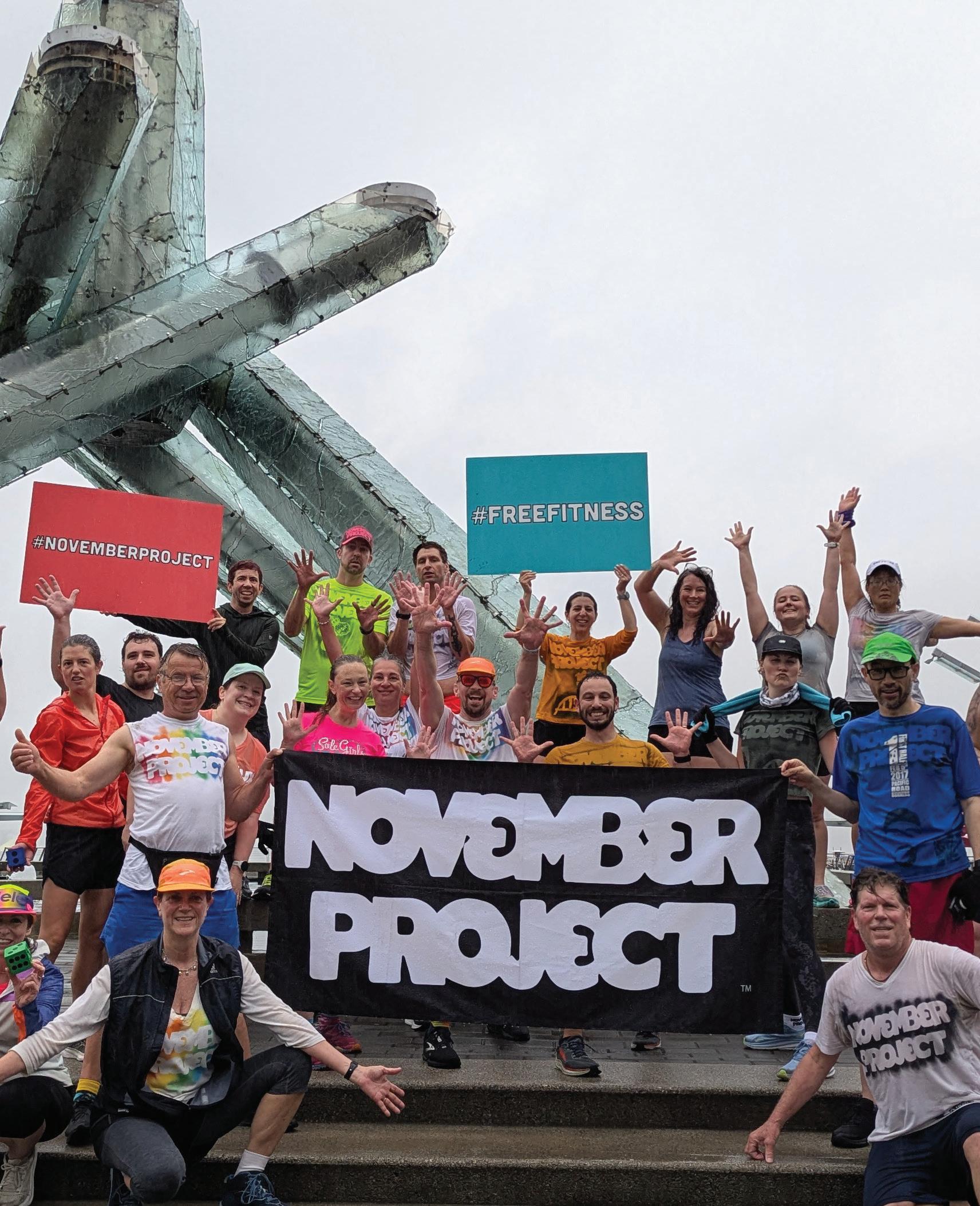
KIM NGO NOVEMBERPROJECT
WWW.NOVEMBER-PROJECT.COM
If you find yourself in a city and want more than just a run, the November Project could be the challenge you are looking for. This “free fitness movement” is in 53 locations worldwide with over 3,000 members working out weekly. While the majority are in North America, there are groups in cities such as London, Hong Kong, and Sydney and others scattered in Eastern Europe and Asia.
The workouts depend on location, but in addition to running, exercises can include stairclimbing, hill repeats, jumping, cardio, core, and high intensity interval training (HIIT), all led by experienced leaders.
The groups all meet early weekday mornings (usually 6:30 a.m.) from one to three days a week. All abilities are welcome from the casual runner to marathoners and triathletes looking to fit in a weekly workout, no matter where they are. Locations are on the website with each group listing on social media where to meet. Just show up!

GO! RUNNING TOURS – WORLDWIDE
GO! RUNNING TOURS GORUNNINGTOURS WWW.GORUNNINGTOURS.COM
“Providing running experiences for runners that travel” is Go! Running Tours’ motto. With over 60 destinations worldwide and more added annually, Go! Running Tours offers travellers sightseeing runs led by local runners, who not only know the best running routes, but who are knowledgeable about their city and what to see.
Tours include a five or 10-kilometre Ancient Athens Tour, an eight-kilometre Best Views Tour of Porto, Portugal, a 13-kilometre Architectural Tour in Tokyo, or a 10-kilometre Rio de Janeiro Copacabana Beach Sunrise Tour.
There is also a service called “Just Run” for those who are interested in the sightseeing runs but don’t want to stop as much because they are training for a race or just prefer continuous running. “Just Run” is offered in 30 cities with distances of seven, 10 or 21 kilometres.
Choices include a seven-kilometre run in Bangkok, 10-kilometre run in Buenos Aires, or a 21-kilometre run in London, all with local guides.

A look at epic trails to explore in each province and territory
BY EMILY MEYER
IMPACT Magazine guest editor, freelance writer and travel enthusiast from Calgary, AB. EMILY.MEYER.TRAVELTALES EMILYMEYER287
The world is home to endless kilometres of pathways for the trail enthusiast to explore. Truly, there is no shortage of destinations you can jet off to for a little adventure. But sometimes in our quest to find the most daring and spectacular places, we forget about the highlights in our own backyard. That is why we are taking you on a cross-country trip of the incredible trails to run or hike in Canada’s provinces and territories.


BRITISH COLUMBIA – JUAN DE FUCA TRAIL
47 KILOMETRES | LOGAN KUZYK
Hugging 47 kilometres of the wild Pacific coastline on Vancouver Island, the Juan de Fuca Trail is an adventurer’s dream.
With old-growth forests, rocky headlands and sweeping ocean views, Juan de Fuca has been described as a “mini” West Coast Trail. But without the strict permit systems and crowds of Canada’s most popular long-distance trail, hikers and runners can enjoy similar challenges of rugged terrain and significant elevation change with less hassle.
Hikers looking to overnight on the trail only have to pay a small fee to stay at one of the designated campgrounds along the way.


ALBERTA – NORTHOVER RIDGE
34 KILOMETRES | ARJAY NEYRA
Most people visiting Alberta for the first time will want to head out to the world-famous Banff. And we can’t argue that Banff has some breathtaking trails, but for those looking for a more venturesome experience, Kananaskis is the place to go—more specifically, the Northover Ridge.
This 34-kilometre loop is perfect for the adventurous, with over 1,500 metres of elevation gain and a thrilling knife-edge traverse along the Continental Divide. •

11.4 KILOMETRES | BENJAMIN HUTTON, TOURISM SASKACHEWAN
Experience the uniqueness of Canada’s landscape with this rugged 11-kilometre out-and-back in Saskatchewan’s Grasslands National Park.
Pack your sunscreen and water for this hike because as the name suggests, there is no protection from the sun in the badlands landscape. Plan to start your hike early, before the heat of the day sets in as temperatures in the badlands can be 10C hotter than elsewhere. Despite the heat, hikers are treated to solitude and striking terrain as they pass hoodoos, steep coulees, and sun-scorched lands.
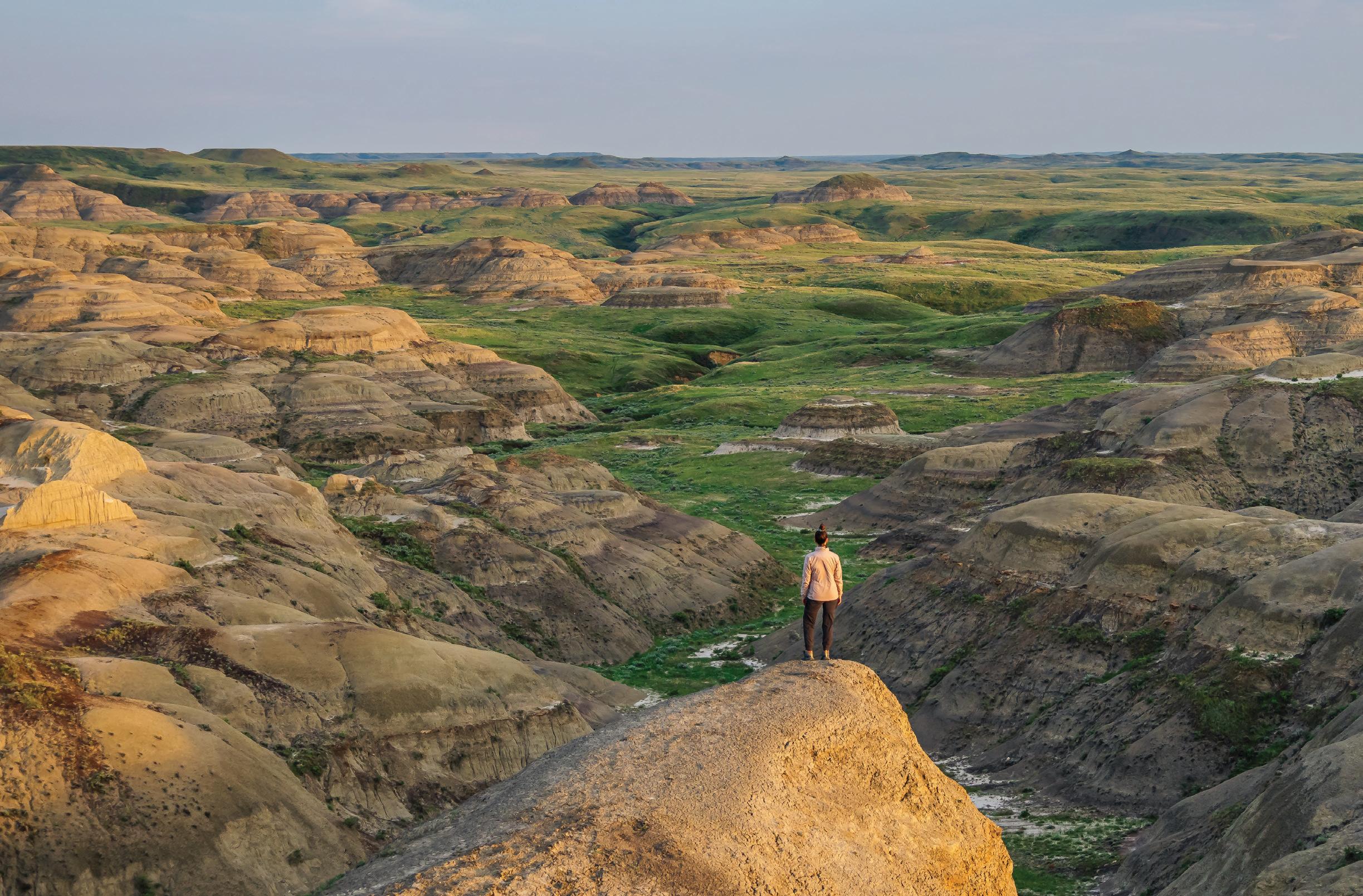


10.4 KILOMETRES | TRAVEL MANITOBA
Canada’s vast landscape keeps on giving on the Spirit Sands & Devil’s Punch Bowl Trail in Spruce Woods Provincial Park, where hikers and runners are treated to an array of scenery.
From Manitoba’s only sand dunes to grassland prairies, rolling hills, forests, and lakes, this 10-kilometre trail truly has something for everyone.
Expect a workout for your calves as you battle the shifting sand underfoot, and know that your reward for tricky terrain is breezy ridges where wildflowers grow in abundance. And once you reach the Devil’s Punch Bowl, enjoy the dazzling turquoise waters.

22.4 KILOMETRES | DESTINATION ONTARIO
This is a trail that even native Ontarians living in the province’s metropolitan areas are going to want to make a trip for. Rising dramatically above Lake Superior in Sleeping Giant Provincial Park near Thunder Bay, the Top of the Giant Trail is Ontario’s ultimate big-view hike.
The 22-kilometre out-and-back is perfect for hikers and runners looking for a challenge with a big payoff. Visitors pass through forests of spruce, birch and poplars and along the shoreline of Lake Superior before climbing towards the high point of the trail where they take in the staggering views—a sheer cliff some 300 metres above the world’s largest freshwater lake.

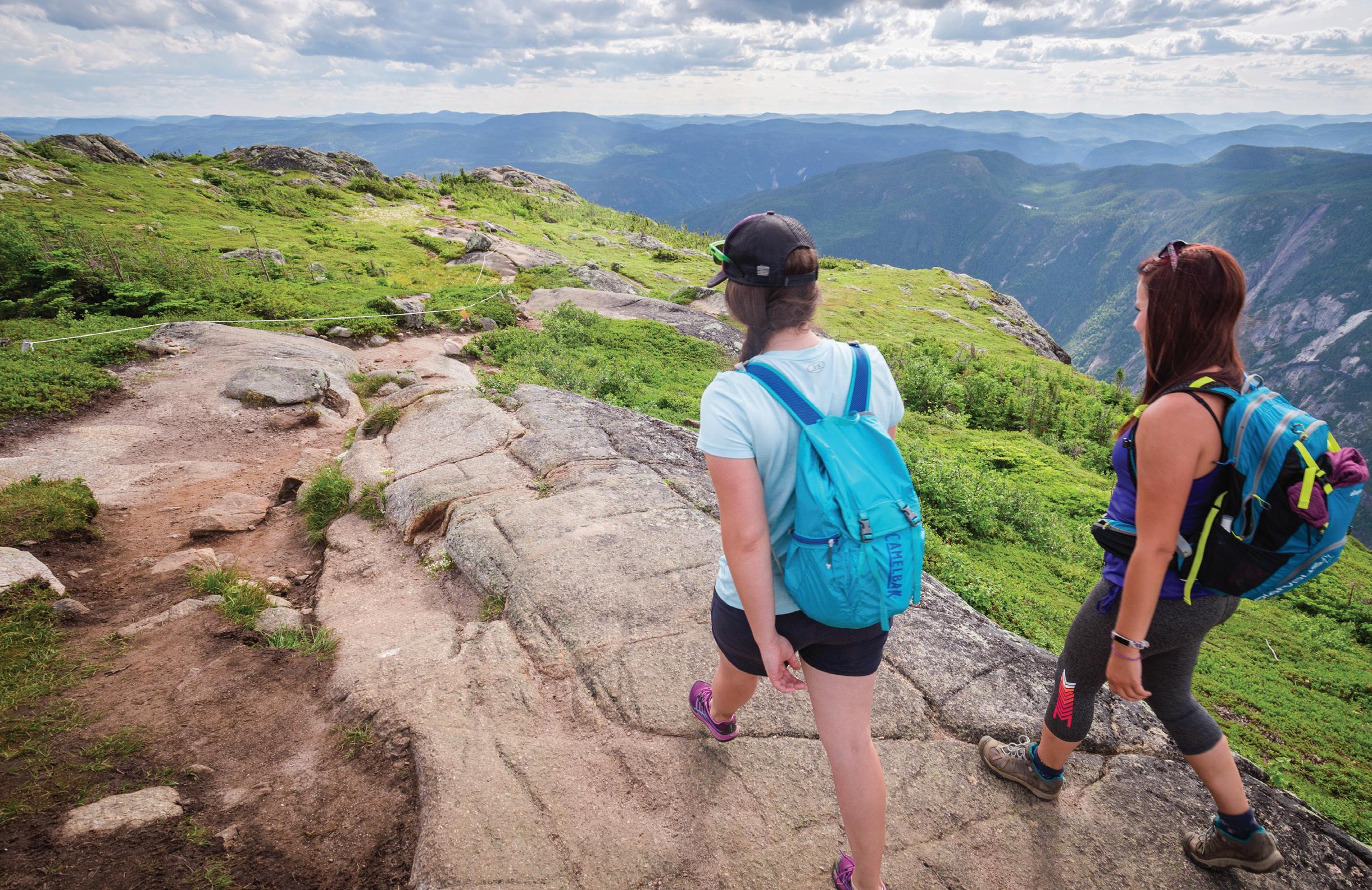

11.2 KILOMETRES | IAN ROBERGE, TOURISME CHARLEVOIX
Carrying on with the quad- and calf-burning trails, the Acropole des Draveurs Trail in Hautes-Gorges-de-la-RivièreMalbaie National Park will give you a challenge your whole body will feel, but a reward your mind won’t soon forget.
This incredibly popular hiking spot north of Quebec City does have an entrance fee for the national park and there is a free shuttle that visitors must take to reach the start of the trailhead.
Once on the trail, expect steep switchbacks and climbs with three main summits, each with increasingly magnificent views of the river valley, lush forest, and surrounding peaks. •


Stretching 41 kilometres from the Big Salmon River and hugging the coastline to the Fundy National Park, this rugged, world-class trail should be at the top of all trail runners’ and hikers’ bucket lists.
The Fundy Footpath offers an unparallelled wilderness experience as travellers hike through forests, pass waterfalls, and cross pebble beaches and ravines—including two tidal rivers that can only be crossed at low tide.
Camping conditions are primitive with no designated sites and water treatment is necessary, so make sure you’re prepared with all of the essentials before taking on this mammoth trail.


13.2
The Skyline Trail may be the first trail to come to mind when we think of Nova Scotia hiking. But in 2025, it’s so popular that it reaches capacity most days. That’s why we’re recommending a less crowded but no less stunning option.
The Cape Split Trail offers a mix of dense woodland beauty and scenic lookouts over the Bay of Fundy, where hikers can catch a glimpse of the world’s highest tides.
But the true gem of this hike comes at the trail’s dramatic headland, with towering clifftop views of where the Minas Basin meets the Bay of Fundy.

449
Built on a decommissioned railway line, Confederation Trail runs the entire length of P.E.I. Although the main trail runs 273 kilometres from Tignish in the west to Elmira in the east, the trail branches off to various towns and communities on the island, bringing the trail’s total length to 449 kilometres.
The trail may be long, but it’s flat and easy to tackle in shorter stints. Confederation Trail is also more than just your average hiking trail with over 1,600 geocaches and nearly 250 bilingual interpretive panels along the route.
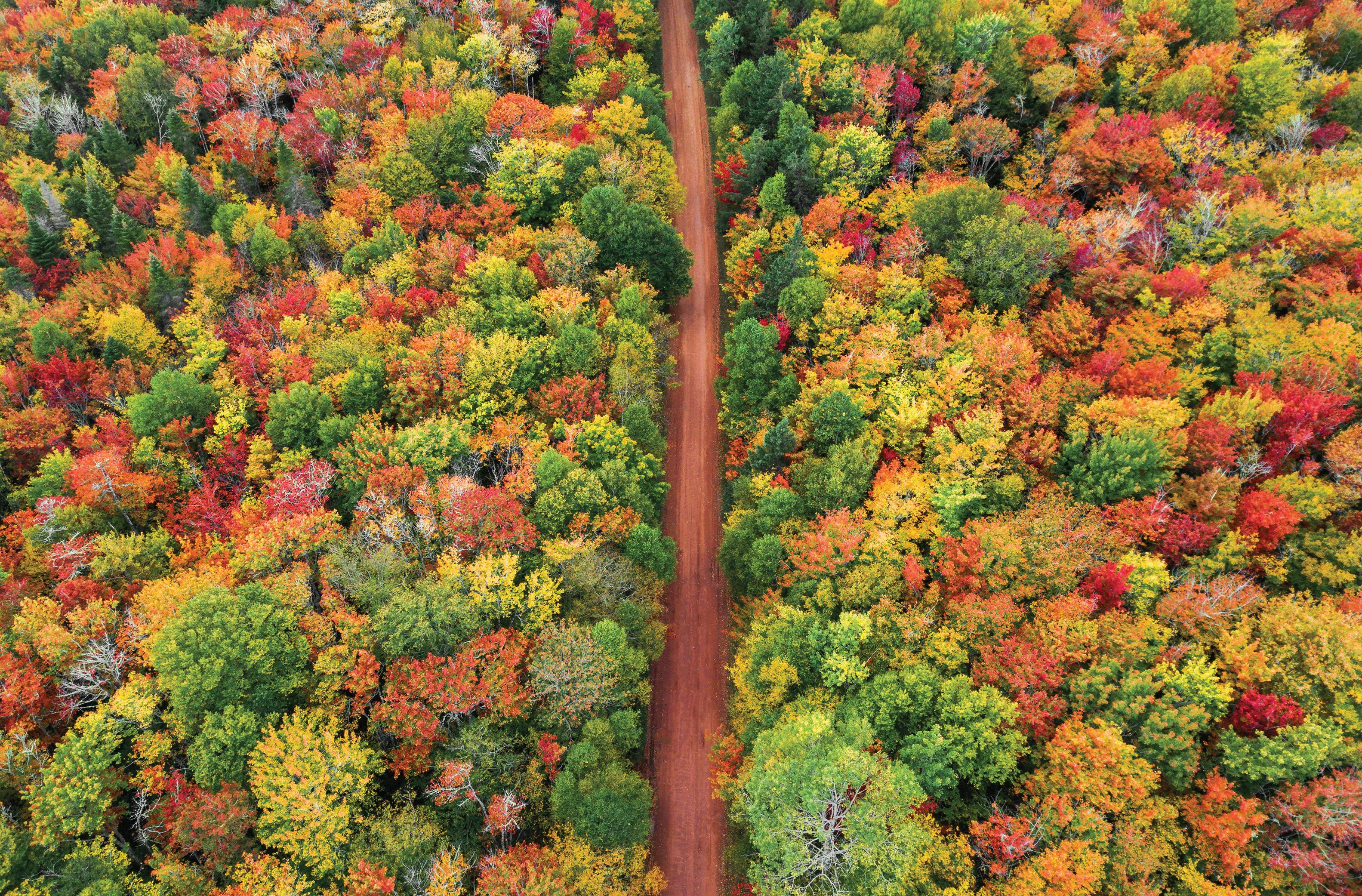


15.4
It’s true that Gros Morne Mountain Trail captures the raw and untouched beauty of Newfoundland, but similar to other trails on this list, it’s not for the faint-hearted. This challenging loop will test your limits as you climb nearly 800 metres from lush forests to the summit of Newfoundland’s second-highest peak.
Expect views of Ten Mile Pond, Long Range Mountains, wildlife and wildflowers. Those hoping to tackle this trail should be prepared with the right clothes and plenty of water. Also, plan your visit wisely as the trail is closed for ecological reasons from May to late June each year. •

22.2 KILOMETRES | MICHAEL OVERBECK, TRAVEL YUKON
Grizzly Lake Trail is located in Tombstone Territorial Park, with Dawson City the closest hub about an hourand-a-half south.
This is a hike that takes a little more preparation than some of the others. A permit must be purchased if you intend to camp, plus, all trail users must register and attend a backcountry orientation before starting the hike.
But don’t worry. The preparation will be worth it to experience the untamed wilderness of Canada’s north. With rolling grassy meadows, jagged peaks and alpine lakes, this is a hike you won’t soon forget.

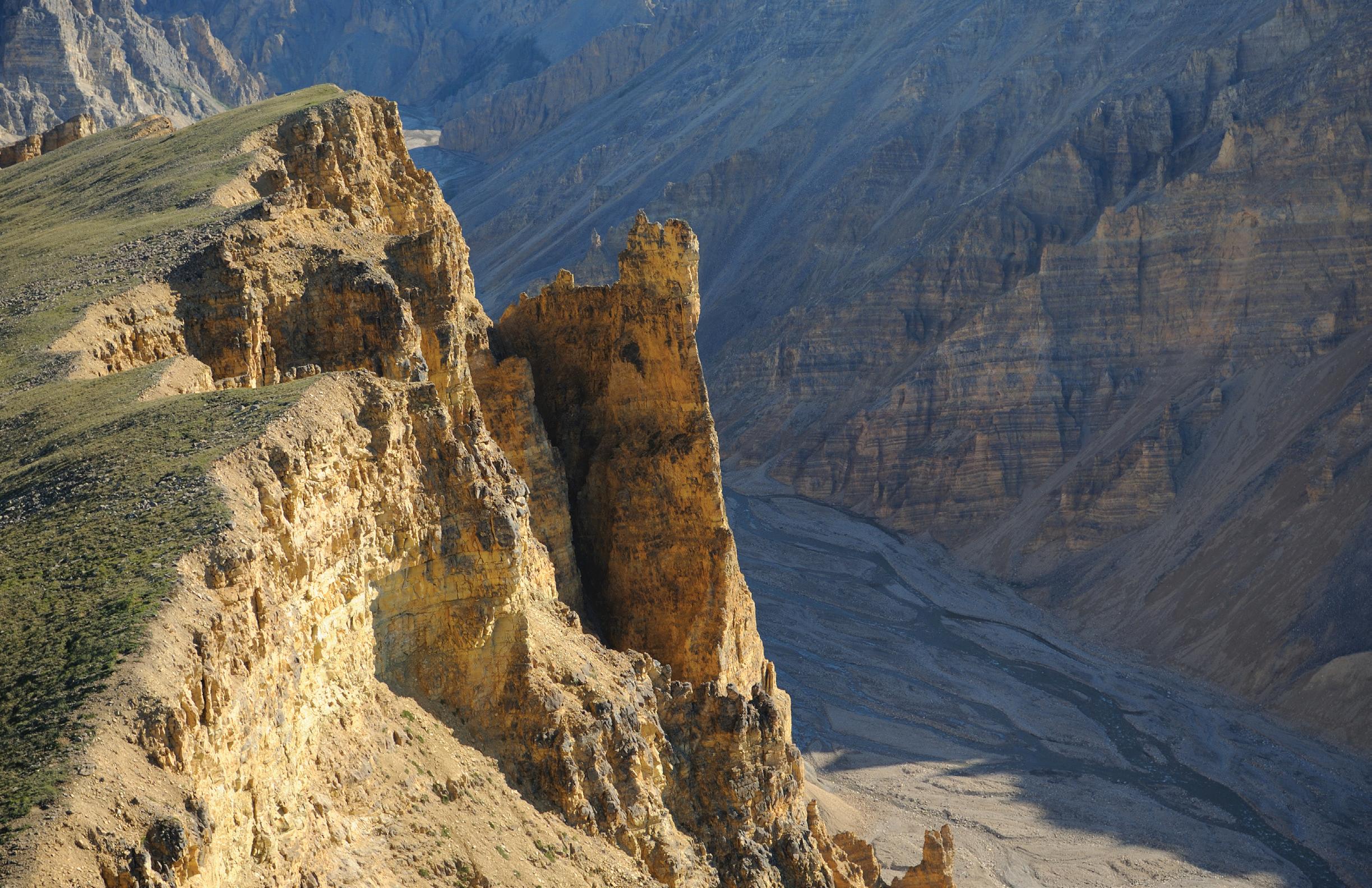

350 KILOMETRES | HANS PFAFF, NWT TOURISM
If you’re looking for solitude and seclusion, this is the hike for you. You can put your cell phone away—unless you want to take photos of the dramatic landscape—because there is no service along the trail.
From Norman Wells, N.W.T., through the Mackenzie Mountains and ending at the Macmillan Pass on the Yukon border, this is one of Canada’s most challenging hikes. But if you’re up for the challenge, it’s also one of the most rewarding. You’ll trek through rugged mountain valleys, tundra meadows, and past relics of military history.


It’s not the territory’s most extreme trail—that title goes to the 97-kilometre Akshayuk Pass—but this is certainly a great trail to get accustomed to Nunavut’s landscape with beautiful scenery along the coast. Located near Iqaluit, runners and hikers alike can enjoy a relatively relaxed journey along the bayside.
What makes this a truly special (and Canadian) trail is that you can see a historic Hudson’s Bay Company establishment; old building foundations and rusting machinery tell of a once-booming establishment from 1949.
Some sections of the trail can be hard to follow, so an offline GPS map of the trail is recommended.
PHOTOGRAPHY: Graham McKerrell
MCKERRELLPHOTOGRAPHY

Once again, we’ve partnered with top runners from across Canada to put this year’s best road running shoes through their paces so you can make confident choices. After all, every great run (and race) begins with the right pair of shoes. Browse our 2025 reviews to find updated favourites and breakthrough innovations designed to inspire you to get out the door and train for your next goal.
This is the difference between the heel and the forefoot measurements, or in other words, how much your toes ‘drop’ below your heel. Why is this important? Because a higher drop can lead to more heel striking and also transfers some strain away from the lower leg and up towards the knee. A lower drop will shift the load further down to your calf. Check with an expert, choose what feels comfortable to you, and take into account your running mechanics and history of injuries.

$300 W
Adizero Adios Pro 4 6.1 oz. | 6 mm Drop www.adidas.ca
The Adizero Adios Pro 4 is a fabulous choice for fast, aggressive running. It’s lightweight without feeling flimsy, offering a stable ride thanks to its tough upper and gusseted tongue. Midfoot and forefoot strikers will appreciate the generous cushioning underfoot. The simple lacing system keeps the foot securely locked in. Traction is excellent, even on wet or slick surfaces. Whether you’re racing or doing speedwork, this shoe delivers responsive, confident performance every quick step of the way.
SYL CORBETT, Calgary, AB – World Cup and World Championship competitor in triathlon, duathlon, mountain running, snowshoeing and marathons. Private consultant to pro athletes.
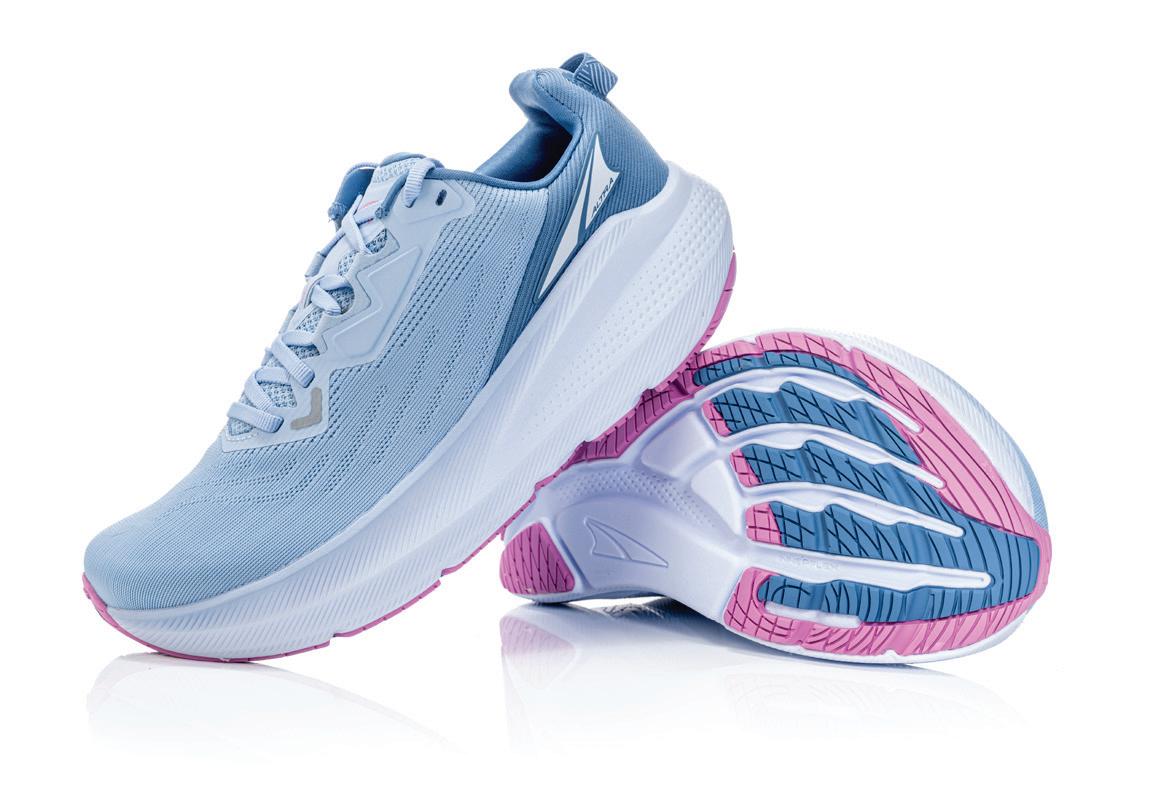
FWD VIA

$200 W
8.3 oz. | 4 mm Drop altrarunning.com
This is a great shoe for logging easy miles. The ample toe box kept my toes happy, and the firm cushioning provided plenty of protection for my joints. The rocker is subtle, so the shoe feels very stable, and I even took it out on some urban trails. This shoe does not have great energy return, so I would not recommend it for faster workouts. It fits true to size.
FORD , Calgary, AB – Ultramarathon runner with a passion for running long distances in the mountains.
$300 M
Adizero Adios Pro 4 7.1 oz. | 6 mm Drop www.adidas.ca
Adizero Adios Pro 4 for the win! This race-day road shoe is built for serious runners who demand elite performance. True to size and light as a feather, it’s extremely responsive despite high cushioning. It’s a magical combination made possible by carbon-fibre rods, a paper-thin rubber outsole, and a minimal, breathable upper. Strides at any pace deliver a propulsive, efficient run. Transitions are smooth and energetic, with a snap at toe-off. Chasing personal bests or aiming for the podium, this shoe delivers!
NATHAN BODEWITZ , Calgary, AB – Founder and head strength coach at Peak Fitness YYC, and a Founding Partner of FitHub. He is a trail runner, OCR athlete, mountain biker, big mountain skier, and proud dad.

$190 M Torin 8
oz. | 0 mm Drop altrarunning.com
I have owned many versions of this shoe over the years, and it has never disappointed me. Once again, we have a winner with the Torin 8. It fits true to size, features a nice wide toe box, and offers plenty of cushioning. It feels great right out of the box and feels light but stable for hard, fast running. I really appreciate the new stiff heel counter, which has previously been a problem for me with some Altra models. If you want comfort and cushioning, the Altra Torin 8 is a must-have!
PHIL HIOM , In 2025, Phil returns to his ultra roots with another solo Death Race attempt. Excited to be back in Grande Cache, he brings 12 years of ultra racing experience and a clear plan. He hopes this will be the year he gets into Western States Endurance Run, believing the effort is always worth it.

Novablast 5
www.asics.com/ca
$180 W
oz. | 8 mm Drop
The ASICS Novablast 5 is like running on a trampoline. I took them straight out of the box for a 25-kilometre run, and they felt great from start to finish. They are super light and cloud-like underfoot and offer a forgiving ride that’s perfect for long runs or recovery days. The toe box is a little snug, but not a dealbreaker. If your joints are grumpy when you pound the pavement, this shoe is a godsend.
NICKI REHN , Calgary, AB – ultra-marathon runner, orienteer, and adventurer who loves to travel the world doing crazy races, disappear deep into the mountains, and rip up the local single-track.

$215 M Gel-Nimbus 27
oz. | 8 mm Drop www.asics.com/ca
The Nimbus 27 is an ultra-cushioned shoe, designed to handle day-today training and long-run duty. These shoes felt right at home on my feet out of the box. The cushioning and comfort are what immediately stand out on first run - these shoes bring a very soft and plush ride. The Nimbus 27 would be a great companion for half- or full-marathon training, and for those wanting a forgiving shoe to take the sting out of the pavement.
MATTHEW CECILL , Salt Spring Island, B.C. – Trail runner and running coach, represented Canada at the Trail World Championships and holds various trail FKTs.

BROOKS
$210 W Glycerin 22
oz. | 10 mm Drop www.brooksrunning.com
The Glycerin 22 is a plush, high-cushioned daily trainer best for easy days on the road. The DNA Tuned midsole provides a soft and supportive landing. The DNA Loft v3 is nitrogen-infused, a process that creates a midsole with sealed air pockets--increasing durability of midsole and prolonging overall lifespan of the shoe. The upper is breathable and the fit has a “locked-down” feel.
EMILY SETLACK ,Trenton, ON – Canadian 2:29 Marathoner and Mountain Runner.

$180 M Ghost 17 10.1 oz. | 10 mm Drop www.brooksrunning.com
My first impression running in the Ghost 17 was that the shoes were like an apparition on my feet. They felt light with zero pinch points or sloppiness in the upper, giving my foot a locked-in, secure feeling. Another feature that impressed me was the cushioning created by Brooks’ new DNA LOFT v3 nitrogen-infused soles, which provided a stable, fluid and slightly bouncy ride. This shoe fits perfectly into the easy long-run category for me, making those kilometres tick by with ease.
JOEL NEUMANN , Calgary, AB – Endurance athlete, Linked-team half-marathon Guinness World Record holder, 2:46 marathoner, Ironman 70.3 finisher.

$230 W
Nordlite Tempo 7.1 oz. | 6 mm Drop
www.craftsports.ca
This Craft road racing has some of the bounciest foam I have felt in this type of shoe. The outsole has great traction and the design of the shoe offers amazing stability. This shoe is great through corners with the best heel-lock design I’ve felt in a carbon shoe. The forefoot is generous but I would say the shoe fits about a half size small. Overall it has great bounce for high-speed sessions and races and is ideal for technical courses.
MELANIE MCQUAID , Victoria, B.C. – Professional triathlete/coach at melrad. com, 3x XTERRA World Champion, 2x ITU Multisport World Champion.

$230 M
Nordlite Tempo 9 oz. | 6 mm Drop www.craftsports.ca
Somewhat new to the road running shoe, CRAFT has created an awesome lightweight tempo shoe perfect for racing a marathon or half marathon. The Cr Foam Pro™ midsole is firm but forgiving, offering optimal ground contact and rebound. The single-layer open weave Aeromesh upper is lightweight but provides ample support and maximal cooling with no heel slippage. Craft Endurance Fit® features a narrow heel cup, mid-foot lock-in, and a spacious forefoot. Overall, this shoe works well for fast road running including triathletes wanting a lightweight weapon worn with or without socks.
CAL ZARYSKI , Calgary, AB – Professional active lifestyle coach, 10x World XTERRA Triathlon Champion, 2021 Ironman 70.3 World Champion and holds the most Multisport world titles in Canada at 12.

HOKA
$180 W
Clifton 10 8 oz. | 8 mm Drop www.hoka.com
I was pleasantly surprised by the HOKA Clifton, and after a 10-kilometre run, I’d definitely add it to my daily trainer rotation. Despite its high stack, it felt lightweight and stable, with just the right amount of softness. The early-stage Meta-Rocker provides a smooth, “glide” feel—and I loved it. Built to grind out miles, it’s less ideal for speedwork but great for runners seeking a firmer, ground-connected feel with comfort. A solid choice for consistent mileage or a soft, reliable ride.
MICHELLE CLARKE , Hamilton , ON – Sub-Elite track, road and trail runner who now competes as an AG athlete. She is currently training for the Berlin Marathon, which will be her fourth Major Marathon Star.

$180 M
Clifton 10 9.8 oz. | 8 mm Drop www.hoka.com
The HOKA Clifton 10 delivers a max plush and stable ride ideal for daily training and logging miles in comfort. The 10 has an 8-millimetre heelto-toe drop and a slightly roomier forefoot, offering a smooth transition and ample space for toe splay. The CMEVA midsole provides cushioning without excessive softness, ensuring stability even with a high stack. Although it is not the most responsive shoe in HOKA’s lineup, the Clifton 10 excels in comfort and versatility.
IAN MCNAIRN , Calgary, AB – Trail and ultrarunner, guy with a PhD on ultrarunning community who wears HOKAs as an Emergency Medicine physician.
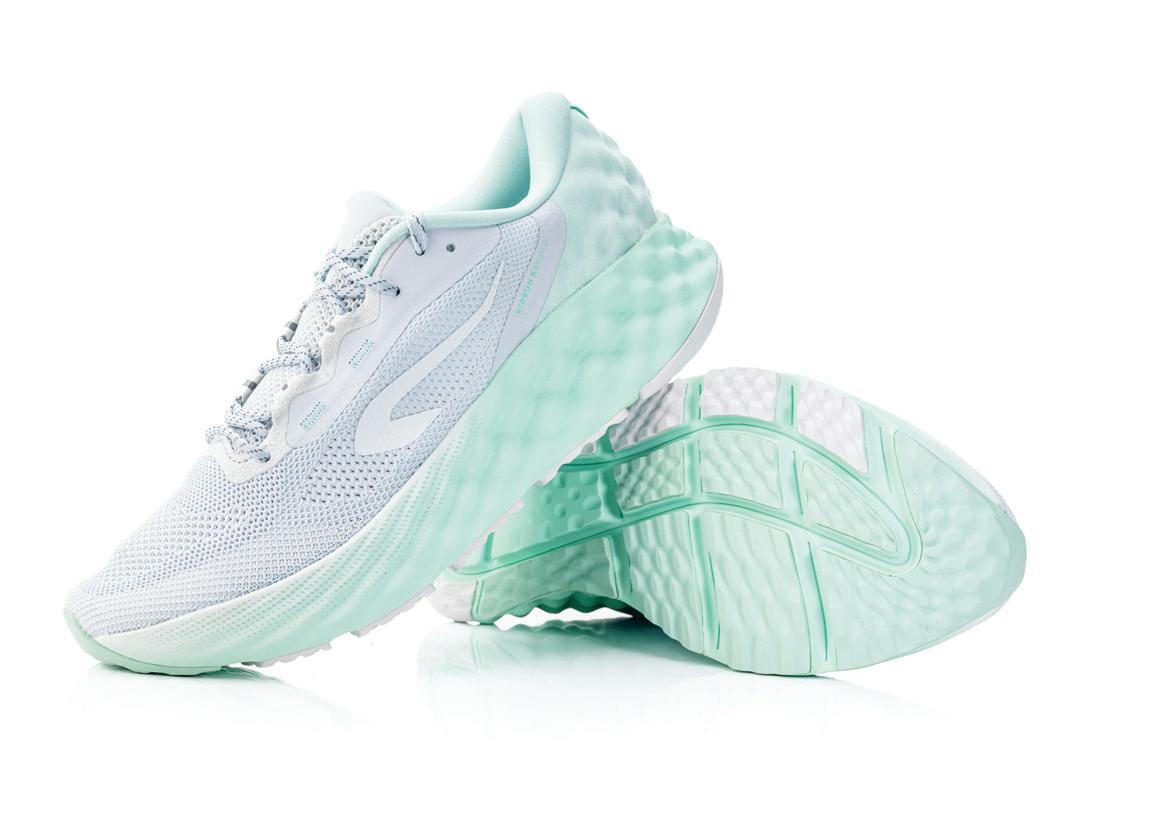
$185 W

KD 900X.2
6.4 oz. | 8 mm Drop www.decathlon.ca
The amazing KD 900X.2 brings high-end performance within reach with a responsive carbon plate built for speed, comfort, and endurance. Dreaming of a carbon-plated shoe at an affordable price? This is the one. Plush and responsive, it feels like running on clouds while propelling you forward. The light, airy, well-ventilated upper keeps your foot cool during summer races or speed workouts. Though less stable than some built-up carbon shoes, it deserves a spot in your top three race-day picks!
GRACE HIOM , Kamloops, B.C. – Grace is an experienced ultrarunner who has completed numerous 50-kilometre, 100-kilometre, and 100-mile trail-running races over the past decade.

Neo Zen
$190 W
7.1 oz. | 6 mm Drop can.mizuno.com
This is a lightweight, cushioned shoe that offers a soft, bouncy ride without a plate, making it easier on the knees. The shoe fits true to size, and while the higher knit upper might irritate those with pronounced ankle bones, above-ankle socks are an easy fix. From short sprints to long recovery runs, this shoe excels in versatility. Plus, at a more affordable price compared to competitors, it’s a great entry into the “super shoe” world. If you’re looking for a well-rounded, budget-friendly option, this Mizuno is worth a try.
SASHA GOLLISH , Toronto, ON – 2015 bronze medallist, Pan Am Games; running roads to the trails and recently breaking the World Masters Record in the Indoor Mile – now a Masters World Record holder.
$240 M KD900X LD+ 8 oz. | 4 mm Drop www.decathlon.ca
Kip, Kip Hooray. I love this shoe; the Kiprun from Decathlon. If it were a reindeer, it would be Dasher. Why? A ridiculously light upper, roomy toe box, and a lace-lock system that holds the heel deep and true. No slipping, sliding, binding, or grinding. The upper sits on a cushion that’s friendly for both forefoot and heel strikers. The midsole/outsole has enough cushion to be tender and not rob you of rebound, making it comfortable for longer runs and resilient enough for your shorter, faster efforts.
PETE ESTABROOKS , Calgary, AB – One of IMPACT Magazine’s Canada’s Top Fitness Trainers, ultrarunner and coach is happiest when running in the mountains.

$190 M Neo Zen 8.5 oz. | 6 mm Drop can.mizuno.com
This shoe is a light, bouncy, and well-cushioned daily trainer that provides incredible comfort and decent support for various distances. The nitrogen-infused midsole and somewhat aggressive shape of the sole make it feel like it is actively propelling you forward as you run, while the lacing system creates a secure heel-lock and ensures a snug yet comfortable fit.
SEAN ALLT, Chilliwack , B.C. – A 16-year veteran of the fitness industry, experienced ultrarunner, founder and head coach at BackcountryStrength. com, and one of IMPACT Magazine’s Canada’s Top Fitness Trainers in 2022 and 2024.

$209.99 W
Fresh Foam X 1080v14 8.3 oz. | 6 mm Drop
www.newbalance.ca
The plush cushioning and higher stack make this shoe a great choice for daily runs and recovery miles after hard efforts. The added cushion doesn’t take away from the responsiveness, and the rocker provides a smooth transition from midfoot to forefoot. The upper feels light and breathable—ideal for warmer months. Although it’s marketed as true to size, I had to loosen the laces near the toes. If you prefer a more natural foot splay, consider sizing up. A classic neutral trainer that would be a welcome addition to any runner’s lineup.
CAT YOUNG, Calgary, AB – Competitive runner and life-long endurance athlete.
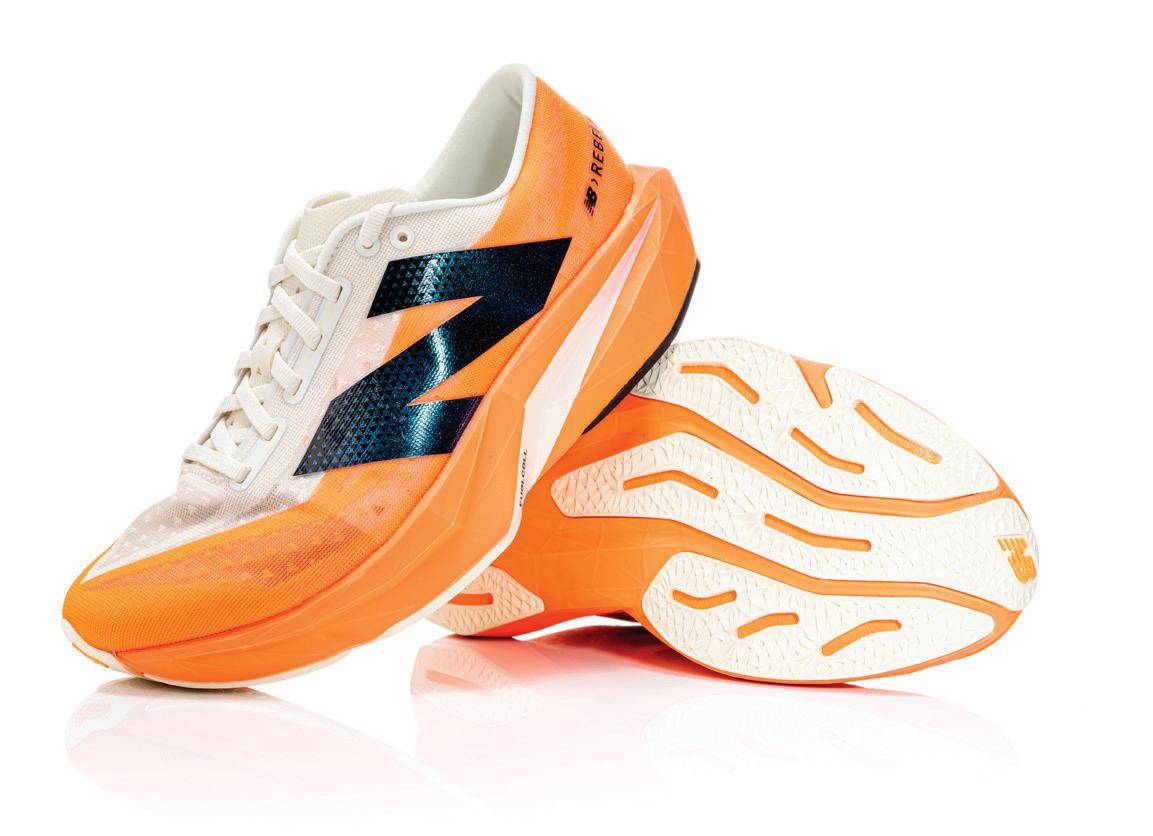
FuelCell Rebel v4
www.newbalance.ca
$179.99 M
oz. | 6 mm Drop
A light, peppy, super-trainer that can really do it all! The stack height provides adequate cushion for long runs while keeping the overall weight down. New Balance has got the rocker just right, throwing you forward into the next stride, which I found really helped those heavy leg days! The shoe has an accommodating forefoot fit but tends to run short in length, size up a half size.

Vomero
$190 W
8.6 oz. | 10 mm Drop www.nike.com/ca
The Vomero is a cushioned trainer that gives a responsive and fast feel. It is lightweight and bouncy without being squishy, and the ride lets you run efficiently even on your easy recovery and long run days. The fit might be a bit narrow in the forefoot for some, but I like the way the upper was snug enough to not allow for extra movement and the flat laces also have the right amount of grip for a good fit around your foot. I love this shoe for my faster tempo training days, where I want that speedy feel without wearing a racing shoe. This shoe delivers more than meets the eye.
LUCY SMITH , Victoria, B.C. – A Canadian Champion of road and cross country. Now a Masters athlete, she coaches runners, leads community runs, and has an active lifestyle in her hometown.
ANDREW RUSSELL , Victoria, B.C. – Seeks out roads, trails and mountains with the family, dog and friends. Forever competitive on the road and trail scene, constantly discovering new events to challenge himself and experience new places.

$190 M
Vomero 18 11.5 oz. | 10 mm Drop www.nike.com/ca
The Nike Vomero 18 delivers exceptional cushioning (46-millimetre heel-stack height) with a plush, maximalist feel, making it a standout choice for daily training and long runs. The integration of ZoomX foam provides impressive energy return, offering a responsive ride without sacrificing comfort. The shoe feels stable and well-balanced, handling both easy miles and uptempo efforts with ease. With a secure fit and durable outsole, the Vomero 18 is a reliable workhorse for runners seeking comfort, support, and versatility.
BLAINE PENNY, Calgary, AB – An elite masters runner with 3 Canadian ultramarathon championships, 6 Guinness World Records, a 2:27 marathon PB at age 48, and a 1:11 half-marathon PB.
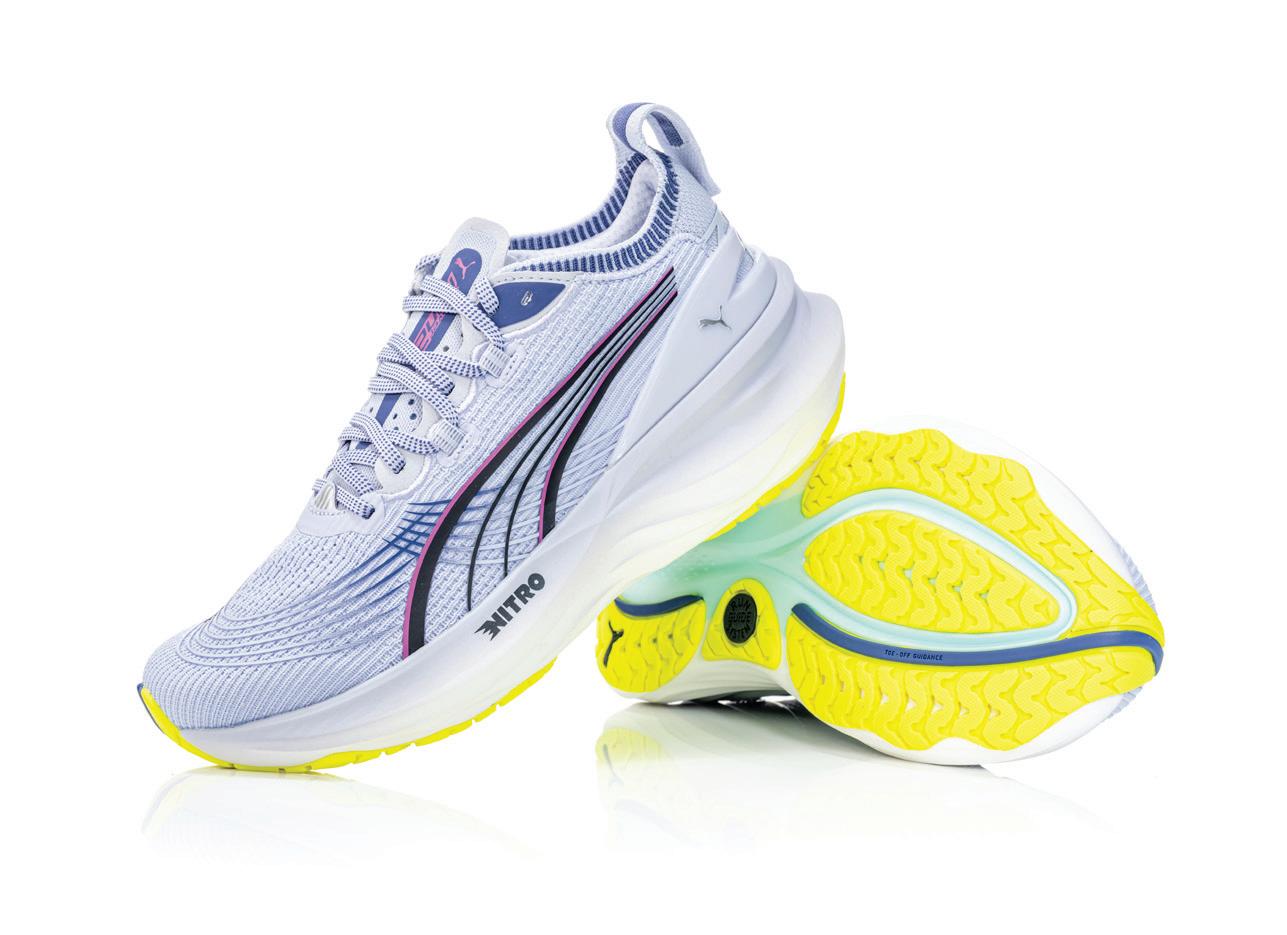
ForeverRun Nitro 2
www.puma.com
$200 W
9 oz. | 10 mm Drop
This shoe surprised me in the best way! Right out of the box, the ForeverRun Nitro 2 was an excellent training shoe. It fit my narrow foot perfectly and was incredibly comfortable, though runners with a wider forefoot may want to size up. It offers stability for overpronators and ample cushioning for long runs. A padded heel cup holds the foot steady, and the heel loop protects the structure. The thicker mesh may feel warm in summer. Note that the laces are shorter than other brands, which I prefer. A snug, cushioned ride worth trying!
JEN MILLAR , Victoria B.C. – Competitive distance runner; three-time Masters Champion at National Cross Country Championships; winner of 2022 TC 10K.

Deviate Nitro 3
M
| 10 mm Drop www.puma.com
This speedy carbon-plate tempo and race shoe looks fast and feels even faster. The fit suits neutral runners with normal to narrow feet. It’s a bit tight with thicker socks but fine with thinner race socks. It feels light and responsive. Great on predictable surfaces but a bit unstable on rough terrain. The shallow, narrow heel cup is comfortable with no slippage, with decent cushioning but runs a bit firm. The carbon plate is somewhat undetectable, with only a mild amount of spring at moderate speeds. PUMAGRIP sole handles wet roads well. Ideal for road racers and track athletes running longer distances.

ON
Cloudsurfer 2
www.on-running.com
$200 W
7.8 oz. | 9 mm Drop
This was my first time training in On shoes, and I was impressed. A great shoe for longer runs, due to the cushioning, the Cloudsurfer 2 has a comfortable upper and grippy lacing system for a snug feel. The shoe moves really well underfoot, with a smooth transition from strike to toe-off, and with just enough stability through the heel cup to keep you well protected through longer runs or days when you are fatigued. A bit more width in the forefoot suited me and I have only positive impressions as to its functionality.
LUCY SMITH , Victoria, B.C. – A Canadian Champion of road and cross country. Now a Masters athlete, she coaches runners, leads community runs, and has an active lifestyle in her hometown.
CAL ZARYSKI CALGARY, Calgary, AB – Professional active lifestyle coach, 10x World XTERRA Triathlon Champion, 2021 Ironman 70.3 World Champion and holds the most Multisport world titles in Canada at 12.

ON
$200 M
Cloudsurfer 2 9 oz. | 9 mm Drop www.on-running.com
The On Cloudsurfer 2 is an impressively light and agile ride, making it well-suited for daily training and shorter uptempo efforts. The fit is secure yet comfortable, with a breathable upper that wraps the foot well without feeling restrictive. The cushioning is soft and smooth, providing a pleasant underfoot feel, though it leans toward the thinner side for longer runs or higher mileage days. Best for shorter to middistance training where lightness, comfort, and responsiveness are key.
BLAINE PENNY, Calgary, AB – An elite masters runner with 3 Canadian ultramarathon championships , 6 Guinness World Records, a 2:27 marathon PB at age 48, and a 1:11 half-marathon PB.

REEBOK
Floatzig X1
www.reebok.com
$240 W
9.8 oz. | 6 mm Drop
The Floatzig X1 is Reebok’s version of the ever trending super shoe. With every stride you feel propelled forward thanks to the carbonfibre plate and Reebok’s “float ride energy foam”. The shoe has been designed well, feeling light on the feet, snug around the heel and roomy in the toebox with excellent ventilation. I like the overall stack height (a bit lower than its competitors) because I don’t feel like I’m running on stilts. It’s a great shoe for your next marathon, road race, or just feeling fast down your street.
SABRINA WILKIE , Surrey, B.C. – Track, road and XC runner; B.C. Masters 2024 XC Champion and 2016 Victoria Marathon Champion (2:45); Mom of four, wife, and physiotherapist running for fitness and fun with friends.
REEBOK

$240 M
|
If you’re looking for an everyday trainer with a little extra pep, Reebok’s Floatzig X1 offers a unique blend of cushioning and responsiveness. Named for the zigzag geometry that gives the shoe its soft and springy energy return, it is a versatile all-rounder that uses a full-length carbon-fibre plate to propel you forward. The result is an unconventional ride that feels supportive when you’re logging big miles and firm when you’re ready to push the pace.

Ride 18
$180 W
8 oz. | 8 mm Drop www.saucony.com
The Saucony Ride has been known as a “do it all” training shoe, and the Ride 18 is no exception. Lighter weight, it has a PWRrun foam sole, which makes it feel springy and fast. However, the lightness in weight is at the expense of grip. On a wet test run, this shoe felt slippery and didn’t provide very good traction on streets and sidewalks. I expect this shoe will perform best on dry days. Its thin breathable upper allows the foot to feel airy. The Ride 18 fits quite wide, with a much roomier toebox. Overall, it carries the torch in this line well and is sure to keep the Saucony faithful happy.
JEN MILLAR , Victoria B.C. – Competitive distance runner; three-time Masters Champion at National Cross Country Championships; winner of 2022 TC 10K.
KEITH BRADFORD , Calgary, AB – Elite masters runner, coach and communications consultant who has worked with athletes at multiple World Cup Championships and Olympic Games.

$180 M Ride 18
oz. | 8 mm Drop www.saucony.com
From the moment I unboxed the Ride 18s, I knew I had a new favourite. They’re incredibly lightweight with PWRRUN+ cushioning that delivers a smooth, responsive run without feeling overly bouncy. The breathable mesh upper kept my feet cool through the kilometres and four full days at Coachella, yes, they’re that versatile. Stylish, supportive, and supremely comfortable, they offer neutral support that feels great on the road or on your feet all day. Whether I’m logging miles or dancing for hours, the Ride 18s have earned their place as my new go-to shoe.
MARC MORIN , Calgary, AB – An experienced marathon & ultra-marathon runner and triathlete. C ompleted the Boston Marathon, over 12 Ironman events, Canadian Death Race, Sinister 7 & Lost Souls ultra marathons
BY FYONNA VANDERWERF
One of our Canada's Top Fitness Trainers and Instructors 2023 and 2024. Fyonna lives and loves in Muskoka, ON where one of her family rituals is to get to a provincial park every Sunday as a form of green prayer. BEESKNEES_MUSKOKA

The outdoors doesn’t care what gear you have, how strong your legs are, or if your body moves in traditional ways. What it does care about (if it had a soul and a voice) is that you show up. It wants you to feel. To breathe. To step out of your looping thoughts and into the dirt, the wind, the birdsong.
I’ve walked, wheeled, camped, cried, cooked on the fire, sprinted trails, sat in canoes, looked for bears in bear country and stretched under skies so wide they reminded me how small my worries really were. In every province and territory. The space is there to stop and just BE. The outdoors is the ultimate therapist.
Whether you're hiking with your golden retriever or wheeling along a riverside trail, movement outdoors gives your brain something extraordinary—it provides a presence. It’s hard to return emails when your feet are navigating tree roots or your arms are propelling you up a gravel path.
In Canada, where the seasons shape our routines, mental health in motion has its own rhythm. We hibernate and we bloom. We struggle through slush and then—bam!—we're outside in tank tops, arms up to the sky like sunflowers.
For outdoor enthusiasts—able-bodied or mobility-limited— there's no single way to "do" the outdoors. What matters is that we move. On our terms. With intention. In nature. It’s really that simple.
Ever notice how some people need the forest to calm their nerves and others need a windswept peak to wake up? That’s yin and yang in action. Yin is the still lake, the hammock, the restorative hike, the moonlight.
Yang is the sweat, the summit, the sprint, the sunlight. Your outdoor life doesn’t have to be one or the other. Some days, you need to walk slowly and listen to birds. Other days, you need to run until your lungs burn and your thoughts finally shut up. Both are valid. Both are sacred. Your nervous system thanks you for doing either.
1. Block one "green hour" weekly: If it’s not scheduled, it’s toast. Try this: Choose a consistent time (e.g., Sundays 10 - 11 a.m.). Label it “Green Hour” in your calendar. Commit to moving, reflecting, or just being outside.
2. Pair screen life with green life: Take your weekly calls outdoors. Try pacing, strolling, or wheeling during voice notes or catch-ups. Move while you Zoom (with audio only!). Trade 10 minutes of scrolling for 10 minutes of fresh air. Even micromovements outside recalibrate your nervous system.
3. Start or end with the sky: Let the sky set your nervous system. Set an alarm for sunrise or sunset twice a week. Stretch outdoors with five poses or breath cycles. Add a mantra: “I rise like the sun” or “I settle like the moon.”

4. Gear up for good: Comfort invites consistency. Budget for one piece of good gear this season.
5. Journal with trees: Nature rewrites your stress response. Bring a notebook outside. Use prompts: “What does the wind remind me of?” or “What am I holding onto that’s not mine?” End entries with: “And still, I’m here.” If you can’t write, use a voice memo app.
6. Micro adventures, macro gains: Adventure doesn't mean distance—it means depth. Make a list of three trails, parks, or green zones within 15 minutes of you.
7. Share the outside: We’re wired for connection. Pick a weekly “outside accountability buddy.” Try a Sunday walk, outdoor stretch date, or fireside reflection session. Encourage friends to match your pace, not the other way around. Equal energy, not equal stride.
8. Don't wait for perfect weather: Create an outside rescue kit: coat, shoes, thermos, blanket, mobility aid. Post a mantra near your door: “Outdoors first. Feelings will follow.” Our ancestors didn’t wait for perfect weather. Neither should we.
And as a final thought—never forget that Canada still waits for you—your path and your heartbeat. Whether you're pushing wheels over gravel, tying your boots, or tucking into a thermos of soup by a quiet creek, you, my friend, are healing.
This isn’t about peak performance. It’s about present connection—with your breath, your body, and this wild, beautiful place we call home.
Mental health in motion is a simple and profound Canadian courage. And it starts with a single step or wheeling outside.
• Canada has 38 national parks and over 1,000 provincial parks—and many are wheelchair-accessible.
• The Trans Canada Trail is the longest recreational trail in the world—over 28,000 km.
• Nearly 90 per cent of Canadians live within 10 minutes of a park or green space.
• Forest bathing is a recognized mental health practice in several Canadian provinces.
• In First Nations culture, the land is considered a spiritual teacher—not just terrain.
• Canada is home to more freshwater lakes than the rest of the world combined.
• Many provincial parks offer adaptive equipment rentals—like all-terrain wheelchairs and accessible kayaks.
• Spending just 20 minutes in nature can reduce cortisol levels significantly.

BY KATY BOWMAN
Bestselling author of 12 books, including Rethink Your Position and Move Your DNA, Katy is a biomechanist, teacher, and speaker, working to change the way we think about movement. She lives with her family on the Olympic Peninsula, WA. NUTRITIOUSMOVEMENT NUTRITIOUSMOVEMENT
Summer’s here, and that means it’s officially flip-flop season—but before you slide into those easygoing sandals, let’s take a minute to look at how they might be affecting your gait, muscle function, and performance.
When you wear shoes that don't fully connect to your foot, your toes and feet have to work differently to hold the shoe on when you're walking. For runners and athletes, this change in foot mechanics can have ripple effects throughout the body.
It’s easy to assume that flip-flops are the very epitome of minimal footwear. After all, what could be more minimal than a rubber thong attached to a foot-shaped rubber pad? Like the best barefoot shoes, they’re flat, wide, and flexible. They’re also “open”—an important component of the “natural” argument, as they allow for greater sensory input in the form of air pressure and temperature.

It’s true, flip-flops are so close! But they fall short of being minimal-for-the-purpose-ofnatural-gait in a vital way—they don’t connect to our feet. For athletes who depend on efficient, repeatable gait patterns, that missing connection can compromise performance and increase the risk of small, compounding injuries. We have to work our muscles unnaturally to keep them on. (Unfortunately, this toe-gripping action is necessary for slides, mules, and many slippers, too.)
I know, I know… gripping doesn’t sound or even feel like such a big deal, but gripping while you’re walking is more than just toes bending in different places. Those bends end up translating into mechanical input at the level of the nerves and skin and, over time, can create many problems not filed under “musculoskeletal.”
The grip to keep footwear on curls some toe bones up and some down, drives the end of some bones into the ground creating higher-than-normal pressure (hello fracturepotentially-in-the-making!) and drives the ends of some bones up into the top of the shoe (file under: corn, calluses). I won't even mention the tension down the front of the leg—you’ll find it yourself during this top-of-the-foot-stretching exercise that helps undo the chronic tension in both the toes and in the front of the ankle.
If you’re a chronic flip-flop wearer, then this super portable stretch is especially pertinent to your feet and targets not only intrinsic foot muscles but extrinsic ones as well. Do it a few times every day until your feet regain their intended dexterity and/or until you’ve eliminated any cramping.
• Stand on your right foot and reach your left foot back behind you, tucking the toes of your left foot under and placing them on the floor.
• If you find yourself leaning forward, shorten the distance you’ve reached the leg back.
• Bring your pelvis over your standing ankle and upper body over the hips.
• Work up to holding this stretch for a minute, but stop for cramping.
After a while, the toe-gripping motor pattern leads to shortened toe muscles (and a loss of parts that allow movement), which can then affect things like balance and foot arch strength, and lead to toe contractures, a.k.a hammertoes. And flip-flop research also shows that working to keep the shoe on changes many things about your gait, which means they end up affecting more than the feet.
Now I like spring and summer shoes as much as the next person, but I also like my feet to feel great and to be able to walk—or run—long distances without pain. For runners and other athletes, maintaining natural gait patterns and strong foot mechanics is especially important, and flip-flops can quietly undo a lot of that work by encouraging dysfunctional movement patterns. So, I've swapped out all my slide-on sandals for ones that have a strap around the back.
To keep your natural stride (and shoe) on while still enjoying the feel of the sea breeze and sunshine on your skin, swap out those slide-on sandals for something that looks more like a Greek sandal—you know, all strappy and minimal but still fully connected to your foot. If you look around, you can find uppers that are very minimal as far as mass goes, but engineered in a way that keeps the shoe on without you needing to tighten your toes.
Adapted and edited for length from Katy Bowman’s book Whole Body Barefoot (Uphill Books, 2015).
And what they can do about it

BY GEOFF DAKIN, RMT
A Calgary, AB-based Amazon bestselling author, former NHL therapist for the Vancouver Canucks, founder of Alignment First Inc., and developer of the Alignment First Protocol, a proprietary corrective exercise system.
GEOFF.DAKIN AKIN DAKIN_GEOFF
Sarah had done everything right. She trained smart. She stretched religiously. She ran through the pain—until she couldn’t. The same hip would seize up again and again, derailing months of preparation. Her physio blamed her glutes. Her coach blamed her cadence. Nobody asked if her pelvis might be rotated. This scenario plays out every day—not just in recreational runners, but in elite athletes. And yet few people—runners or rehab professionals—are familiar with the concept that could finally explain it.

The term was coined by the late Dr. Wolfgang Schamberger, a physician, author, and lifelong runner who spent the better part of his career challenging the orthopedic and rehab community to rethink what injury really is—and where it begins.
Dr. Schamberger discovered the hard way—through personal injury—that some problems don’t stem from weakness, tightness, or overuse. They come from how the body is built and aligned.
Subtle structural asymmetries in the pelvis, spine, and limbs can shift the way force travels through the body. The result? Chronic, one-sided injuries that seem to defy logic. His books, The Malalignment Syndrome and Read My Hips!, laid out a rigorous framework for understanding how mechanical imbalances can quietly derail even the most robust athletes. Studies suggest that over 80 per cent of chronic running injuries occur on one side of the body, strongly implicating hidden mechanical imbalances rather than global dysfunction. And runners are particularly vulnerable—not because running is inherently dangerous, but because it is relentlessly repetitive. If your structure is even slightly off, you’re repeating that “offness” thousands of times per week.
1. Malalignment is often invisible to the untrained eye. You won’t spot it on an MRI. You won’t foam-roll it away. These patterns involve joint orientation, limb length asymmetry, and compensation strategies that only become visible through specific alignment-focused assessments.
2. Strength training won’t fix what alignment throws off. Yes, strength matters. But if your foundation is skewed, you’re just reinforcing dysfunction. A misaligned runner becomes a strong—but unstable—runner. And when your body finally hits its compensation limit, the resulting injury tends to be worse—because now you’re generating more force through a flawed foundation.
It’s like putting a bigger engine in a car with a wheel alignment problem. The more force you generate, the bigger the eventual disaster.
3. You can’t stretch your way out of a rotated pelvis. Tightness is often a symptom, not a cause. Stretching might bring temporary relief, but those same tissues will tighten back up if your body’s alignment is still off. Position doesn’t just matter more than flexibility—it helps define the parameters of your mobility. If your structure is off, your range of motion will always be fighting against built-in restrictions.
4. Pain isn’t always where the problem is.
That sore knee might be compensating for a rotated femur. That angry Achilles could be working overtime to make up for a misfiring hip. In a misaligned system, pain shows up at the weakest link—not necessarily at the root cause.
5. Alignment is measurable—and correctable. Professionals trained in alignment-based assessment can detect these patterns using posture grids, pelvic balance tests, gait evaluation, and manual palpation. What you uncover may surprise you—and it may change the way you train forever.
You don’t need to become a biomechanical detective. You just need to stop guessing—and start testing. A good clinician can guide you. But you can also begin on your own.
Runner’s Alignment Self-Check
Try these three at-home cues:
• Stand barefoot in front of a mirror. Do your kneecaps and feet point straight ahead—equally on both sides? They should. Even slight asymmetries may suggest underlying alignment issues worth exploring.
• Lie on your back and bend your knees. Do they appear even, or does one sit higher than the other?
• Perform a slow bodyweight squat. Do you favor one leg, even subtly?
If so, your body may be compensating for an underlying alignment issue.
The good news: you’re not powerless.
Dr. Schamberger believed deeply in manual therapy— especially osteopathic techniques like Muscle Energy Technique—to correct alignment. These are effective, but often require ongoing visits to a practitioner.
Fortunately, many alignment issues can be addressed through targeted corrective exercise at home. While complex cases may need professional support, most runners can begin restoring balance—without a lifetime of clinic visits.
If you’re stuck foam rolling the same tight spot or stretching a muscle that won’t release, it may be time to look upstream.
The current trend in rehab is to retrain movement—but if the foundation is off, that’s a dead end. You can’t cue your way out of structural imbalance. It’s like teaching a driver to steer better in a car with a bent wheel. The harder they try, the worse the wear.
While some pain-science experts question the importance of alignment, physics remains unchanged—and structure still governs function.
Maybe that’s the quiet revolution rehab needs. Not another trend. Not another cue. A return to fundamentals.
When the body is aligned, movement flows and pain fades. Ignore alignment, and you’re not fixing dysfunction—you’re just reshuffling it.
Pain speaks the language of imbalance. Malalignment is the message. You weren’t built to break. You were built to move.
Start moving that way again.
Meet the 2025 Experts Transforming Local Healthcare
These top doctors and medical leaders are driven by compassion, innovation, and an unwavering commitment to exceptional, high-level care.




At Active Sports Therapy (AST), expert care and true collaboration go hand in hand. Built on a unified team approach, this Calgary clinic delivers personalized treatment in a setting where patients—and practitioners—feel like family.
“We want to deliver ‘wow’ and work to create a patient base of loyal and raving fans,” says Dr. David Westmacott, president of AST. “We combine world class services along with our varied and current treatment methods ensuring we can handle just about anything.”
What began as a small practice of four practitioners and one support staff in 2007 has transformed into one of Calgary’s leading multidisciplinary clinics nearly two decades later.
With Dr. Westmacott and Dr. Corey Finan, partner, at the helm, AST now has 30+ practitioners and 20+ support staff across two thriving locations, delivering support
with a unified team care approach designed to offer patients the best possible service.
“Our unified team care approach utilizes the multitude of expertise amongst our various practitioners,” says Dr. Westmacott.
“We not only ensure that each patient sees the best doctor or therapist for their condition, we routinely draw on the collective knowledge of each other for best clinical outcomes.”
That level of collaboration extends beyond patients—it’s a defining feature of the AST workplace culture. The team is deeply involved in the community: supporting charities, hosting an annual golf tournament for KidSport Calgary and serving as the official treatment team for events like the National Bank Challenger and other athletic initiatives throughout the year.
Moreover, the clinic boasts nearly zero turnover among practitioners, many of whom have been part of the AST family for years.
Willow Park 220-9950 MacLeod Trail SE Calgary, AB T2J 3K9 403-278-1405
Westman Village 148 Mahogany Centre SE Calgary, AB T3M 2X9 (825) 509-4780
activesportstherapy activesportstherapy www.activesportstherapy.ca
“Our practitioners aren’t just employees— they’re also loyal, raving fans of AST,” says Dr. Westmacott. “That kind of continuity builds deep trust with our patients and strengthens long-term relationships. Plus, we have a lot of fun doing what we do.”
Specializing in treating joint and muscle pain caused by sport, activity, and repetitive strain, AST blends chiropractic, physiotherapy, and massage with a full suite of integrated wellness services, including Traditional Chinese Medicine, naturopathy, and nutrition. They also offer advanced technologies like laser therapy, shockwave treatment, and cutting-edge tools such as BTL EMSELLA, EMSCULPT NEO, and EXOMIND.
“Seeing patients overcome injury and setbacks and getting back to doing the things they love is what it’s all about,” says Dr. Westmacott. “That’s what drives us every day.”

119-8989 Macleod Trail SW Calgary, AB T2H 0M3
403-719-9192
alignmentfirstinc alignmentfirst www.alignmentfirst.ca
When it comes to solving chronic pain, Geoff Dakin doesn’t just think outside the box—he rebuilds the box entirely.
As the founder of Alignment First Inc. and the creator of the Alignment First Protocol (AFP), Dakin has spent over 30 years developing a corrective exercise system that addresses what conventional therapy models often overlook: how the body organizes itself against gravity. His clients range from everyday back pain sufferers to elite athletes, and his influence stretches from Calgary to clinics and living rooms around the globe.
While most treatment plans focus on strengthening weak muscles or stretching tight ones, Dakin starts with a different question: is the body aligned well enough to function properly in the first place?
“Alignment is often seen as old-school in today’s rehab world,” Dakin says. “But in our rush to be innovators, we’ve skipped
the fundamentals. The last time I checked, the laws of physics still apply to the human body—and when we ignore them, we pay in wear, tear, and dysfunction.”
The Alignment First Protocol is his answer to that oversight: a strategic sequence of movements and poses that work together to gently straighten and stabilize the body. It doesn’t chase symptoms—it corrects structure. The results speak for themselves: many patients report measurable relief within days, and lasting change in weeks. Just as important, the system teaches and empowers people to care for themselves without relying on endless appointments or temporary fixes.
Dakin’s work doesn’t stop at individual recovery. He’s actively building bridges between disciplines—chiropractic, dentistry, massage therapy, and beyond. His Teeth to Toes seminar series and forthcoming book co-authored with Dr. Curtis Westersund and Dr. Jeff Scholten explore how issues like jaw dysfunction, foot
posture, and pelvic misalignment are all connected in the neuromuscular web.
“Most of our patients have seen everyone— physios, surgeons, dentists, trainers. Sometimes they get relief. Rarely do they get resolution,” says Dakin. “We’re usually the last stop. When we view the body through a structural lens, the whole picture finally makes sense.”
This whole-body systems approach has made Dakin’s work a magnet for both patients and professionals. His Practical Rehab training program is equipping the next generation of therapists to think differently, building practices that are not only more effective, but also more sustainable and rewarding.
Whether you’re a chronic pain sufferer looking for answers, or a healthcare professional ready to elevate your impact, one thing is clear: Geoff Dakin and Alignment First Inc. are helping to rewrite the future of rehab—by getting back to the basics that never stopped mattering.

The team at Anti-Aging Medical & Laser Clinic has helped thousands of patients at their Kitsilano clinic achieve their skin, body and wellness goals.
As Medical Director and founder, Dr. Frame has cultivated an environment where expertise and compassion thrive. His mentorship has empowered Drs. Fisher and Govindasamy to partner with him in advancing the clinic’s mission of exceptional, individualized treatment.
For over 22 years, Dr. Frame, a master injector with specialized expertise in Aptos and Silhouette threads, has led the clinic with vision, precision, and artistry. He is known for designing natural, transformative results through customized treatment plans that combine injectables, thread lifts, regenerative therapies, advanced technology, and medical-grade skincare.
Dr. Gidon Frame, along with Drs. Sarina Govindasamy and Teri Fisher, has created a trusted destination for advanced aesthetic and wellness care.
“Our patients trust us because we listen,”
says Dr. Frame. “We help people look and feel their best using the most advanced, scientifically proven treatments available.”
The clinic seamlessly blends medical expertise with cutting-edge technology. Advanced devices such as the Halo hybrid laser restore youthful skin texture, while Clarity II clears spider veins and vascular concerns.
Discreet and effective sexual health options, including Alma Duo, and penile enhancement with fillers and Botox, help patients regain confidence, intimacy, and vitality. These treatments are designed to go beyond aesthetics— supporting self-esteem and overall quality of life.
Alma TED stimulates hair growth and skin repair, especially powerful when paired with exosomes. For those seeking firmer, lifted skin without surgery, Thermage® and Ultherapy® offer proven, non-invasive solutions.
Regenerative therapies are another hallmark of the clinic’s approach. Treatments such as exosomes, PRP (Platelet-Rich Plasma), and PRF (Platelet-Rich Fibrin) harness the body’s natural repair processes to boost
2200 West 4th Ave. Vancouver, BC V6K 1N8
604-261-9121
antiagingvan AntiAgingVan antiagingvancouver.com
collagen, restore glow, and rejuvenate both skin and hair. For subtle radiance and hydration, Skinvive, a microdroplet skin booster, smooths fine lines and revitalizes tired skin.
“Natural doesn’t mean nothing changes—it means you still look like you, just refreshed and confident,” explains Dr. Frame.
Every treatment at the clinic is supported with carefully curated medical-grade skincare from trusted brands such as ZO Skin Health, SkinCeuticals (flagship store), SkinBetter Science, Alastin, and Hydrinity. This ensures patients maintain and enhance their results with products designed to protect and improve skin health long term.
“These treatments aren’t just cosmetic,” adds Dr. Fisher. “They help our patients feel more vibrant, more themselves.”
Since 2003, the Anti-Aging Medical & Laser Clinic has delivered exceptional outcomes through expertise, innovation, and care. As Dr. Frame summarizes, “We design safe, natural, and effective plans tailored to each individual. That’s why our patients trust us.”

105-18640 Fraser Hwy Surrey, BC V3S 7Y4
604-579-0105
claytonphysio
ClaytonHeightsPhysio
www.claytonheightsphysio.com
In an age where technology increasingly replaces personal connection, Dave Balfour is pushing back—anchoring Clayton Heights Sports & Therapy Centre in community values and human care.
“People are losing sight of that,” he says. “Creating that relatability with clients goes a long way. I try to do that with everything I do.”
Operating in Surrey for almost 15 years, Balfour and the Clayton Heights Sports & Therapy Centre have been honoured with more than 150 awards and last year Balfour was even a finalist for the Surrey Business Person of the Year.
“We’re part of the community,” Balfour says, noting they’re sponsoring more than 75 sports teams and community events this year alone.
Community, collaboration and communication are all key pillars in Balfour’s business model.
Instead of automating appointment reminders, bookings and other aspects of
Empowering you to be your best
running the centre, Balfour has hired more staff—with five up front (plus himself) and 27 therapists offering a wide range of treatments.
Person-to-person connection and contact often results in clients revealing something important to their treatment, he explains. That’s where collaboration and communication come in.
The centre offers chiropractic, physiotherapy, massage, acupuncture and active recovery treatments—all with subspecialties—providing clients with a wellrounded “one-stop shop for recovery.”
Diversity in treatments and practitioners is important as Balfour notes they often don’t know what combination of treatment will work for an individual until they are in front of them. With staff from six different continents, Clayton Heights offers a world of different options to give their patients the best tools for success.
But while they set their patients up to succeed, “there’s no magic hands or magic
solution ... You have to come in and put in some work and we can do that collaboratively.”
When someone is stuck on their recovery journey, Balfour often asks if they’ve spoken to their practitioner. It can be easy to get caught up in the immediacy of the current digital world, but he notes sometimes it takes trying a few different types of treatments to find the right combination and that communication is key in adapting the right course for each client.
Balfour himself is no stranger to the recovery journey and that hard work, having undergone a total of 31 surgeries to repair damage from two separate motor vehicle crashes. While not a practitioner, Balfour jokes he’s an expert at recovery, which included having to relearn to walk.
Balfour’s own journey has shaped his business and though the clinic has grown and evolved, its foundation remains unchanged— care that always puts people first.

Dr. Nina Lewis-Larsson, ND.
Elevated Health & Wellness offers advanced diagnostics and personalized treatments rooted in science and regenerative medicine. The multidisciplinary team, including naturopaths, a nurse practitioner, and a nutritionist, specializes in uncovering the root causes of disease through comprehensive testing and whole-body assessment. Their key focus areas include dementia prevention and hormone optimization using bioidentical and botanical therapies. Committed to evidencebased care, the clinic empowers patients to take control of their health with targeted, individualized treatment plans.
Dr. Nina Lewis-Larsson, the clinic’s owner and medical director explains that “Naturopathic doctors are like medical detectives, we shine at finding the root cause of disease and leave no stone unturned.” Each practitioner assesses people inside
and out using scientific diagnostic techniques like comprehensive blood work, DNA SNP assessment, microbiome analysis, hormone metabolism analysis, toxic burden assessment and others. We want to know why you have a particular condition or symptom. Are your headaches caused by a hormone imbalance? Are you struggling to lose weight because your microbiome is imbalanced? Is your depression related to a nutrient deficiency?”
After more than 15 years in the field, two focus areas have emerged for Dr. LewisLarsson, dementia prevention and hormone optimization—both vital to helping people age well. She is certified in the ReCODE protocol, a neurology-based protocol that identifies dementia risk factors and aspects contributing to the progression of dementia. “Nearly 50% of dementia is preventable if we test and intervene early and no one should fear their genetics, there is actually a lot we can do.” she says. The ReCODE protocol individualizes
Suite 506, 933 17 Ave. SW Calgary, AB T2T 5R6
403-243-6695
elevatedhealth.calgary elevatedhealth.calgary
www.elevatedhealthcare.ca
care for both prevention and support for those already dealing with dementia.
The clinic’s second area of focus is hormone optimization for both men and women. “Hormone Replacement Therapy, when prescribed correctly, often improves quality of life and reduces risk of all cause mortality,” says Dr. Lewis-Larsson.
Using either botanical medicine or bioidentical hormone replacement therapy, the clinic offers support for those in perimenopause, menopause, andropause and anyone going through a tough fertility journey.
“It is a new era in hormone support, and all individuals should know their hormone status and make sure they are supported at every stage of life” Dr. Lewis-Larsson says.
The clinical team is committed to science and facts to inform treatment plans that actually work. “We love creating a space where people feel heard and healing can occur,” Dr. Lewis-Larsson says. “That’s where we shine.”

Knowledge is power, especially when it comes to your health. That’s the philosophy behind Mayfair Diagnostics’ whole body MRI (magnetic resonance imaging), a comprehensive, radiation-free scan designed for those seeking a deeper understanding of their current health and greater peace of mind for the future.
This advanced exam offers a detailed view of the brain, spine, and major organs in a single, hour-long session. It can help detect early-stage cancers, neurological and vascular conditions, degenerative changes, and a wide range of other internal abnormalities. Optional add-ons including lung, bowel, or joint imaging are available based on individual needs.
“Whole body MRI is particularly valuable for people with a family history of certain conditions or those who want to take a more proactive role in their health,” says Dr. Bijal Patel, a subspecialty-trained radiologist in
neuroradiology and abdominal imaging.
A partner at Mayfair since 2012 and Medical Director of Diagnostic Imaging at South Health Campus, Dr. Patel has played a leading role in bringing this service to patients.
“We are seeing more cases where the scan identifies meaningful findings that may not have otherwise come to light,” he explains.
“For patients at higher risk of hereditary diseases, having that clarity can be incredibly reassuring. We also work closely with oncologists and other specialists to support comprehensive patient care.”
All scans are interpreted by Mayfair radiologists with subspecialty training in areas such as oncologic and body imaging. While whole body MRI is not a replacement for established screening tools such as mammograms, colonoscopies, or low-dose chest CTs, it serves as a valuable complement for individuals seeking a broader view of their internal health.
17 Locations in Alberta & Saskatchewan
1-866-611-2665
mfradiology MayfairDiagnostics
www.radiology.ca
“At Mayfair, we are focused on providing access to leading medical imaging in a way that supports informed and confident health decisions,” says Dr. Patel. “Whole body MRI is one more way we help patients take charge of their health story.”
With 17 locations—including 14 in Calgary and additional centres in Cochrane, Saskatoon, and Regina—Mayfair Diagnostics serves over 600,000 patients annually in clinics, hospitals and oncology centres. As the official imaging provider for all eight of Calgary’s professional sports teams, including the Flames and Stampeders, Mayfair also plays an active role supporting numerous community programs and partnerships.
“Contributing actively to the communities we serve is a source of great pride here,” says Dr. Patel. “We’re committed to supporting efforts that promote healthier communities.”
Note: The whole body MRI exam is not covered by Alberta Health Care. Fees may be reimbursable through private health insurance including health spending accounts.

It’s one of the most common health issues facing Canadians, and one of the least talked about. Bladder leaks, urinary urgency, and frequency impact millions, yet they’re often dismissed as a normal part of aging. Two-thirds of women over 35 experience bladder leaks, but only 10% seek medical help. On average, they wait 6.5 years from their first symptoms before taking action.
And it’s not just women. Men also struggle with pelvic health issues, often after prostate surgery, or due to aging, injury, or other health conditions. Bladder leaks, erectile dysfunction, and urgency can take a serious toll on men’s confidence, relationships, and quality of life. Yet stigma keeps many from speaking up or seeking help.
The impact goes beyond inconvenience. It’s life-altering. Many start dressing differently to hide accidents, skip activities they love, and plan their days around washroom access.
Emotionally, it’s isolating—54% report loss of confidence, and 45% avoid intimacy out of fear or shame. Financially, the costs add up, with many spending $900–$2,000 annually on pads. Over 25 years, that’s up to $50,000 lost to a problem many silently endure.
“You may have heard that Kegels help. But research shows most people struggle to do them correctly or consistently enough to make a difference,” says Carrie Williams, Manager of Client Care. “Surgery is another option, but it comes with risks, long recovery, and no guaranteed results.” The good news? There’s a better way.
UROSPOT is Canada’s premiere centre for pelvic health done differently, offering an empowering, effective solution without surgery, downtime, or invasive procedures. Each clinic combines breakthrough technology, expert coaching, and world-class education to help clients regain control.
Unit 120, 4620 Bow Trail SW Calgary, AB T3C 2G6
403-776-2572
theurospot theurospot urospot.com
Clients sit fully clothed on a specialized chair that uses Health Canada and FDAapproved electromagnetic technology to strengthen the pelvic floor—delivering a year’s worth of Kegels in a single, 30-minute, pain-free session, with no downtime. After six sessions, 95% report fewer leaks, less urgency, and more confidence.
“We have had clients describe the treatment as life changing. Often, they don’t realize how much urinary frequency, incontinence or prolapse is impacting their lives until it is gone. It is so rewarding when a client comes in beaming, sharing their positive results.”
If you’ve ever laughed, coughed, or sneezed and felt a leak, you’re not alone. UROSPOT empowers you to take back control so you can live fully and confidently – without fear.

WESTERN LASER EYE ASSOCIATES & TWENTY20 EYECARE
6427 Bowness Rd NW Calgary, AB T3B 0E6
Laser Inquiries
403-547-9775
General Ophthalmology & Optometry 403-247-1477
WesternLaserEyeAssociates www.westernlasereye.com www.twenty20eyecare.ca
Western Laser Eye Associates founded by Mayo Clinic-trained Dr. Ellen Anderson Penno, has teamed up with Twenty20 Eyecare led by Dr. Regan Nowlan, to create a unique side by side care model—combining ophthalmology (medical and surgical eye care) with optometry (care focused on vision correction and eye health).
Patients can expect more than routine eye exams with the clinic’s collaborative team of specialists and advanced diagnostic technology offering truly comprehensive care.
“Whether you are new to our practice or have been with us for many years, we thrive on providing the best care possible from diagnosis to treatment,” says Dr. Anderson Penno.
This approach means that no matter the reason for visiting the clinic — whether being screened for medical eye conditions, assessed for laser vision correction, or simply updating a glasses prescription — patients can do it
all under one roof. They can also explore the clinic’s boutique optical shop and enjoy personal eyewear consultations with licensed opticians.
The team at Western Laser and Twenty20 includes Dr. Nana Boadi, who specializes in pediatric optometry and eye muscle assessments; Dr. Vaneet Kaloti, who offers contact lens solutions for athletes; and Dr. Regan Nowlan, who diagnoses ocular disease and dry eyes.
A key part of the clinic’s service is their access to the newest technology in retinal photography, including an EIDON widefield imaging system that provides unsurpassed image quality and TrueColour views providing the best in retinal diagnostics.
Other state-of-the-art tools include an ocular coherence tomographer, visual field analyzer, and YAG laser, which provide detailed evaluations of the retina and optic nerve to help detect glaucoma, macular degeneration, and retinal tears.
Technology is only one part of the equation. Many patients are referred directly to Dr. Anderson Penno by primary care providers or outside optometrists, trusting her expertise in complex diagnostics and treatment planning. Just as importantly, she considers how broader health and lifestyle factors may influence her patients’ eyes, ensuring care that looks beyond symptoms alone.
“A large part of why we continue to practice ophthalmology and optometry is the satisfaction we all feel in providing the best care possible,” says Dr. Anderson Penno. “We have been pleased to have patients trusting our team to care for their eye health for more than 10 or even 15 years.”
Whether it’s helping a patient maintain their quality of life through careful monitoring and early intervention, fine-tuning a prescription so they can continue enjoying their favourite sports, or coordinating timely referrals to subspecialist colleagues, the collaborative teams at Western Laser Eye Associates and Twenty20 Eyecare ensure top quality eye care.
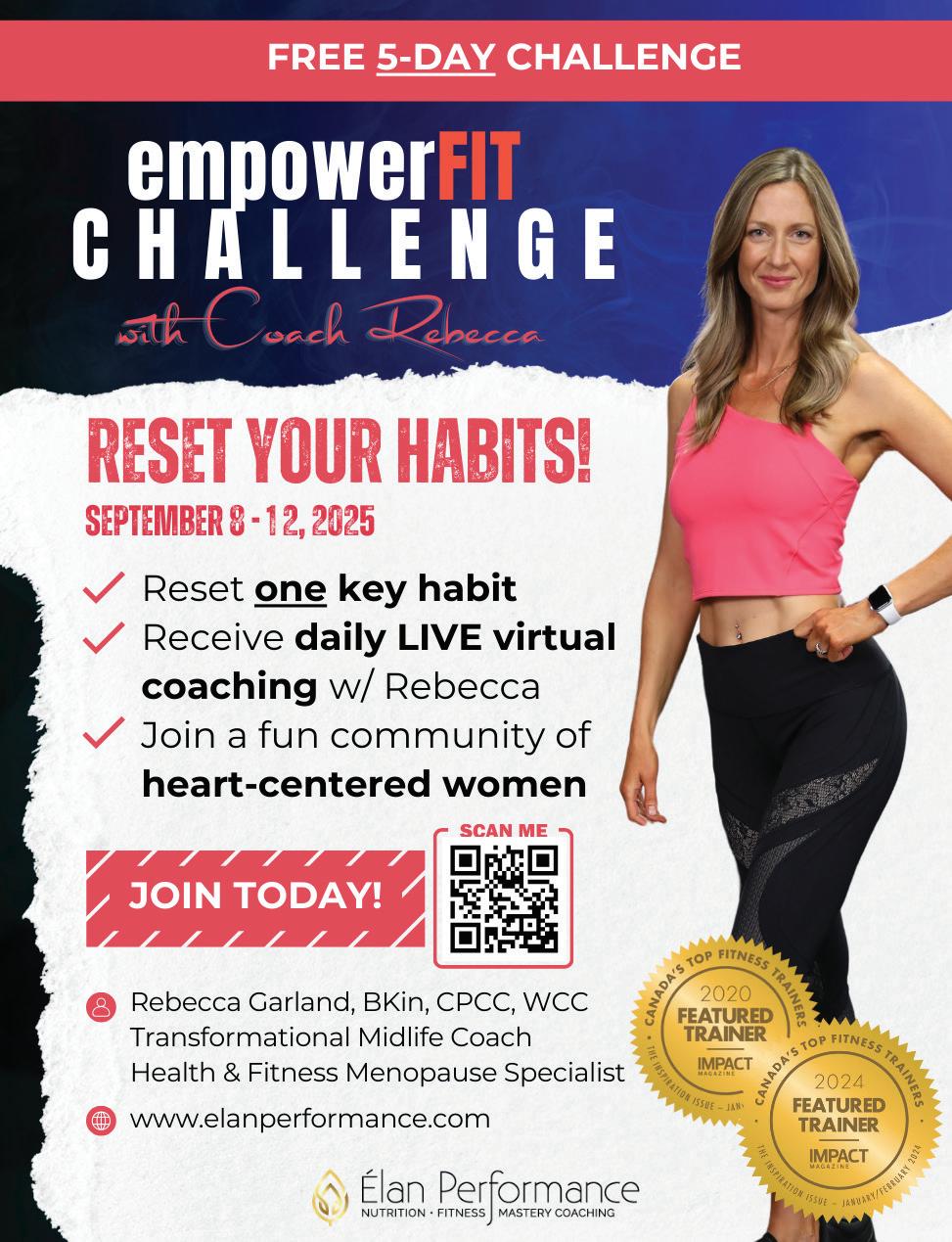




BY EMMA ROHMANN
An environmental engineer and the founder of Green at Home, a small business that helps busy families and small businesses minimize their exposure to harmful chemicals, reduce their environmental footprint, and make responsible food choices. Based in Collingwood, ON.
ECOPARENT ECOPARENT
Air pollution is often discussed in terms of outside air.
But the air inside your home can become polluted as well. The products you use and the actions you take inside can impact your exposure to indoor air pollutants.
Summer is a great time for airing out your home, which helps flush out some of the contaminants. But there are steps you can take to help improve your air quality year-round to help reduce asthma and allergy symptoms and other long-term side effects of chemical exposure. This is especially important with young children, since they breathe in more air (and more contaminants) in relation to their body weight. Since their immune systems and lungs are still developing, they aren’t as able to fight toxicity or sickness related to air pollution.
The air quality in our homes depends partly on the air quality outside and partly on what we bring into the space. The outside air quality isn’t really under your control, but you can take steps to reduce its impact on you and your family. Let’s take a look at three types of indoor air pollutants and how you can take steps to create a healthier space for your family.
Volatile organic compounds are harmful chemicals that are emitted from a variety of products, and they can be two to five times higher indoors than outdoors. They are commonly associated with paints and solvents, but they are also present in products containing "fragrance," including fabric softeners, air fresheners, and household cleaners.
While concentrations of these chemicals in any one product are low, it is not well understood how these individually low exposures impact our health over the longer term. However, many of the synthetic fragrance ingredients are known or suspected carcinogens, allergens, hormone disruptors, and asthma triggers. To reduce your exposure to VOCs, avoid products with undisclosed fragrance ingredients and choose natural personal care and cleaning products, or make your own.
When renovating or painting, choose products that are no- or low-VOC. And avoid using your oven’s self-cleaning feature as it causes the chemicals in the non-stick oven lining to off-gas. You can also add some plants that have the ability to remove chemicals from the air—check out the David Suzuki Foundation’s list from the Queen of Green of the best air-purifying plants.
Dust allergy sufferers know that humble dust can make life indoors a nightmare. One of the easiest ways to fight this kind of indoor air pollutant is to leave your shoes at the entrance to prevent dirt and debris from entering your home in the first place. But a great deal of dust is created as products slowly degrade, and studies are showing that flame retardants and other chemicals used in our furniture and electronics are ending up in household dust.
This means that dusting is actually good for your health! So, grab your damp cloths and mops every week or so to keep indoor pollutants at bay. Also, if you have a forced air system, be sure you’re using high efficiency filters to capture more outdoor air pollutants. They do need to be replaced regularly to function—at least every three months or more regularly if you have pets or there’s a lot of dust outside your home.
Radon doesn’t get a lot of attention, but it can be a significant contributor to poor indoor air quality and is a known cause of lung cancer. It is a naturally-occurring gas that can enter homes from the surrounding soil and build up over time. Health Canada published a study in 2012 that found seven per cent of homes have radon above the guideline.
The only way to know whether you are being exposed is to test your home. You can purchase a test kit to do it yourself or hire a contractor—just be sure you use a long-term test over at least 90 days and when the temperatures are cooler.
Because many air pollutants are out of sight out of mind, it’s easy to forget that what we bring into our homes (intentionally or not) could have significant impacts on our health. Making some small habit changes like making your own healthy cleaners will mean that when you’re more likely to have the windows closed and therefore more vulnerable to pollutants that stick around, you’ll have made a significant improvement to your indoor air quality and to the health of your family. Reprinted




The secret of the supercentenarian and how you can improve your longevity
BY JULIE DANILUK
A registered holistic nutritionist, best-selling author, TV host, and public speaker from Toronto, ON. JULIEDANILUK JULIEDANILUKNUTRITION
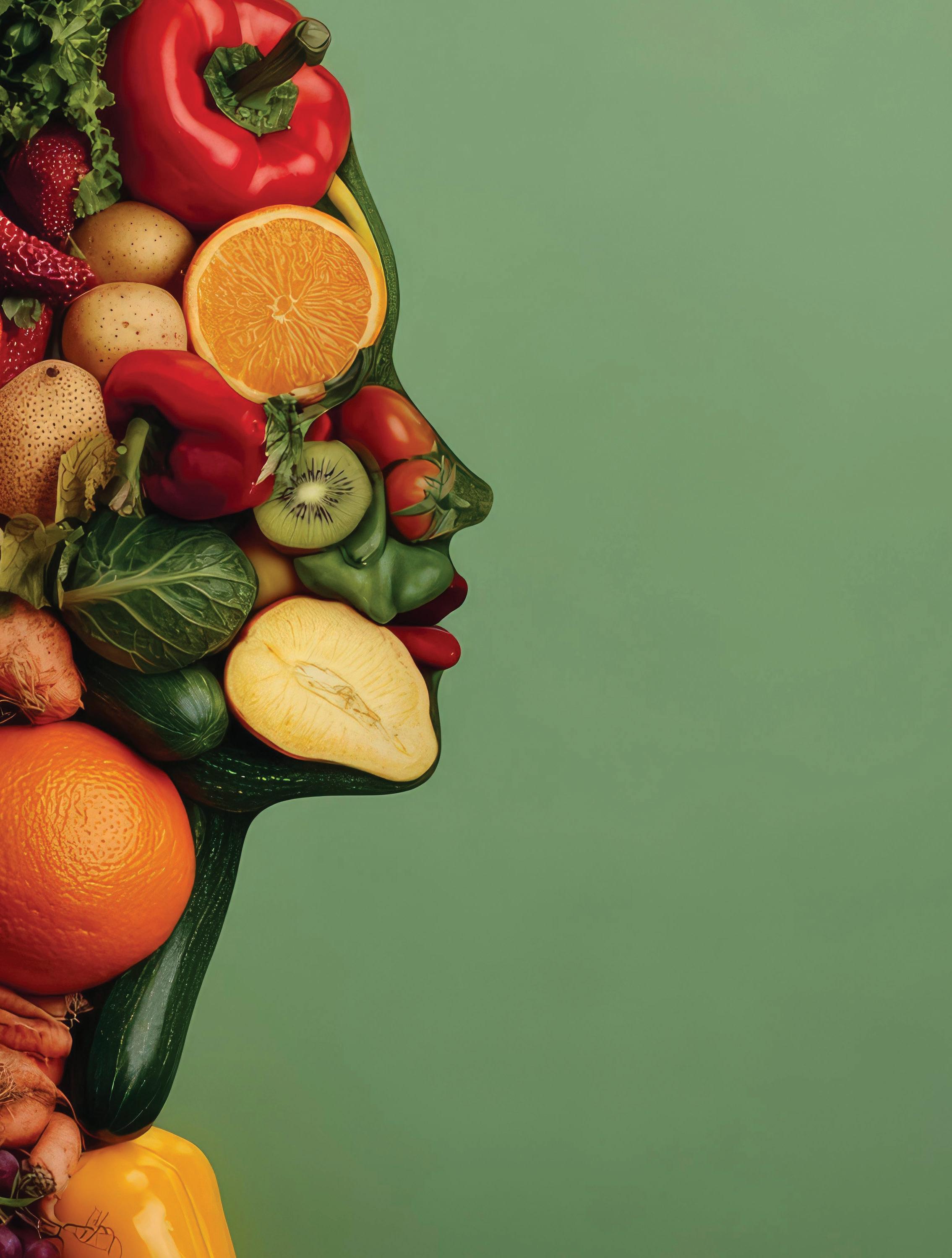
Asupercentenarian is someone who has lived to their 110 birthday or beyond. Nearly all supercentenarians are free of major age-related diseases like dementia, type 2 diabetes or autoimmune diseases. Is it luck? Genes? Or do they have habits you can apply to age gracefully?
As a holistic nutritionist and anti-inflammatory expert, I have spent my life seeking an answer to this question, and the answer is a resounding, "Yes, your choices make the greatest impact on longevity."
Dan Buettner, a National Geographic explorer and author of The Blue Zones, has found distinct lifestyle secrets to longevity that everyone living over 100 with vitality has in common. The longest living people live in regions of Greece, Japan, Italy, California, and Costa Rica.
LIFESTYLE HABITS THAT ARE COMMON AMONG LONGEVITY ZONES
Do authentic movement
Long-living people get their exercise through daily life—walking, biking, gardening, playing—not structured workouts.
Have a purpose
It's important to find a place of contribution, so you can stay engaged and positive as you age. Instead of retiring, many centenarians keep doing what they love—from tending gardens to caring for grandkids.
Love
One of the cornerstones of longevity is expressing gratitude and sharing love with your tribe. The reduction of stress dramatically reduces inflammation.
Eat anti-inflammatory food
Diets packed with anti-aging nutrients have the power to enhance and extend life. A focus on plants, fibre, and Omega-3 fatty acids is key.

FOR LONGEVITY INSPIRED BY SARDINIA, ITALY
Dandelion Greens
Dandelion greens rank high in overall nutritional value among leafy greens and are loaded with antioxidants, like polyphenols, vitamin A and vitamin C. The antioxidant potential is of particular significance for longevity because it decreases oxidative stress (a critical process in the development of chronic diseases) and slows down the aging process in your cells.
Fennel
Part of the parsley family, fennel is used as both a vegetable and a spice. It’s commonly used as a natural remedy against digestive disorders, and it is anti-inflammatory, reducing the risk of diseases and increasing antioxidant activity in the body.
Fennel helps maintain healthy cholesterol levels by increasing good cholesterol (HDL) and inhibiting the oxidation of bad cholesterol (LDL). Between those benefits and its high content in potassium, fennel is great at supporting a healthy cardiovascular system.
FOR LONGEVITY INSPIRED BY OKINAWA, JAPAN
Seaweed
Seaweeds contain many bioactive compounds and polysaccharides not found in any other terrestrial plants. Studies comparing Japanese to Western diets have linked the consumption of seaweed to a lower risk of chronic diseases such as high cholesterol, heart disease and cancers.
In particular, seaweed has been shown to reduce breast cancer risk in premenopausal women, likely due to its unique effects on hormone metabolism.
Ginger
Rich in phytonutrients, ginger has many medicinal properties, such as decreasing inflammation, cholesterol, and blood pressure, and can decrease your risk of various cancers (colorectal, ovarian, liver, skin, breast and prostate).
Gingerols, shogaol, and paradols are key compounds found in the ginger root that promote health and slow aging.
FOODS FOR LONGEVITY INSPIRED BY IKARIA, GREECE
Garlic
Garlic is a truly wonderful plant. It can kill microbes (bacteria, fungus, virus), lower blood pressure and cholesterol, thin the blood to prevent blood clots, and even prevent cancer.
What makes it so powerful is that it has a higher amount of sulfur compounds than any other species among its family. One of the most important to note is allicin, which makes garlic a terrific natural antibiotic.
Olives and olive oil are staples in the Mediterranean diet, and these countries tend to have a low incidence of chronic diseases, such as cardiovascular disease and cancers, and increased longevity and life expectancy.
Olives are high in oleic acid and phenols, both beneficial for cholesterol levels. Olive oil also contains squalene, which is responsible for lower incidence of cancers. Olive oil’s components are anti-inflammatory and play a role in decreasing the inflammation involved in the process of bone resorption in postmenopausal women, decreasing the risk of osteoporosis.
FOODS FOR LONGEVITY INSPIRED BY LOMA LINDA, CALIFORNIA
Avocados
Avocados provide vitamin K, vitamin E, potassium and magnesium, as well as B vitamins, choline, phytosterols, and healthy fats, which support a wide range of health benefits.
Regular avocado intake has shown to be beneficial at keeping cholesterol levels and body weight healthy. They are one of the few fruits that contain good levels of both vitamin C and vitamin E, along with xanthophylls, a class of carotenoids, all acting as antioxidants to protect against DNA damage. Avocados also prevent the aging of your skin due to their highly bioavailable lutein and zeaxanthin levels that protect against UV damage.
Spirulina
Spirulina is a a type of microalgae and is rich in carotenoids and antioxidant compounds. It has been reported to decrease oxidative stress and lower cholesterol levels.
Phycocyanin, a protein in spirulina, is an important ingredient, along with beta-carotenoids, which may protect against cancer due to their antioxidant action and immune-modulation characteristics. Spirulina is low in calories and high in nutrients, iodine, folate, and magnesium.
Coconut
Coconut water contains a high level of B vitamins, enzymes, amino acids, and vitamin C, while the dried kernel (copra) is high in fat and used to make oil.
The fatty acid profile of coconut is what makes it one of today’s most popular superfoods. Coconut oil is packed with medium chain triglycerides (MCTs), fats quickly used for energy or converted to ketone bodies, beneficial for brain health. Coconuts and coconut oil also contain flavonoids and other polyphenols that protect against free radicals, oxidation of LDL cholesterol, and cancer.
Here at IMPACT, we love spending time in the test kitchen, especially in the summer, when fresh ingredients and sunny vibes inspire lighter, brighter meals. Enjoy this year’s picks designed to help you stay cool, refreshed, and inspired in the kitchen all season long.

Power up your meals with the Breville Smart Oven™ Air Fryer Compact. This countertop oven offers 10 smart functions including crispy reheat, roast, and so much more. It’s perfect for healthy, high-protein cooking without the fuss. Plus, enjoy the confidence of cooking with its companion app, Breville+.
$369.99 CAD I WWW.BREVILLE.CA I BREVILLECANADA

The Nama M1 Plant-Based Milk Maker delivers barista-quality milk that’s thick, creamy, and grit-free. Its two-step blending and straining process extracts maximum flavor—no soaking required—and the selfcleaning feature makes cleanup quick, easy, and convenient.
$400 CAD I WWW.NAMAWELL.COM I NAMAWELL
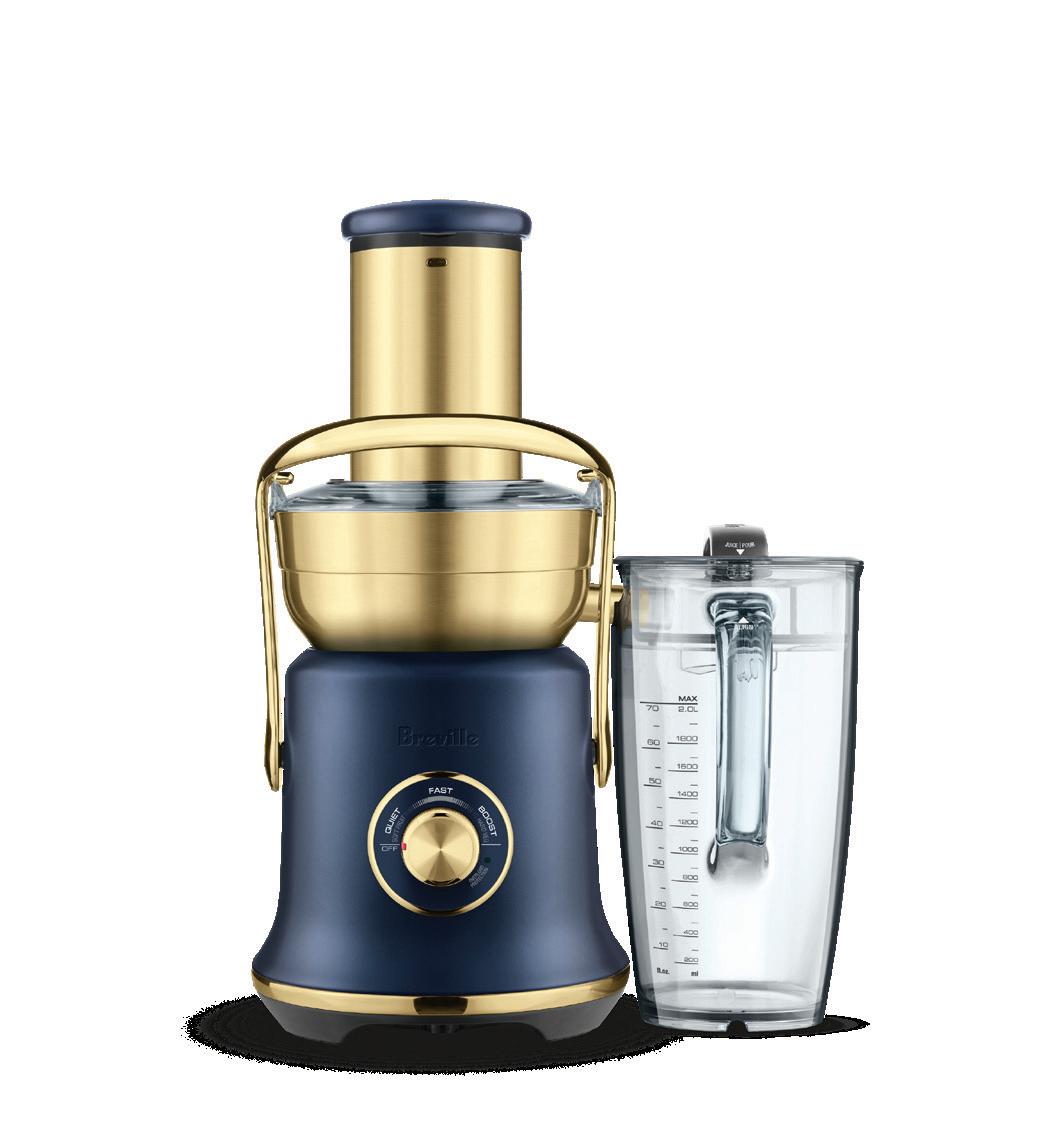
Boost your recovery with the Breville Juice Fountain™ Cold XL. This powerful juicer delivers fresh, nutrient-rich juice in seconds—perfect for your active lifestyle. Now available in the Accents Range: Brass Collection, including Damson Blue Brass, Sea Salt Brass, and Olive Tapenade Brass.
$499.99 CAD I WWW.BREVILLE.CA I BREVILLECANADA
The Cuisinart FastFreeze™ Ice Cream Maker transforms simple ingredients into frozen favourites in under five minutes. With five built-in modes, it’s easy to create ice cream, sorbet, milkshakes, slushies, and your own custom mix-ins. Just chill your mixture, choose a setting, and press to churn—then serve up smooth, scoopable perfection everyone will love.
$179.99 CAD I WWW.CUISINART.CA I CUISINARTCANADA
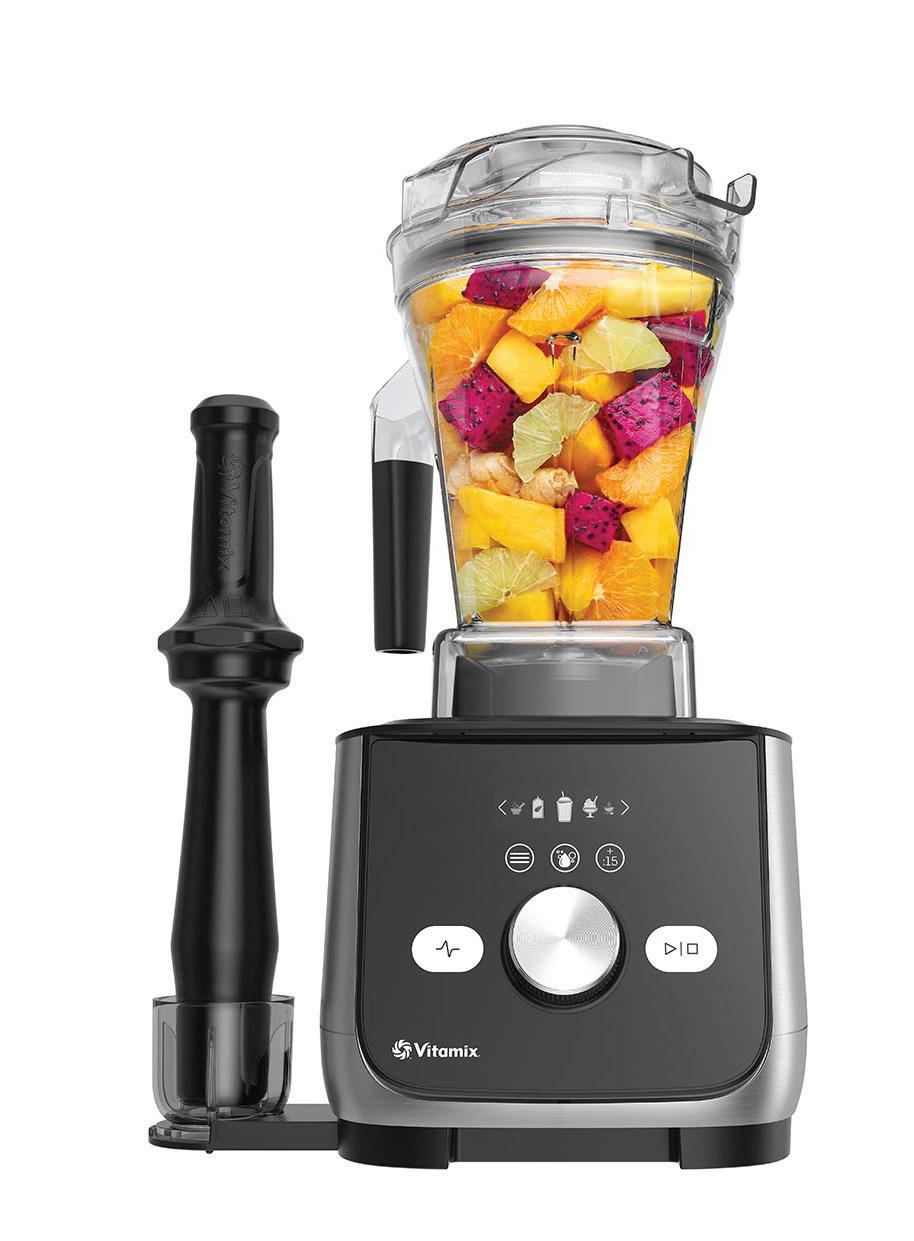
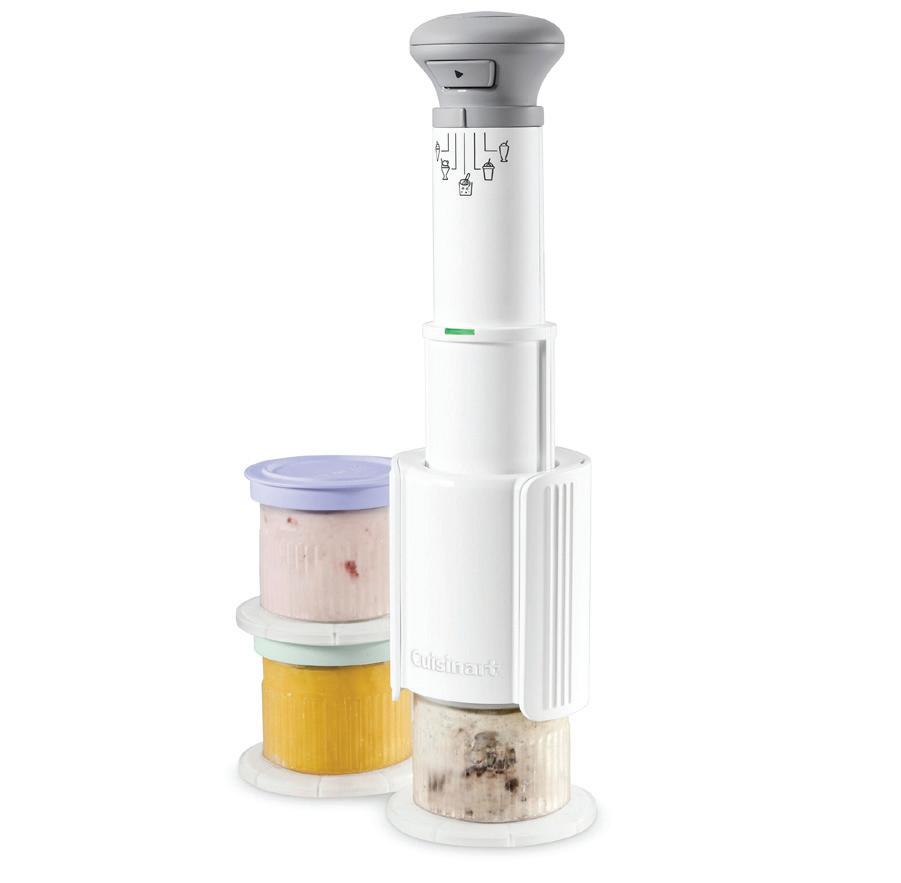
The Ascent X Series is Vitamix’s premium blender line. Its reimagined design combines an intuitive touch interface with a sophisticated, timeless look that feels at home in any home. It features a 1.4-litre container, an automatic self-cleaning program, and ten blending programs (smoothies, frozen desserts, soups, frozen cocktails, dips & spreads, smoothie bowls, frappés, nut butters, non-dairy milks, and spice griding).
$1099 CAD I WWW.VITAMIX.COM I VITAMIXCA
Storm Blue captures the essence of sky and sea. This intense blue reflects both the strength of nature and the serenity that comes from its contemplation, bringing a touch of that authentic beauty into your home and creating a space that inspires calm and introspection.
$329 CAD 2-SLICE TOASTER I $329 CAD ELECTRIC KETTLE I $349 10-CUP DRIP COFFEE WWW.SMEGSHOP.CA I SMEGCANADA




Unleash your craving for effervescence with the Water Gasifier. Designed to combine innovative functionality and distinctive design, making sparkling water is a simple, intuitive and refined gesture thanks to the uniqueness of its front knob. Requires no electricity—convenient to place anywhere.
$249 CAD I WWW.SMEGSHOP.CA I SMEGCANADA

BY ANDREA KATZ
Certified integrative nutrition coach, fitness instructor and owner of Best You Nutrition, from Winnipeg, MB.
Let’s be honest—if you’re over the age of 40, you’ve likely had days where you walk into a room and completely forget why. Or you feel like your brain is running on overdrive. Or stress has you feeling anxious, scattered, and downright exhausted.
You’re not alone. In fact, 38 per cent of Canadians say they’ve felt stressed to the point where it had an impact on their daily life at least once, and 57 per cent say mental health is among the biggest health issues in the country. Overall, 66 per cent of women reported being stressed, compared to 58 per cent of men.
When it comes to feeling anxious, one in 10 Canadians have experienced high levels of anxiety and/or depression, and one in four Canadians will receive a lifetime diagnosis of anxiety.
As we move through our 40s and beyond, hormonal shifts for both men and women start to influence everything from sleep to mood to memory. Estrogen, for instance, plays a big role in brain function—so when it fluctuates, you might notice it in your clarity and focus.
Add in stress from juggling work, family, deadlines, caregiving—you name it—and your nervous system can get stuck in fight-or-flight mode, draining your mental energy. But the solution isn’t more coffee or pushing through. It’s about nourishing your body and brain in a way that supports your changing needs, and there are things you can do to support your brain and bring back that mental spark.
The great news? Food is one of your most powerful allies.
The brain uses around 20 per cent of your daily energy—it’s a hungry, high-performance organ. It needs very specific nutrients to function well, especially under stress.
Research shows:
• Omega-3 fats reduce inflammation and support brain cell communication.
• B vitamins help nervous system function and energy production.
• Magnesium helps quiet the nervous system and supports better sleep.
• Adaptogens (like ashwagandha and rhodiola) can help balance the stress response.
• A healthy gut microbiome helps regulate mood and brain health through the gut-brain connection.

What foods are best for mental clarity? Let’s dive into the top 10 foods for brain power and mental clarity.
Green, Leafy Vegetables

2. Berries

Leafy greens like kale, spinach, and broccoli are loaded with brain-boosting nutrients like vitamin K, lutein, and folate. These nutrients are key for slowing cognitive decline and promoting healthy brain function. Including these vegetables in your diet helps maintain mental clarity and may even delay age-related cognitive impairments.
Berries, particularly blueberries, are rich in flavonoids and antioxidants, which have been shown to enhance memory and improve communication between brain cells. Research from Harvard found that women who consumed two or more servings of berries each week delayed memory decline by up to two and a half years. Add a handful of these vibrant fruits to your meals to keep your brain sharp.
3. Tea & Coffee

4. Walnuts

5.

Both tea and coffee offer more than just a caffeine boost—they're linked to improved memory, focus, and mental performance. Caffeine enhances brain function, and studies show it can also help solidify new memories. A Johns Hopkins University study found that participants who took caffeine after studying a series of images performed better on memory recall tests the next day.
Walnuts are packed with omega-3 fatty acids, particularly alpha-linolenic acid (ALA), which plays a crucial role in cognitive health. Studies show that eating walnuts can improve cognitive test scores, particularly memory. They are also rich in antioxidants and healthy fats, which support brain function and help protect against cognitive decline.
The bright yellow spice turmeric contains curcumin, an antioxidant with the ability to cross the blood-brain barrier and directly benefit brain health. Curcumin has been shown to enhance memory, ease depression, and stimulate the growth of new brain cells. It's also known for its anti-inflammatory properties, which may help slow age-related mental decline.

7.
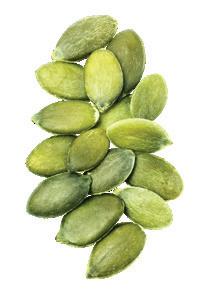
Packed with vitamin K and other antioxidants, broccoli helps protect the brain from oxidative stress and supports healthy cognitive function. The vitamin K in broccoli is essential for forming sphingolipids, a type of fat that’s densely packed in brain cells. Regular consumption can contribute to better memory and cognitive status.
Pumpkin seeds are rich in nutrients such as zinc, magnesium, and copper, all of which are vital for brain health. Zinc, for example, supports nerve signalling, and magnesium is essential for memory and learning. These nutrients protect the brain from neurodegenerative diseases and contribute to mental clarity.
8. Dark Chocolate

Dark chocolate, especially with 70 per cent or more cocoa, is packed with flavonoids and antioxidants that help improve memory and mood. Research suggests that eating dark chocolate can enhance cognitive function and may even support gut health, which is closely linked to brain function. Plus, it has a prebiotic effect, improving emotional states via the gut-brain connection.
9. Green Tea
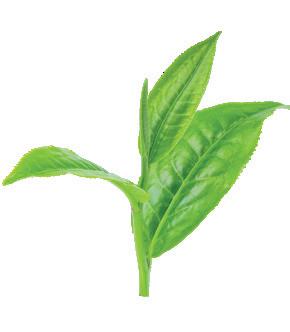
10. Nuts
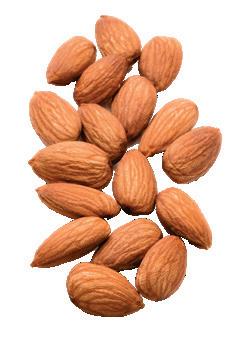
Green tea contains caffeine for a mental boost but also has L-theanine, an amino acid that promotes relaxation and reduces anxiety. The combination of these compounds can help improve focus and memory while reducing stress. Green tea is also rich in polyphenols, which protect the brain from mental decline and support long-term cognitive health.
Nuts are rich in healthy fats, antioxidants, and vitamin E, all of which support brain health. Vitamin E, in particular, protects brain cells from oxidative damage and may help slow the progression of cognitive decline. Walnuts, in particular, offer an extra boost thanks to their omega-3 fatty acids, which are known for their anti-inflammatory properties and cognitive benefits.
Brain fog, anxiety, and stress don’t have to be your new normal. Your 40s and beyond can be a time of incredible clarity and confidence— with the right support, food choices and healthy lifestyle habits.
BY ASHLEY LEONE

Travelling as an athlete can be exhilarating yet challenging, especially when maintaining optimal nutrition. Whether you're jet-setting for competitions or simply exploring new training grounds, prioritizing your dietary needs is essential for peak performance. Here are four simple tips to help athletes master their travel nutrition game.
Planning is the key to success and the cornerstone of adequate travel nutrition for athletes. Before embarking on your journey, take the time to research local eateries, grocery stores, and dining options that align with your nutritional goals.
Look for restaurants that offer a variety of nutrient-dense meals, and don't hesitate to reach out to hotels or accommodations to inquire about special dietary requests. Take the time to make a handful of restaurant reservations and avoid wasting energy wandering around trying to find an open table.
Does your hotel offer an early breakfast on the morning of your event? If not, you may need to strategize Plan B.
Keep familiar foods in your diet. If you have found a routine that works for you, stick to it before your race. Do not introduce anything new the day of or even the days leading up to the competition. Keeping your body comfortable prevents any digestive issues that may arise.
Consider packing your favourite game day food items to be sure you save time searching a strange city for them. Portable options such as nuts, seeds, protein bars, and dried fruits can be lifesavers when healthy choices are limited.
You may also want to prep your meals for a travel day to ensure you can access nutritious options, even in transit or during busy schedules.
Hydration is crucial for athletes, especially when travelling. Long flights, changes in climate, and intense training sessions can all contribute to dehydration, which can negatively impact performance and recovery.
Make it a priority to drink plenty of water throughout your journey. Invest in a reusable water bottle and carry it wherever you go. Opt for water over sugary beverages or alcohol, as these can dehydrate the body further.
If you're travelling to a location with questionable water quality, consider bringing along a portable water purifier or purchasing bottled water from trusted sources.
No two athletes are alike, and what works for one person may not work for another. Pay attention to your body's cues and adjust your nutrition plan accordingly. If you feel sluggish or tired, consider whether you're getting enough calories and nutrients to support your activity level.

If you travel to a different time zone, avoid missing meals and use certain foods to help reset your internal clock. Caffeine, particularly when taken early (at 8 a.m.), can help speed up resynchronization.
Meal timing is also one of the best shortcuts to adjust to a new time zone because feeding and fasting cycles are primary cues for your body.
Aim to eat every three to four waking hours. You may choose a snack or a meal depending on your appetite. Choose to eat a highcarbohydrate, low-fat meal before bed to enhance your ability to fall asleep and improve slow-wave sleep, which is helpful for athletes' recovery.
Travelling for competitions can be exciting, but it’s important to keep poor travel nutrition from derailing months of training . Indulge in local cuisine and cultural delicacies, but be mindful about avoiding poorly cooked food, limiting fried food and limiting high-fibre food before your event.
Trust your instincts and honour your body's needs to achieve optimal performance on and off the field, trails, or roads.
Mastering travel nutrition as an athlete can be simple. By planning, packing your favourite food, staying hydrated, and listening to your body, you can fuel your adventures and crush your fitness goals wherever your travels take you. Consistency is critical, so prioritize healthy choices even when life takes you on the road.
• Eat familiar foods.
• Focus on a slightly higher carbohydrate portion.
• Include simple, bland foods that you easily tolerate.
• Avoid high-fat foods.
• Limit high fibre foods. Many athletes prefer to limit vegetables the evening before an event to minimize race-day gastrointestinal issues.
• Don’t skip breakfast! Eat approximately three to four hours before your race.
• Choose high carbohydrate, low fat, low fibre and moderate protein foods.
• Include simple, bland foods that you know you easily tolerate. Think: oatmeal with banana.
• Depending on the timing of your event, you may need a more substantial snack if your race takes place more than four hours after your breakfast.
• Snack on foods consisting of simple carbohydrates one hour to 20 minutes before the race.
• Consider frequent, small snacks. Having multiple small portions keeps you feeling light and satiated. Think: a banana or simple granola bar.
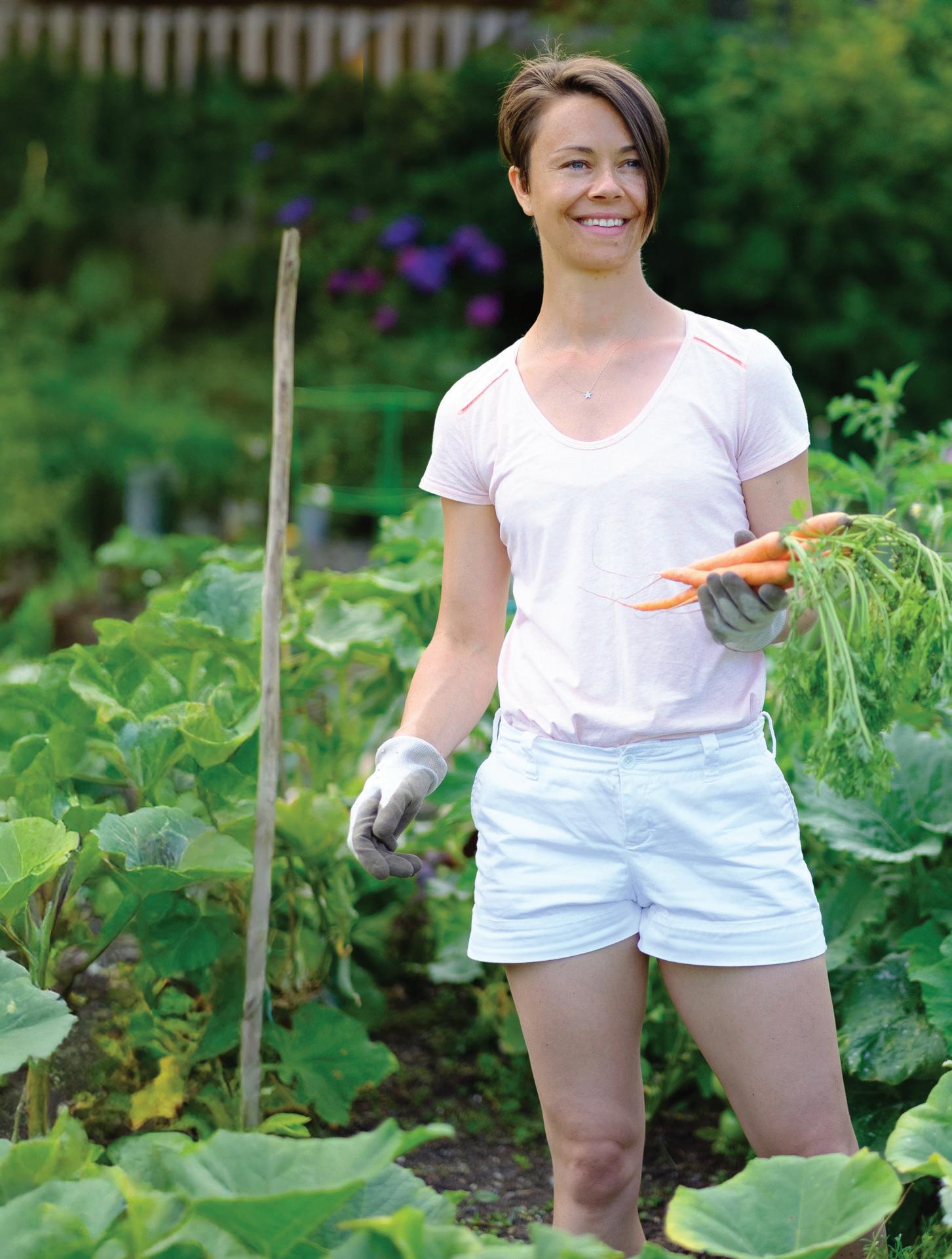
BY ZUZANA FAJKUSOVA JENNA JONES
Author of The Vegan Weight Loss Manifesto and Plant-Powered Athlete, from Vancouver B.C. Through nutrient-dense plant-based nutrition, mindful movement, and sustainable living, Zuzana empowers others to thrive with vitality and compassion.
ACTIVEVEGETARIAN
There’s a quiet kind of magic that happens when we begin to eat with the seasons. It’s not just about food— it’s about relationships. A relationship with the land, with the growers, with the cycles of nature, and with our own bodies. It’s about slowing down enough to notice what’s naturally being offered and letting that guide what nourishes us.
As summer unfolds, nature is in her full expression—abundant, alive, generous. Her gardens, orchards, and wild places are full of colour and vitality. Eating seasonally at this time of year is less of a strategy and more of a celebration. And whether you’re growing your own, visiting your local farmers' market, or simply choosing what’s fresh and local at the store, you’re part of that celebration too.
• Nature doesn’t offer everything all the time, and that’s part of her wisdom. She gives us what we need, when we need it—cooling foods in the heat, grounding ones as we move into colder months, bitter greens when it’s time to clear and renew.
• Eating this way helps us return to a natural rhythm that supports not only our physical health, but our deeper sense of connection. It is a way of remembering that we are not separate from nature, but an expression of it.
Nutrient Density: Seasonal produce is harvested at its peak, which means it’s more flavourful and often more nutrient-rich.
The sun-ripened tomato or freshly picked peach offers something no imported, early-harvested version can replicate.
Freshness and Taste: Foods that are in season taste better. They carry the essence of the season they grew in—the warmth of summer, the coolness of spring, the richness of autumn.
Affordability: When fruits and vegetables are in abundance, they are typically less expensive. Eating with the seasons is not only nourishing but also economical.
Sustainability: Seasonal foods are often grown closer to home, reducing the environmental impact of long-distance transportation and storage.
Energetic Balance: The qualities of seasonal foods naturally support the body in its response to the climate—cooling foods in summer, warming foods in winter. This alignment fosters balance and resilience.
Summer foods are vibrant, juicy, and full of life. They support hydration, lightness, and energy—perfect for these long, sun-filled days. Below are some of the gifts most commonly in season across North America during the summer months: This is the season for crisp salads, lightly grilled veggies, juicy fruit plates, and refreshing herbal infusions. Keep meals simple, fresh, and colourful. Let your senses lead the way.
Summer Fruits
• Strawberries
• Blueberries
• Raspberries
• Cherries
• Peaches, nectarines, apricots
• Plums
• Melons (watermelon, cantaloupe, honeydew)
• Grapes
• Figs
• Tomatoes
Summer Vegetables
• Cucumbers
• Zucchini and summer squash
• Bell peppers
• Eggplant
• Corn
• Green beans
• Fresh greens (lettuce, arugula, romaine)
• Fresh herbs (basil, dill, cilantro, parsley, mint)
There are a few foods that seem to transcend the seasons and are often available year-round—especially in warmer climates or through ethical sourcing. They can still play a beautiful role in a seasonal kitchen:
• Mushrooms
• Bananas & plantains
• Ginger
• Turmeric
• Avocados
• Papaya
• Pineapple
• Young coconut
• Jicama
• Wheatgrass
• Culinary herbs like parsley, chives, cilantro, and dill
When you can, choose organic and fair-trade sources—honouring both the spirit of nature and the hands that grew them.
If you’re choosing where to invest in organic produce, a helpful guide comes from the Environmental Working Group. Their Dirty Dozen and Clean 15 lists are based on pesticide testing in conventionally grown produce.
These lists aren’t here to overwhelm but to support you in making more conscious choices—especially when shopping on a budget.
Let this guide you with a sense of empowerment, not pressure. Even small changes rooted in awareness can ripple out in meaningful ways.
Dirty Dozen (Choose organic if possible)
• Strawberries
• Spinach
• Kale, collards, and mustard greens
• Grapes
• Peaches
• Pears
• Nectarines
• Apples
• Bell and hot peppers
• Cherries
• Blueberries
• Green beans
Clean 15 (Lowest pesticide residues)
• Avocados
• Sweet corn (non-GMO)
• Pineapple
• Onions
• Papaya (non-GMO)
• Frozen peas
• Asparagus
• Honeydew melon
• Kiwi
• Cabbage
• Watermelon
• Mushrooms
• Mangoes
• Sweet potatoes
• Carrots
When we begin to look at food not only as fuel but as a relationship, everything shifts. A simple peach eaten in season becomes an act of presence. A basket of greens from the farmers’ market becomes a way to root into community. A tomato grown in your garden becomes a moment of joy and gratitude.
Seasonal eating invites us to slow down, listen, and remember that we are part of the living world. It’s not about perfection—it’s about returning. Again and again. To the garden. To the soil. To the seasons. To the body. To the breath.
Wherever you are, begin there. One meal, one visit to the market, one harvest at a time.
RECIPE AND PHOTOGRAPHY BY RONI ZAIDE
A Calgary-based vegan chef, food storyteller, author of two cookbooks and cooking class instructor focusing on nutrient-dense and delicious plant-based recipes.
RONISKITCHEN RONIS.KITCHEN.FOOD.LOVE
Avibrant, aromatic drink that blends the zesty brightness of lemon with the soft floral notes of rose, and the fresh, subtle spice of basil creating a uniquely fragrant and revitalizing summer beverage. This unexpected trio creates a beautifully balanced beverage that’s both uplifting and soothing. Served over ice it’s perfect for those warm days when you want something cooling and a little sophisticated!

Prep Time – 5 minutes
Serves 2-4
• 4 cups cold water
• ½ cup basil leaves
• ¼ cup rose water
• 3 Tbsp. lemon juice
• 2 Tbsp. cane sugar
1. Place all ingredients (except for rose petals) in a blender and blend well.
2. Strain through a fine sieve.
3. Serve chilled or over ice.
Nutrition facts per serving
Calories 27; protein 7 g; fat 0 g; carbs 28 g.

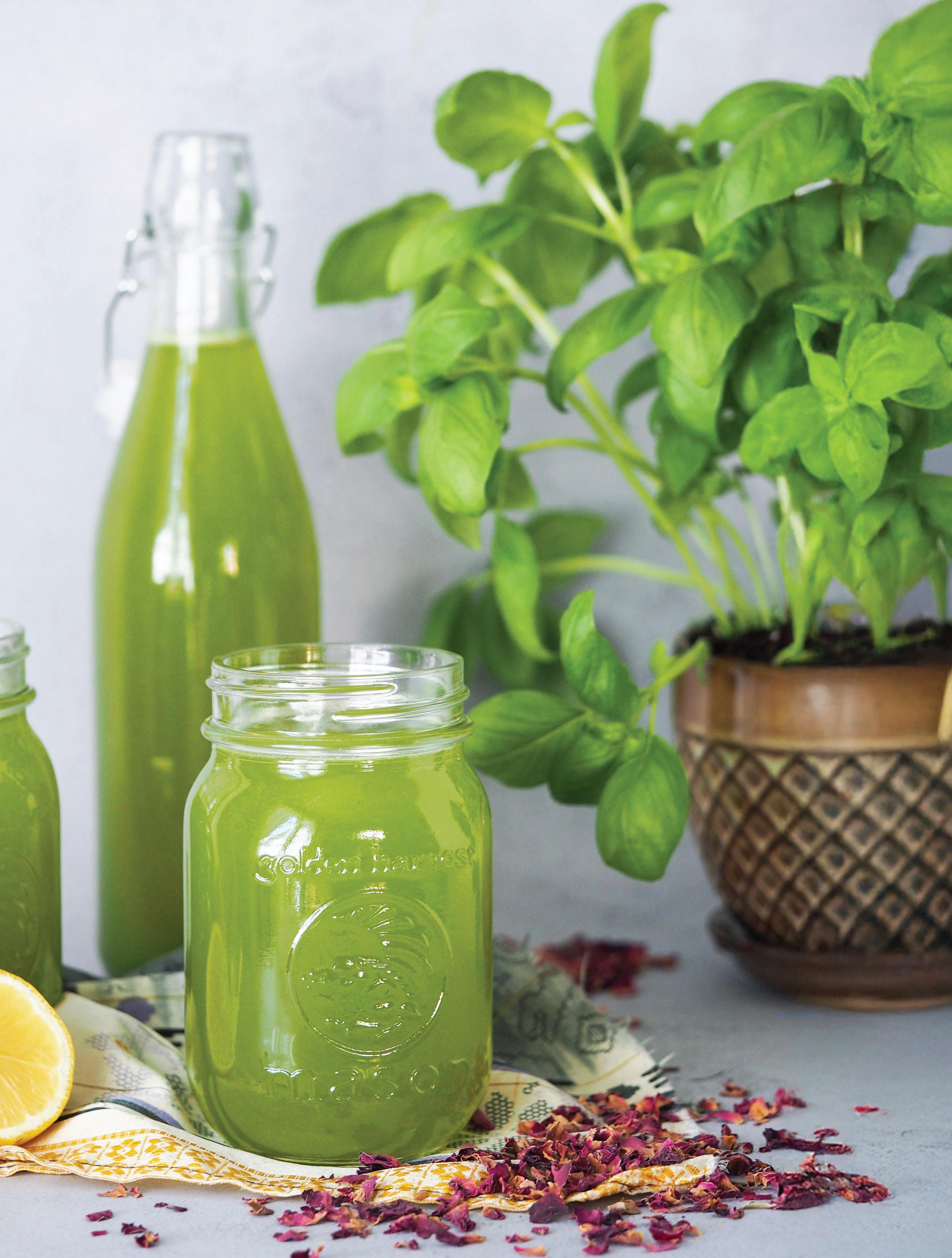
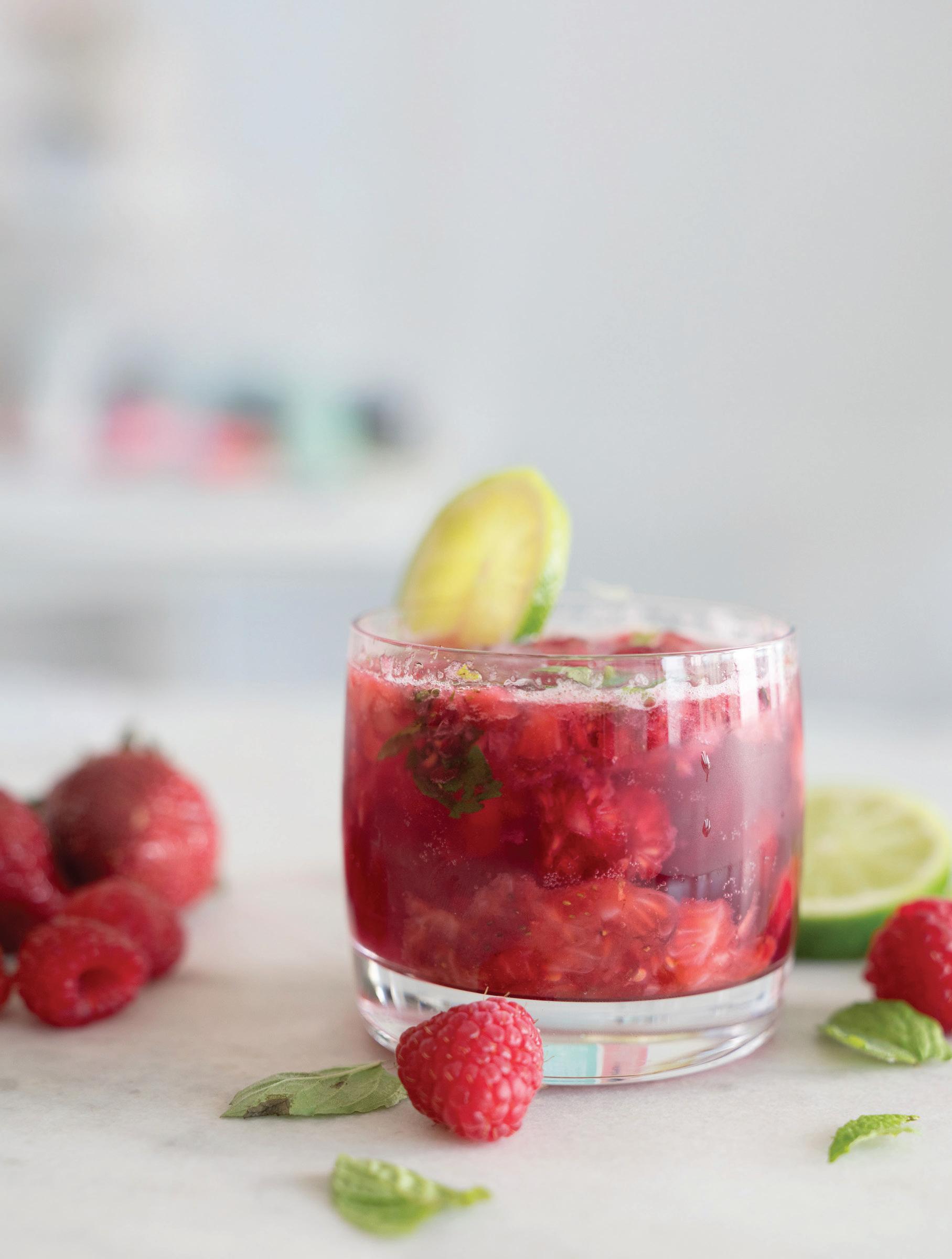

A refreshing, fizzy burst of berry bliss with no booze, just buzz!
RECIPE BY JOY MCCARTHY WALKER JORDAN
A holistic nutritionist and founder of JoyousHealth.com, an award-winning blog and co-founder of Hello Joyous, an organic, plant-forward beauty brand with a rock-solid mission: to help people find more joy in the everyday. Based in Toronto, ON.
JOYOUSHEALTH | HELLOJOYOUS JOYOUSHEALTH
Stay refreshed and energized with this vibrant mocktail, perfect for summer or any time of year. Bursting with the bright, juicy flavours of strawberries and raspberries, it’s a delicious way to hydrate. Enjoy the gut-loving benefits of kombucha, the digestive perks of fresh mint, and a zesty squeeze of lime to tie it all together. One sip—or even just the aroma—will have you coming back for more, and that’s a very good thing!

Prep Time – 5 minutes
Serves – 1
INGREDIENTS
• 1 strawberry
• 3 - 4 raspberries
• 8 mint leaves
• 1 cup kombucha (plain, raspberry or mixed berry)
• 1 wedge of lime, freshly squeezed
• Ice, to desired preference
DIRECTIONS
1. Wash strawberry and raspberries thoroughly.
2. Place strawberry, raspberries and mint leaves into the cup you will be drinking out of and muddle (mash with the end of a wooden spoon) until broken down (can still be a bit chunky).
3. Top with kombucha, leaving a bit of room for ice.
4. Add ice and a squeeze of lime. Stir. Garnish with a wedge of lime.
5. Be refreshed!
*Nutrition facts per serving Calories 40; protein 1 g; fat 0 g; carbs 12 g.
Gluten-free and fat-free, these pickled delights will elevate any meal or charcuterie board
RECIPE AND PHOTOGRAPHY BY RONI ZAIDE
A Calgary, AB-based vegan chef, food storyteller, author of two cookbooks and cooking class instructor focusing on nutrient-dense and delicious plant-based recipes.
RONISKITCHEN RONIS.KITCHEN.FOOD.LOVE
These pickled beets and turnips are as easy to enjoy as they are delicious. Ready to eat straight from the jar, they offer a perfect balance of tangy flavour and a satisfying crunch. Whether you're topping a salad, adding zip to a sandwich, or building a charcuterie board, they’re a simple way to boost taste without any prep.
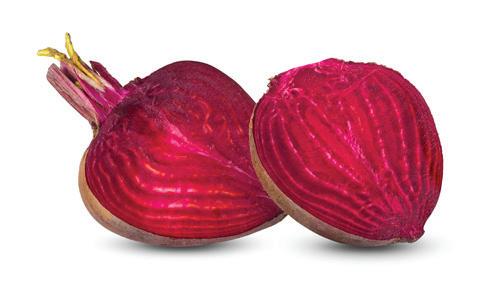
Prep Time – 10 minutes
Wait Time – 1 week
Makes 1 x 500 ml jar
INGREDIENTS
• 1 beet, peeled and sliced
• 2 turnips, peeled and sliced
• 2 garlic cloves
• 1 cup warm water
• 1 tsp. sea salt
• 1 tsp. apple cider vinegar
• 1/2 tsp. black peppercorns
DIRECTIONS
1. In a bowl, combine water, salt, and apple cider vinegar and mix well.
2. Place the beet and turnip slices in a 500 ml jar and cover with water mixture, leaving 1 cm of air at the top.
3. Add garlic and peppercorns, then loosely place the lid on top of the jar. The lid should only gently cover the jar, and not be fastened.
4. Place the jar on a plate* and leave it on the counter, away from direct sunlight, for three days.
5. After three days, tightly close the lid and transfer the jar into the fridge for at least four more days, and store for consumption for up to three months.
*The plate will catch any liquids that may overflow in the fermentation process.
Nutrition facts per serving (a few slices) Calories 10; protein 9 g; fat 0 g; carbs 7 g.

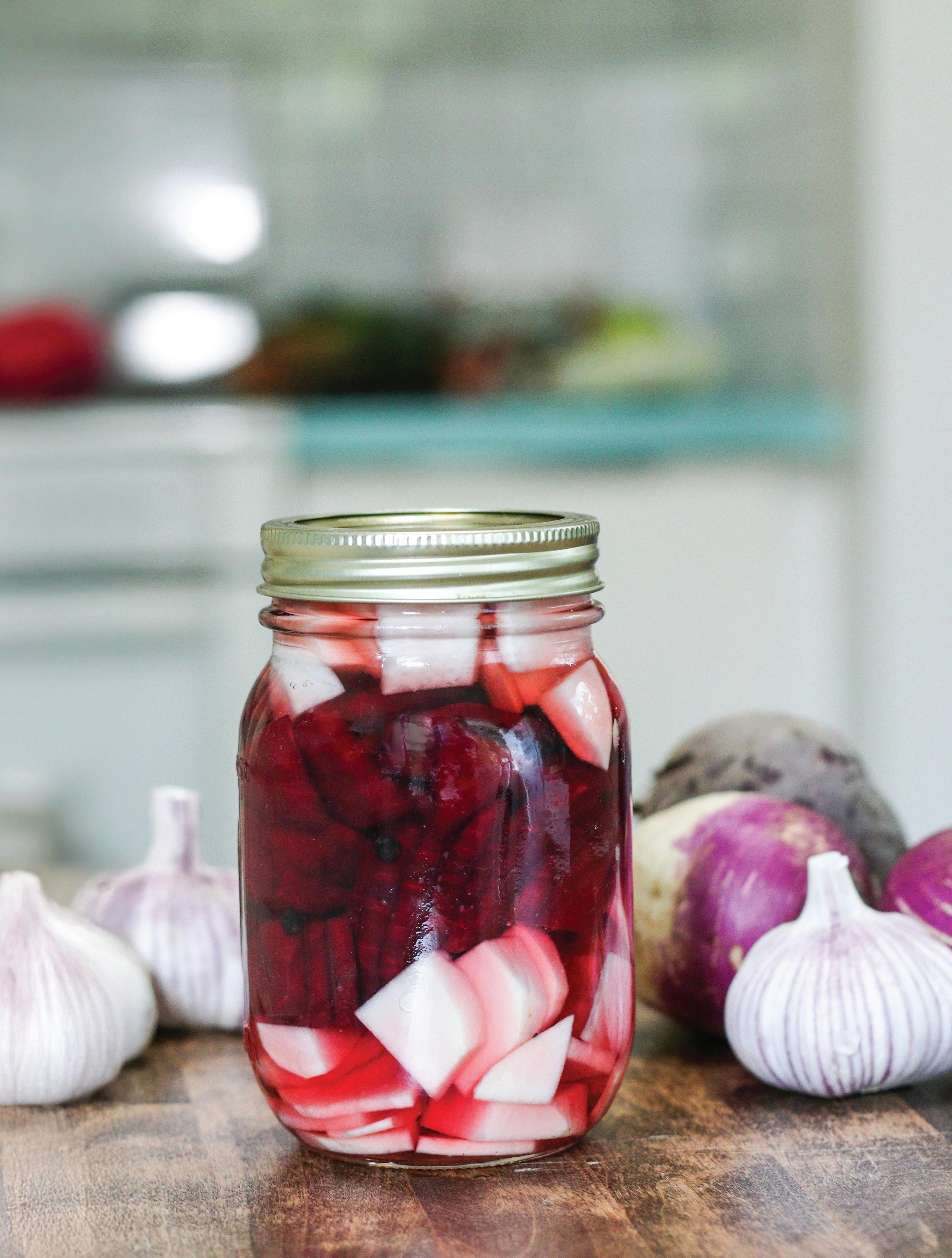
BY SCOTT CRUICKSHANK JOHN KASAIAN
A Calgary, AB writer covering all levels of sport for websites, newspapers, and magazines all over Canada.
SCOTTLCRUICKSHANK
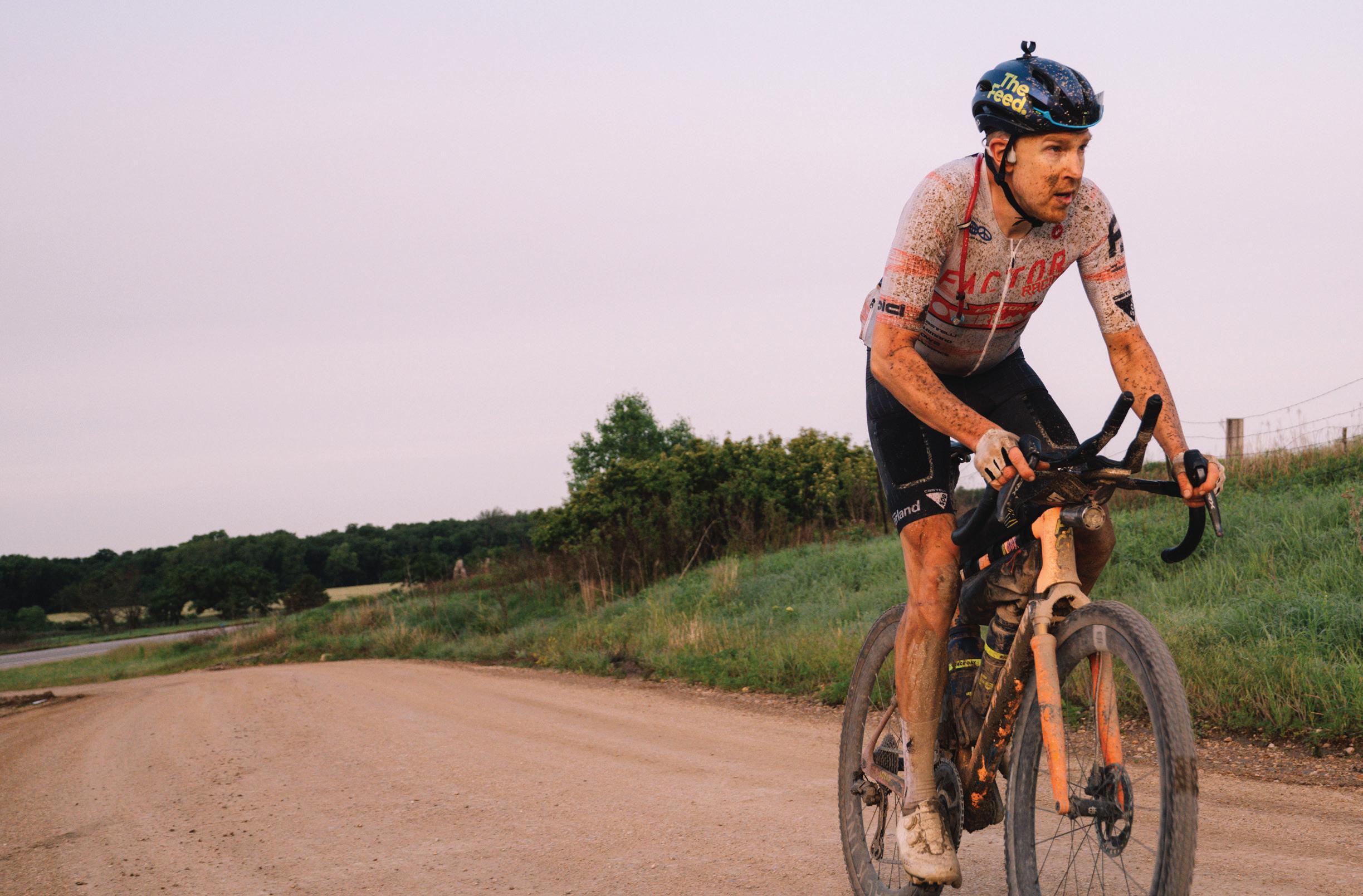
Some folks relish summertime trips to the family cabin. Others delight in regular junkets to Disneyland. “Those,” Rob Britton notes without judgment, “are nice, safe things.” Nothing wrong with relaxing routines—for most people.
“But for me? I really enjoy new experiences,” he says. “Doing the same thing over and over is boring. We have a finite amount of time—that’s just a fact.”
Fitted with a ready-or-not mentality, Britton is one adventurous soul, which is why the Victoria resident’s juices had been frothing after a decade as a professional road cyclist.
“It’s like Groundhog Day,” he says. So, four years ago, he heaved himself into the wild world of gravel racing. “I wanted to test what I could do.”
In May, the 40-year-old got his answer when he captured the highly regarded Unbound Gravel XL in Kansas. To conquer 563 punishing and unsupported kilometres, Britton needed less than 18 hours, averaging 32.4 km/h. En route to shredding the course record, he added to his well of tall tales—wheeling over a badger, chasing down cycling legend Lachlan Morton.
Dominating the longest distance of the world’s premier gravel event earned him headlines. “I have garnered 10 times more notoriety and public interest by winning the XL—much more than my previous road racing career combined,” he says, chuckling.
However, not all of the athlete's plunges into the unknown have turned out so well.
Britton’s maiden bikepacking venture was eye-opening, especially for someone who’d never experienced even one overnight excursion. But with 60 pounds of gear strapped to his bike, he off-roaded through the Rocky Mountains, grunting his way from Calgary, Alta to Port Renfrew, B.C., in 2018. “Kind of hilarious—going from zero to 100,” he says of the 10-day education. “Bikepacking was not as easy as the internet and Instagram made it appear.”
Then there was the 2022 BC Epic, featuring 1,000 off-road kilometres between Merritt and Fernie. “No real prep work. I just jumped in headfirst,” says Britton, who nevertheless posted the fastest known time—two days, nine hours—while fundraising for the Wirth Foundation, which offers access to mental health services for those in need.
“It was a terrible idea.”
A much better idea? Taking the tradition of a gruesome lateseason slog with his chums—in December!—and transforming it into a popular community event. Christened The Last Ride, it always sells out, despite the ringleader’s deviously plotted routes. But even Britton has limits. His open-mindedness stretches only so far.
For instance, he has no interest in the Tour Divide, a selfsupported 4,400-kilometre mountain-bike ordeal from Banff, Alta., to Antelope Wells, N.M. “That would break you so permanently. I’m wrecked enough as it is—I don’t need more stuff to drag me down. So, a resounding no.”
Laughing, Britton pauses. “Well, who knows?”
For a guy who thrives on the unexpected, never say never.



Up to 486 kms of range
300 HP dual-motor AWD
33-inch curved LED display

Standard hands-free Super Cruise Up to 513 kms of range
500 HP dual-motor AWD
33-inch curved LED display
Available hands-free Super Cruise Up to 491 kms of

615
33-inch curved LED display
Standard hands-free Super Cruise


55-inch curved LED display
Standard hands-free Super Cruise





